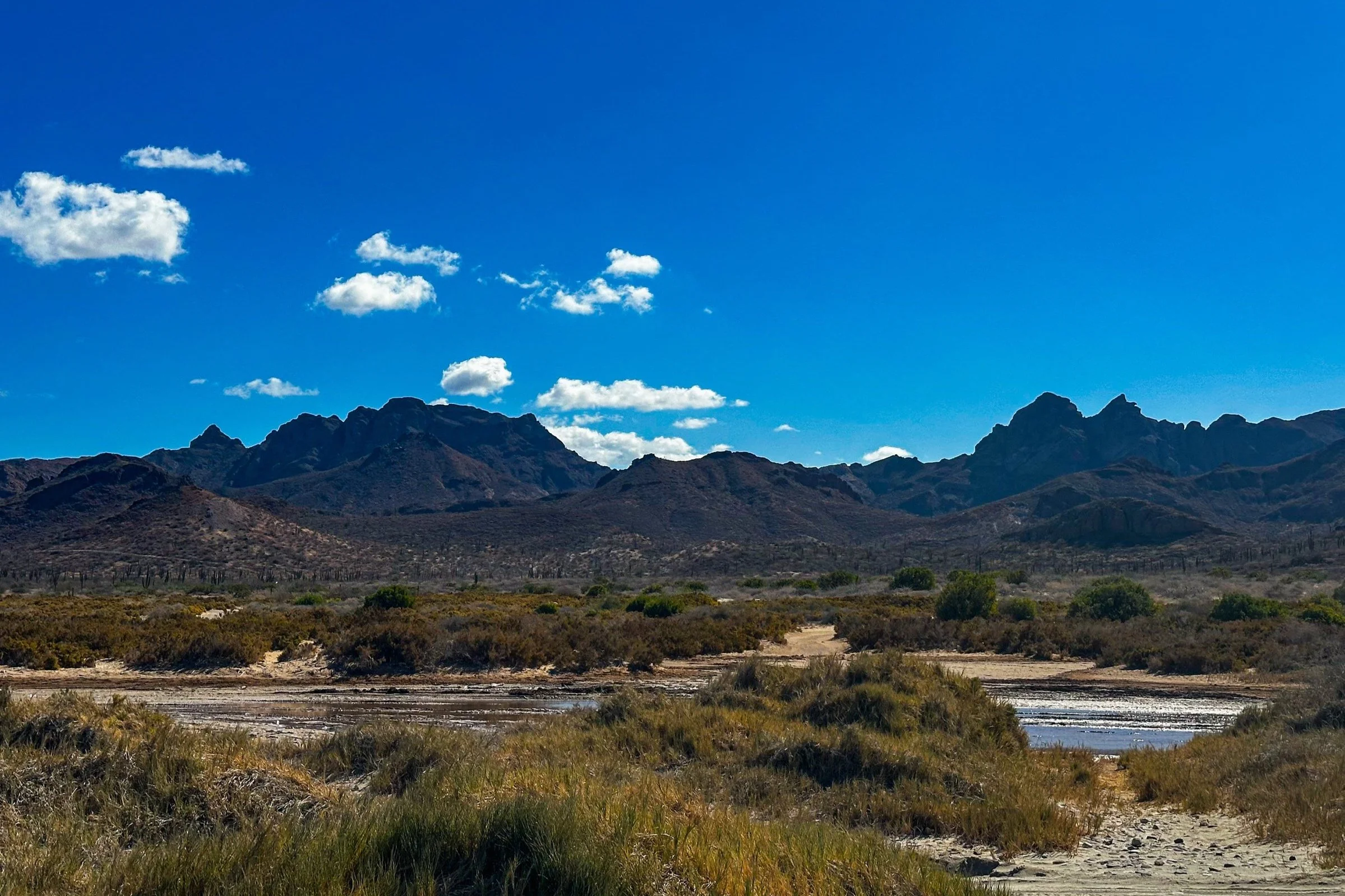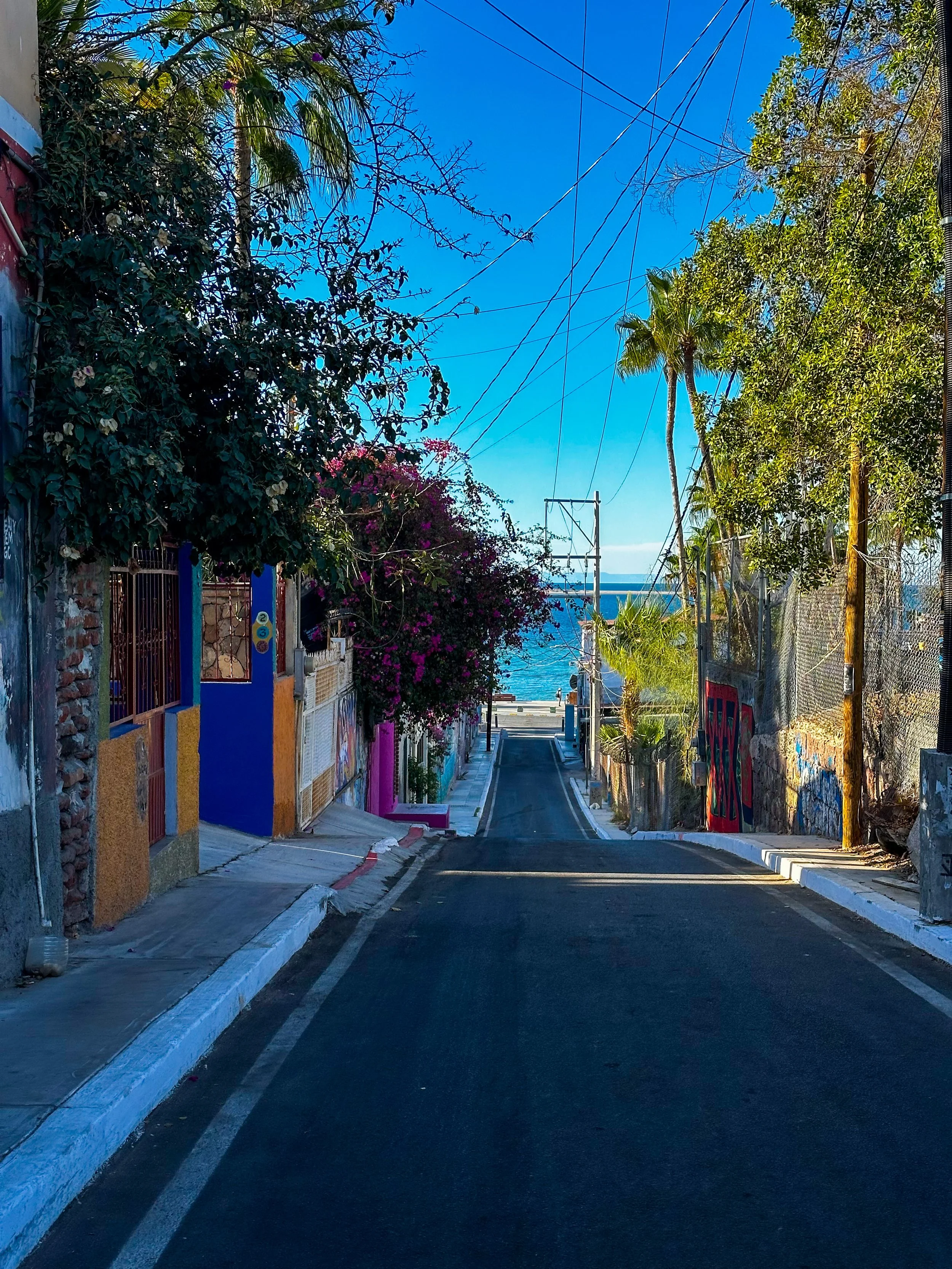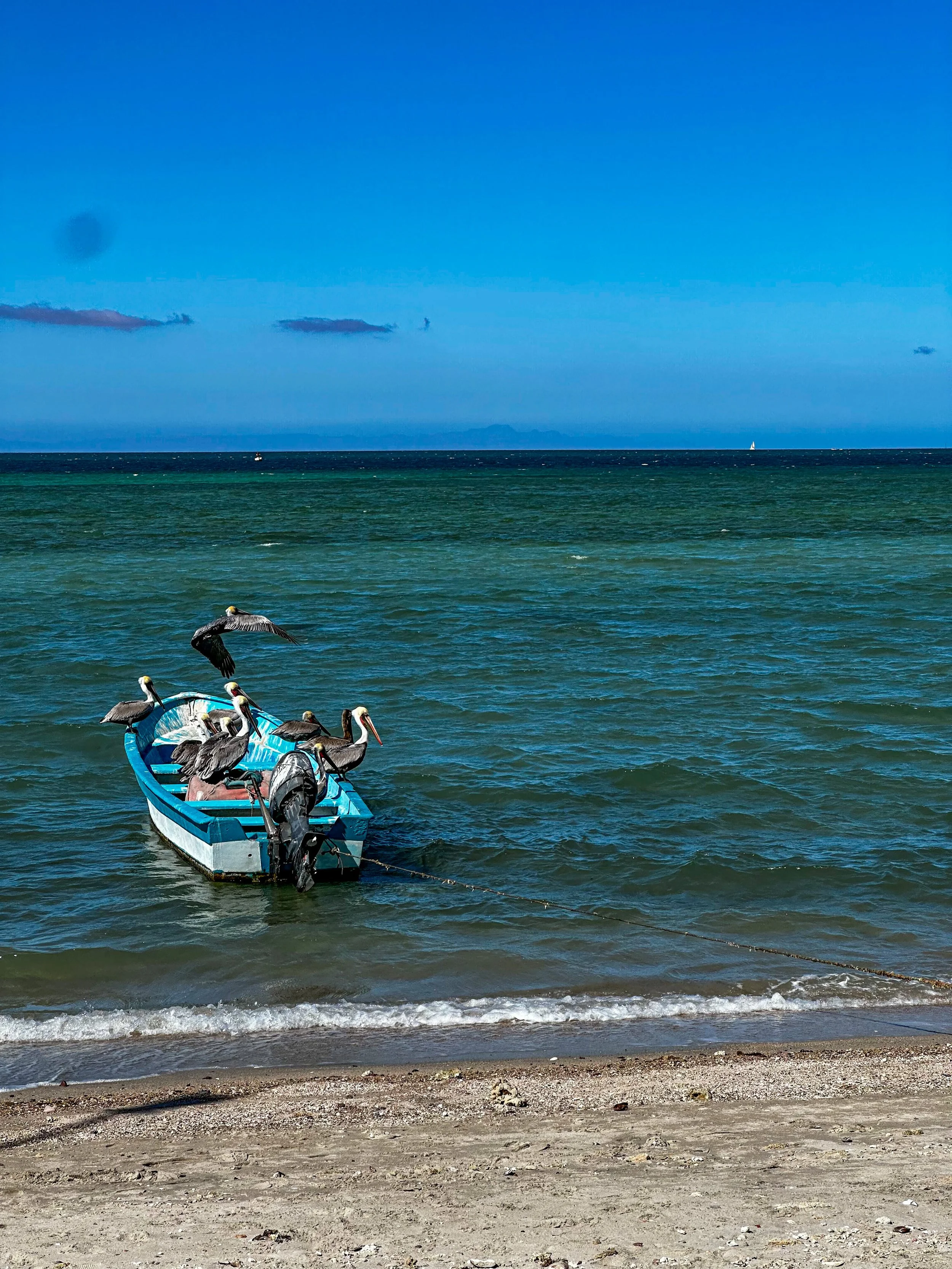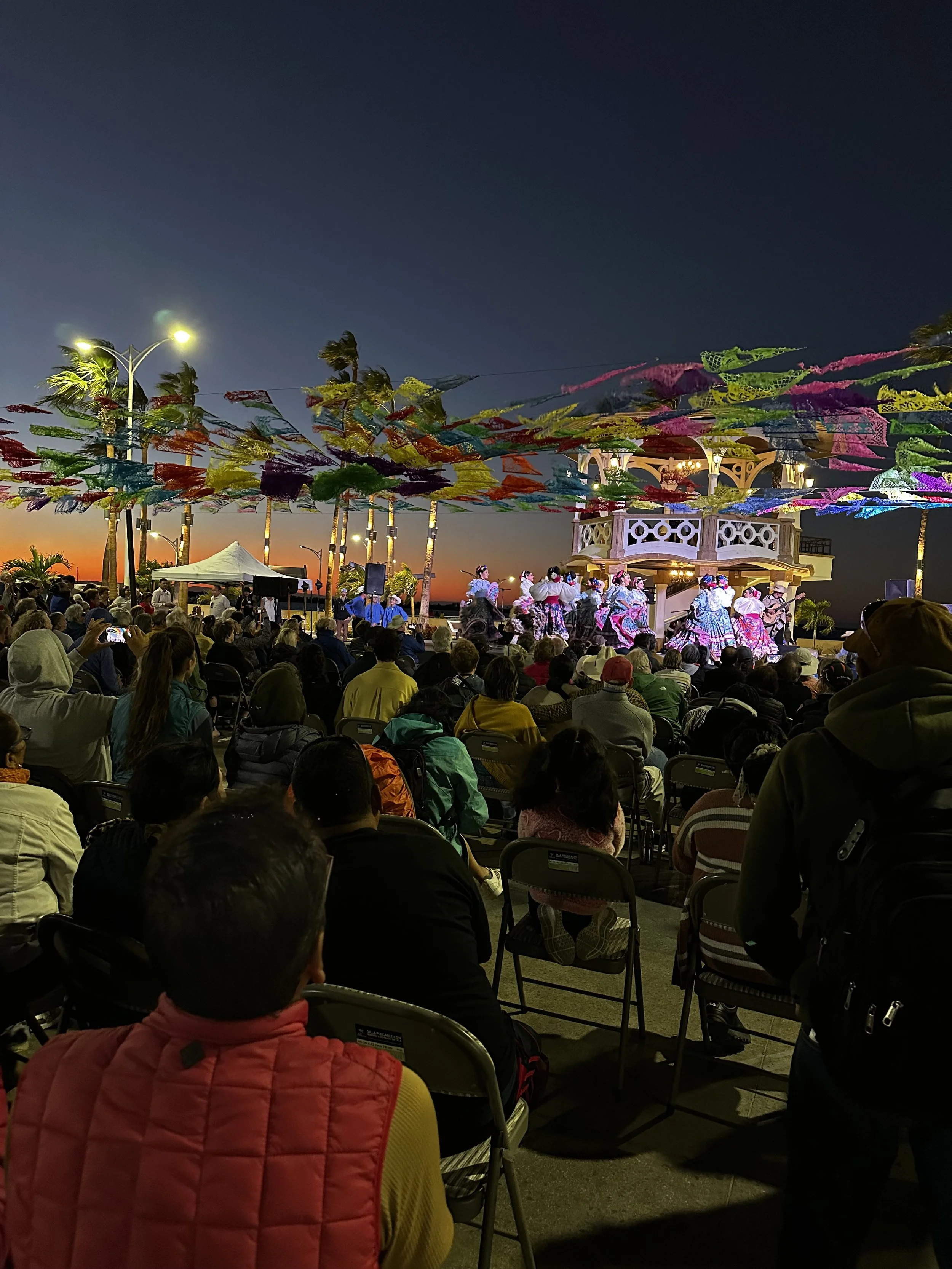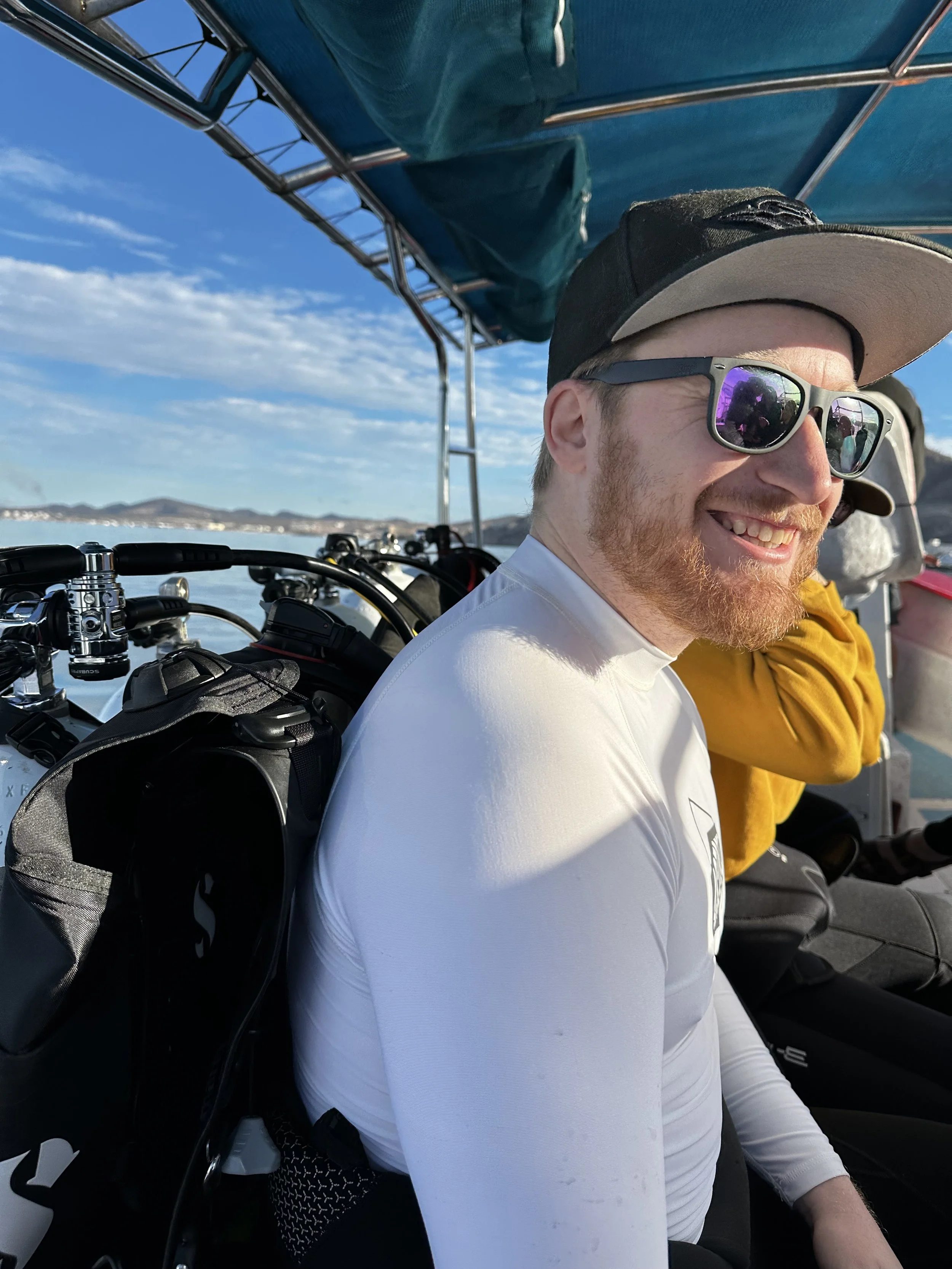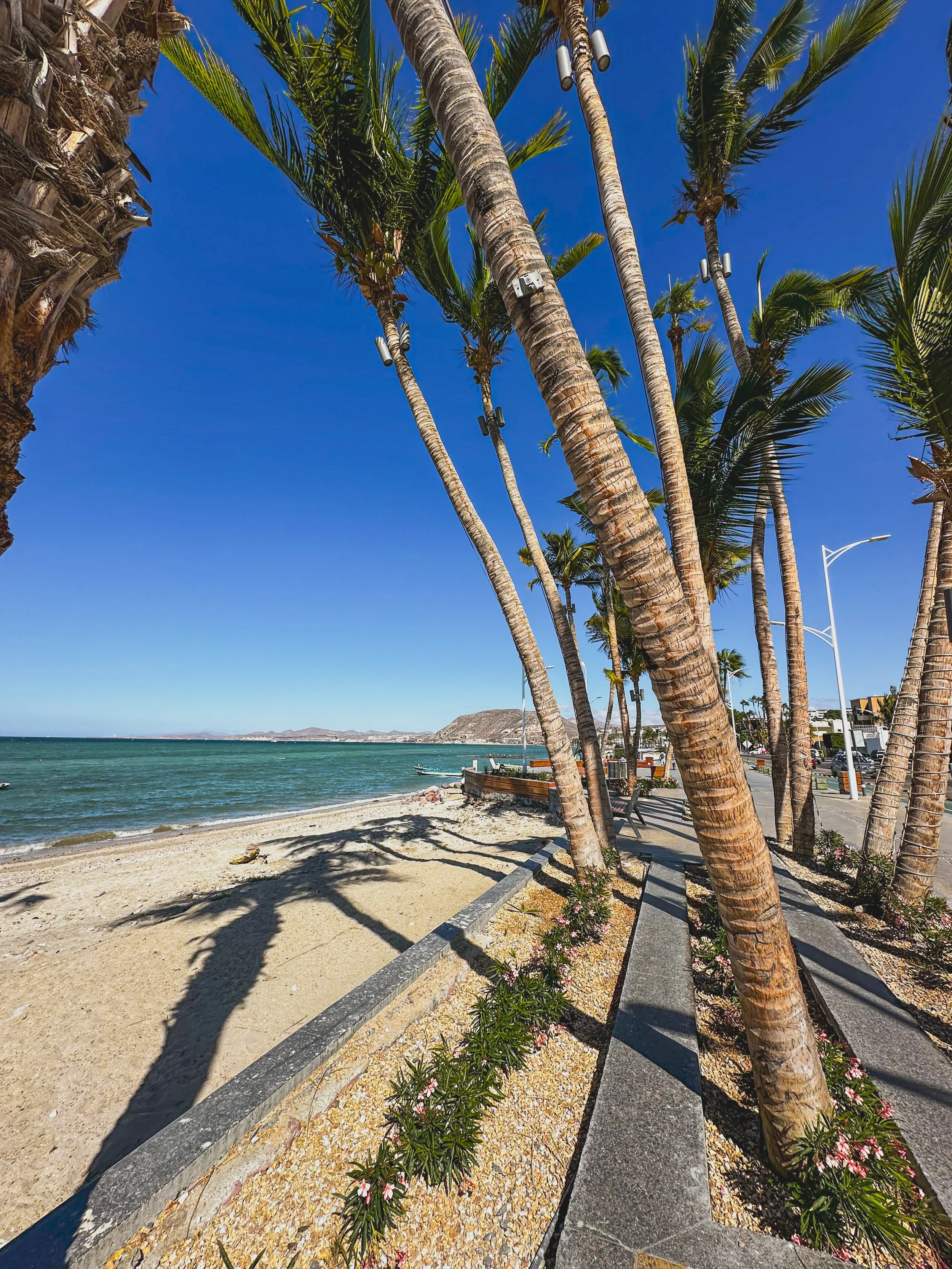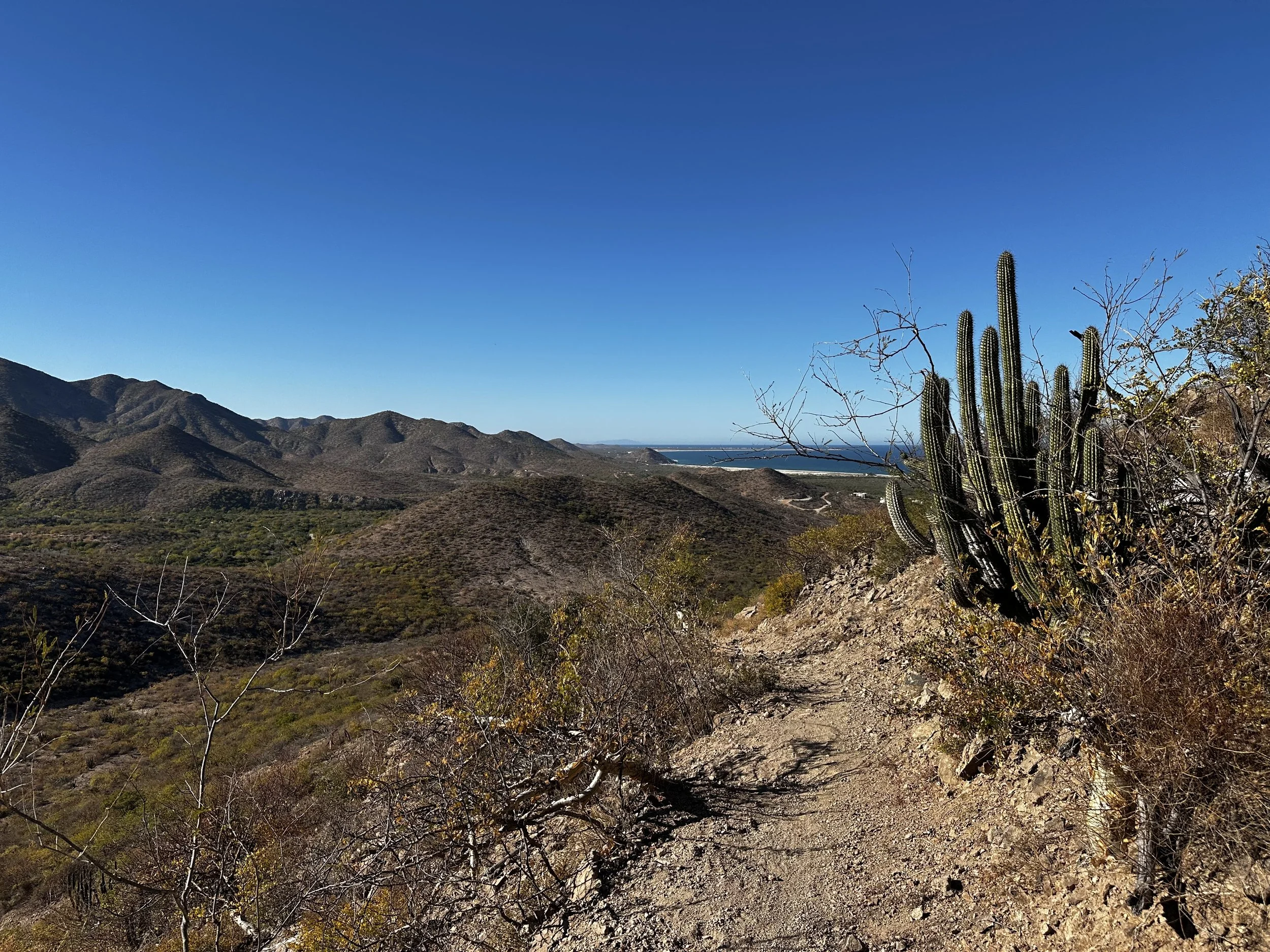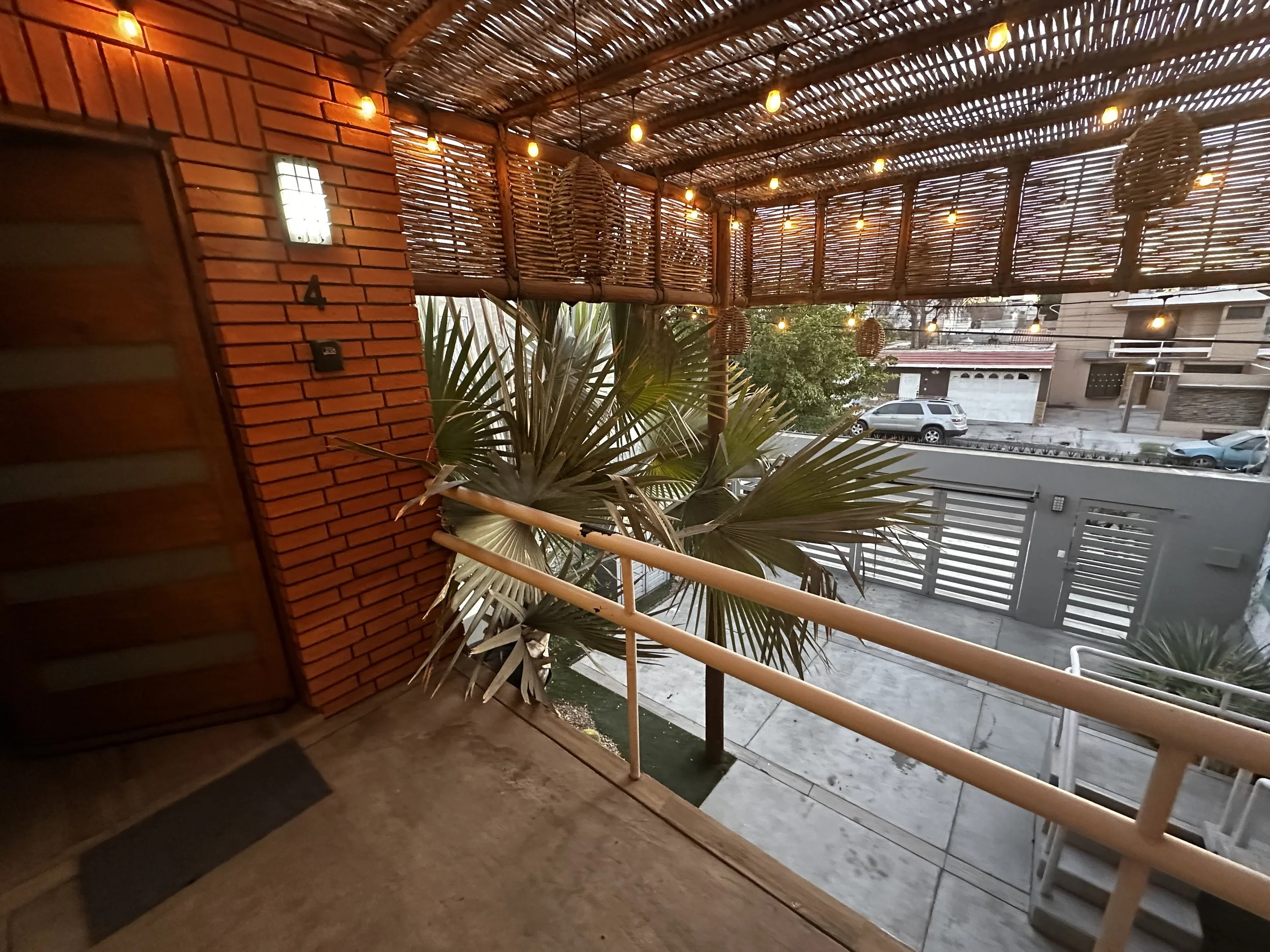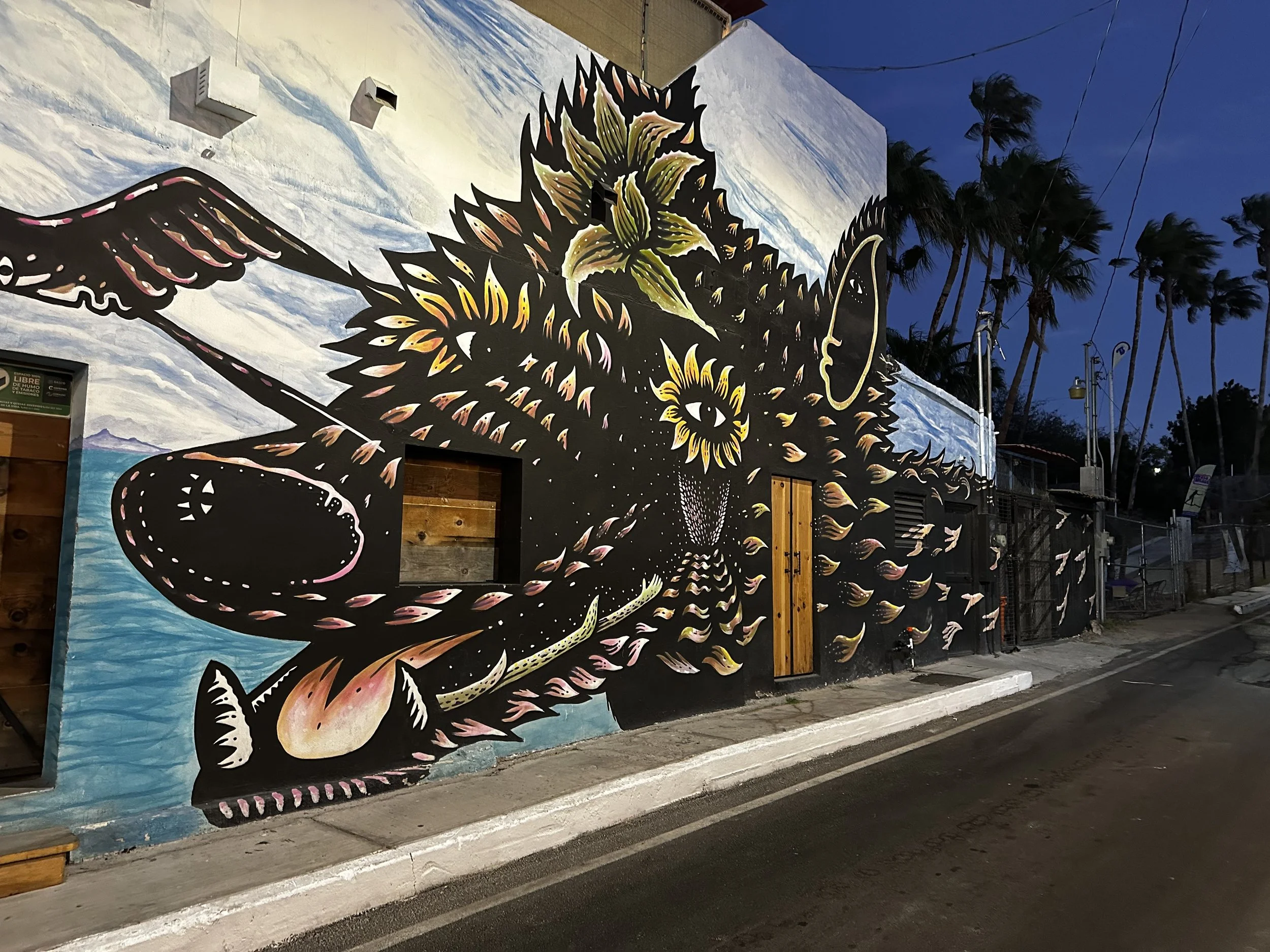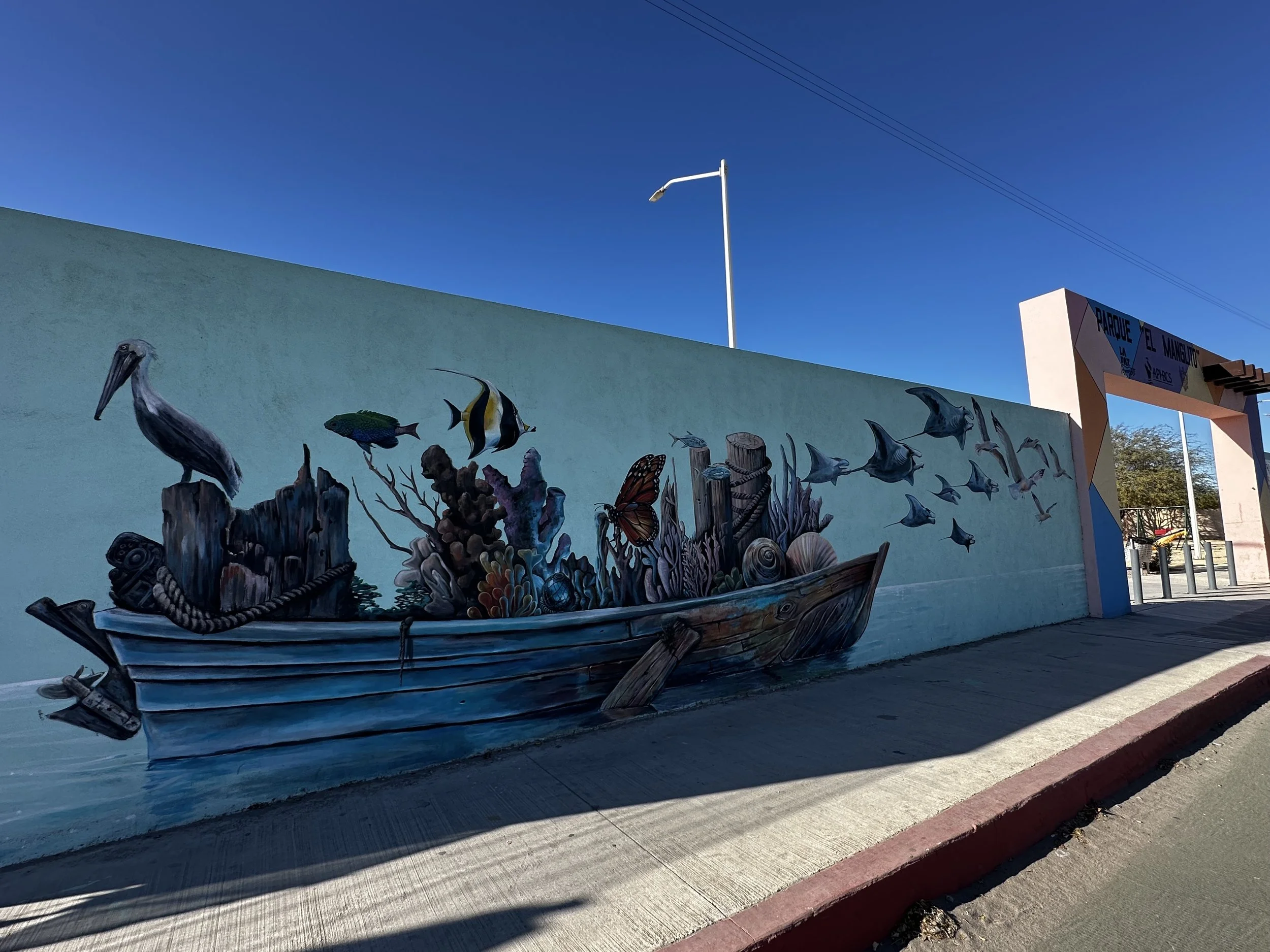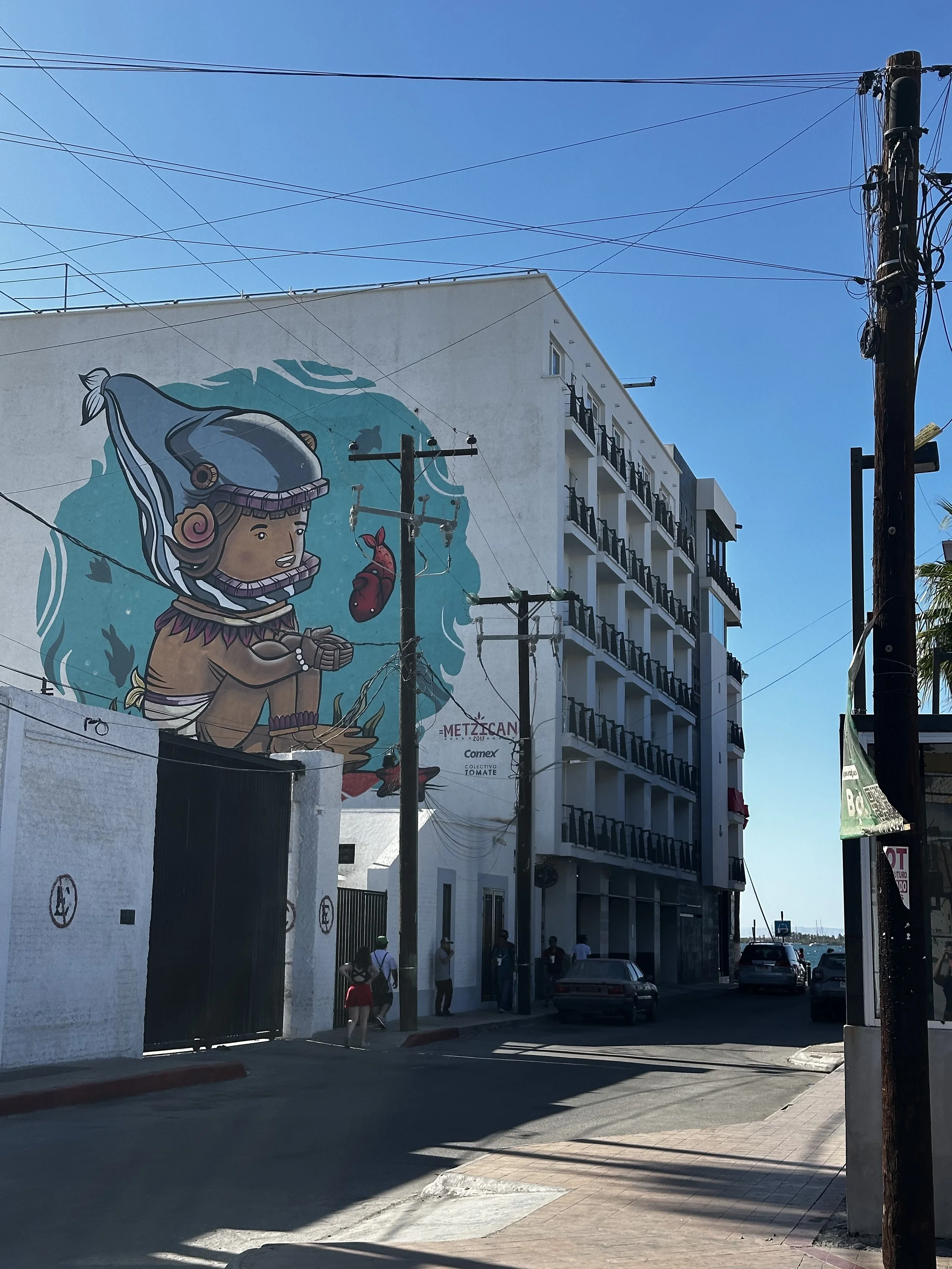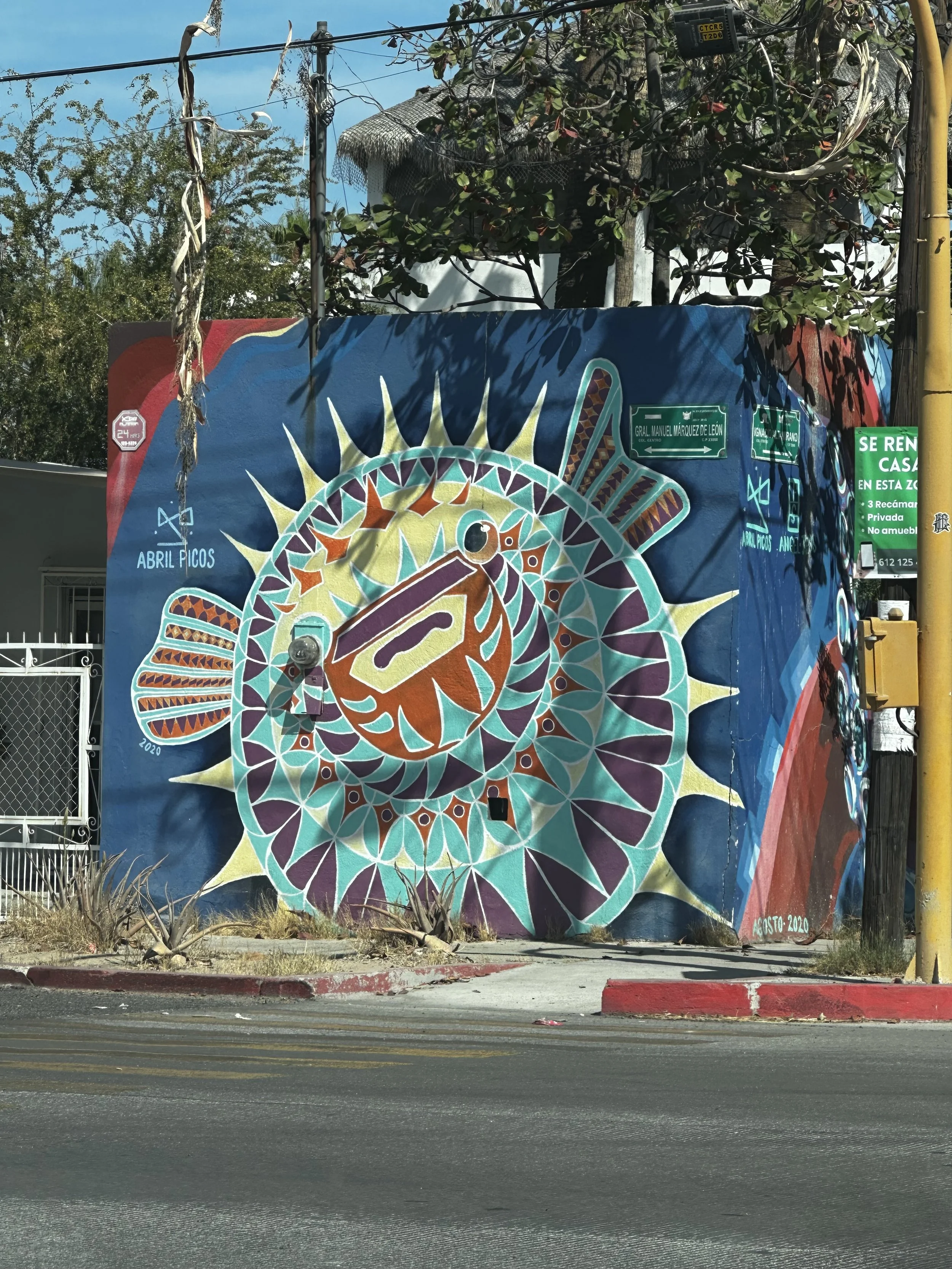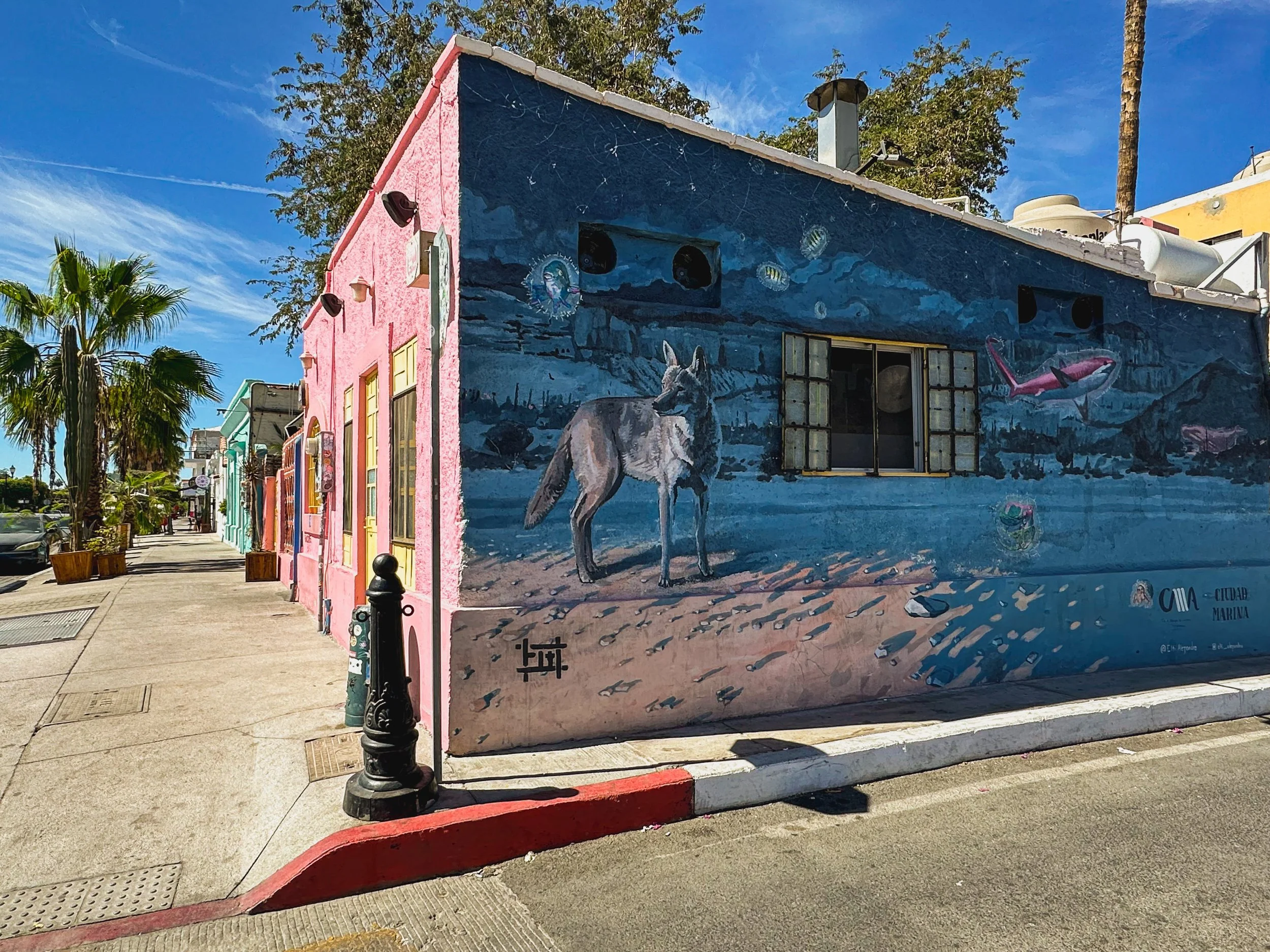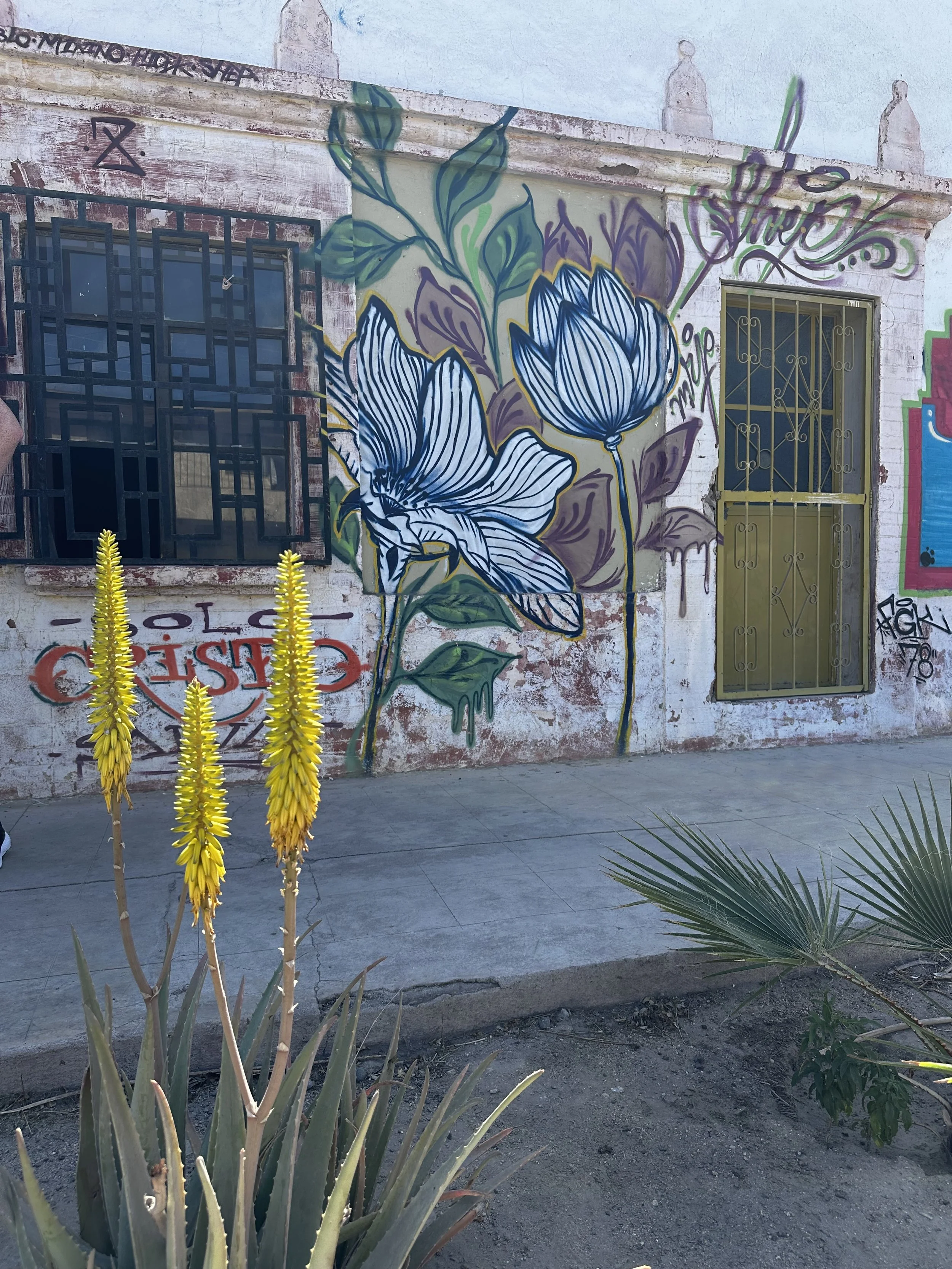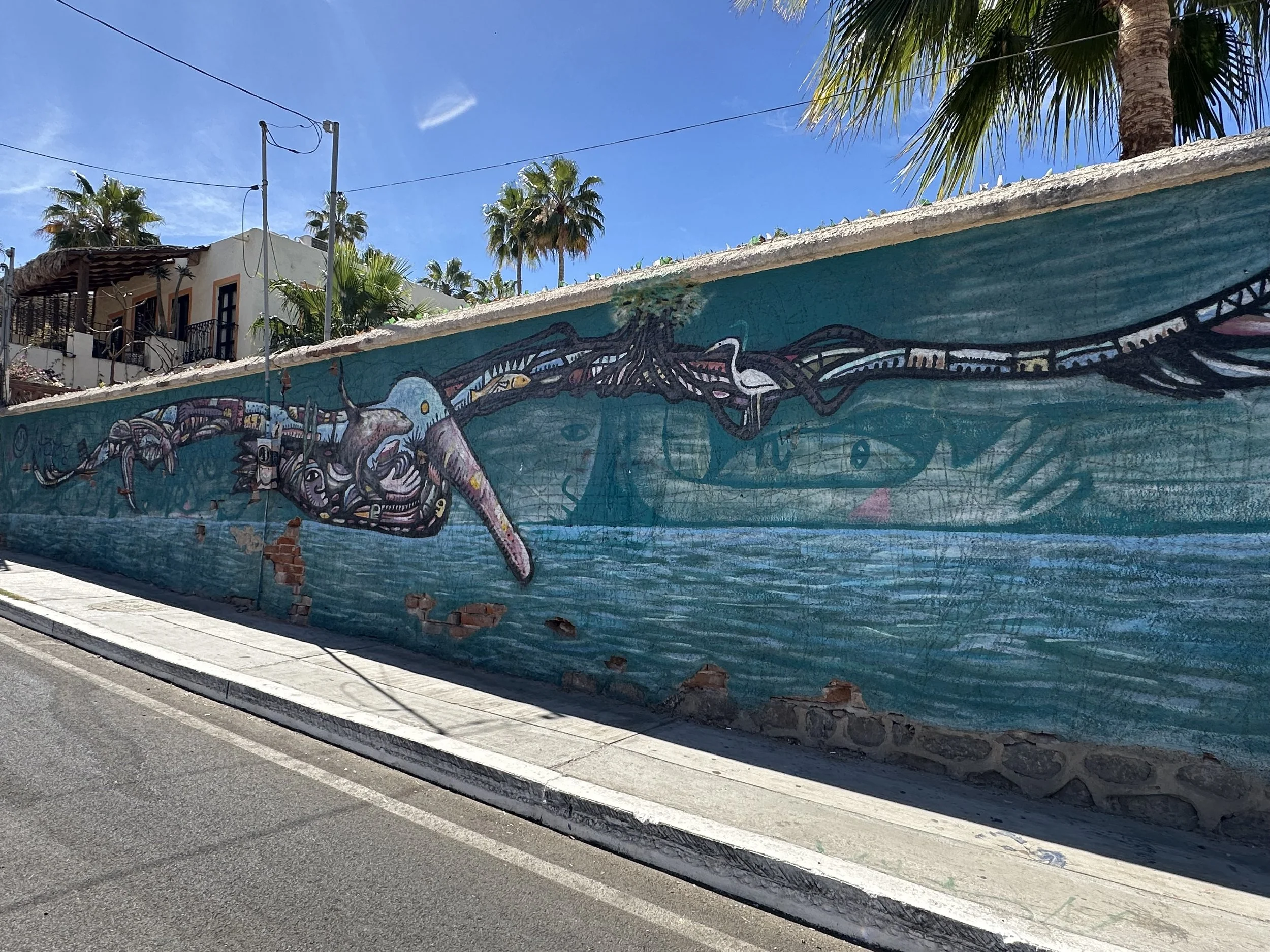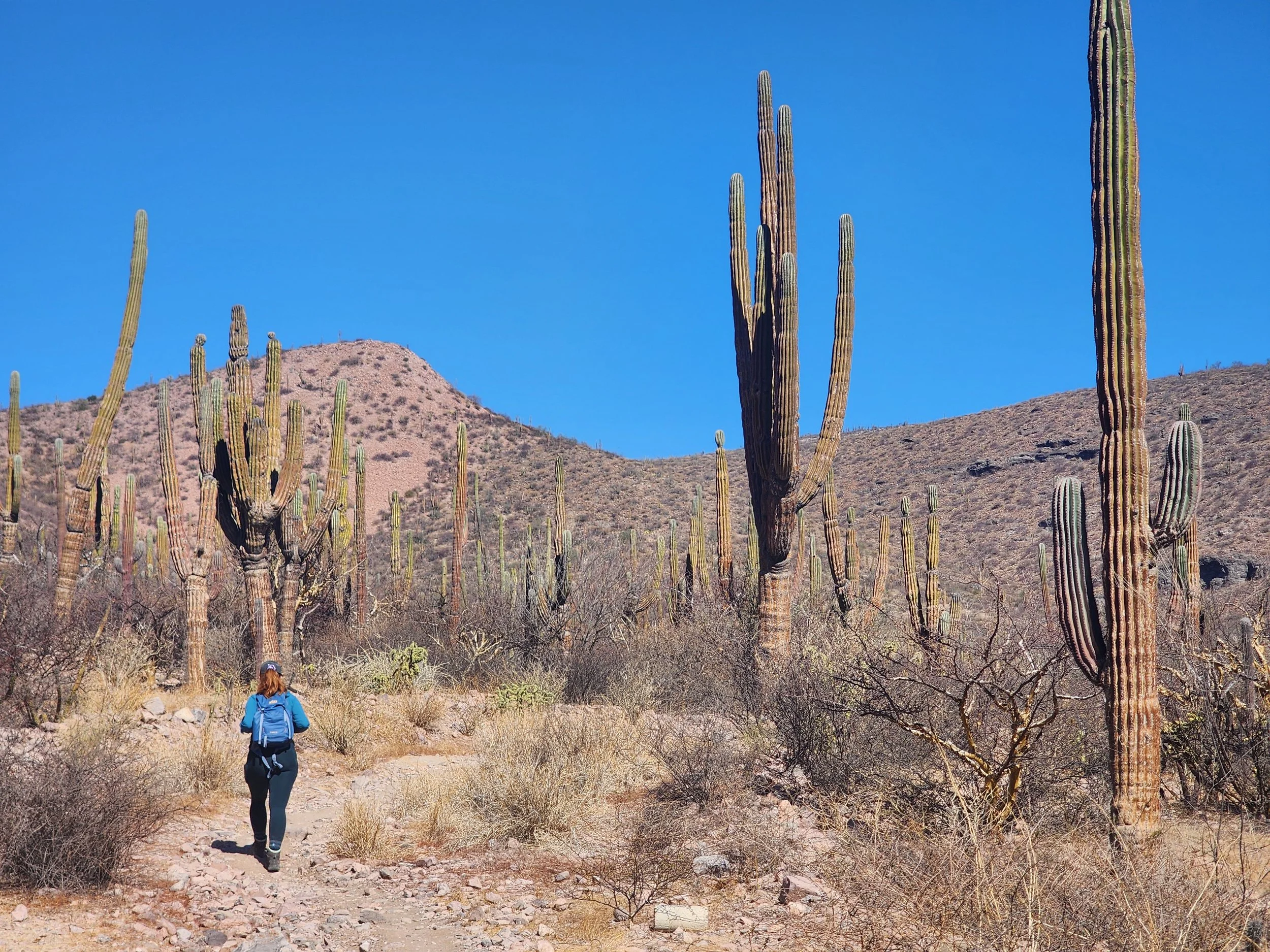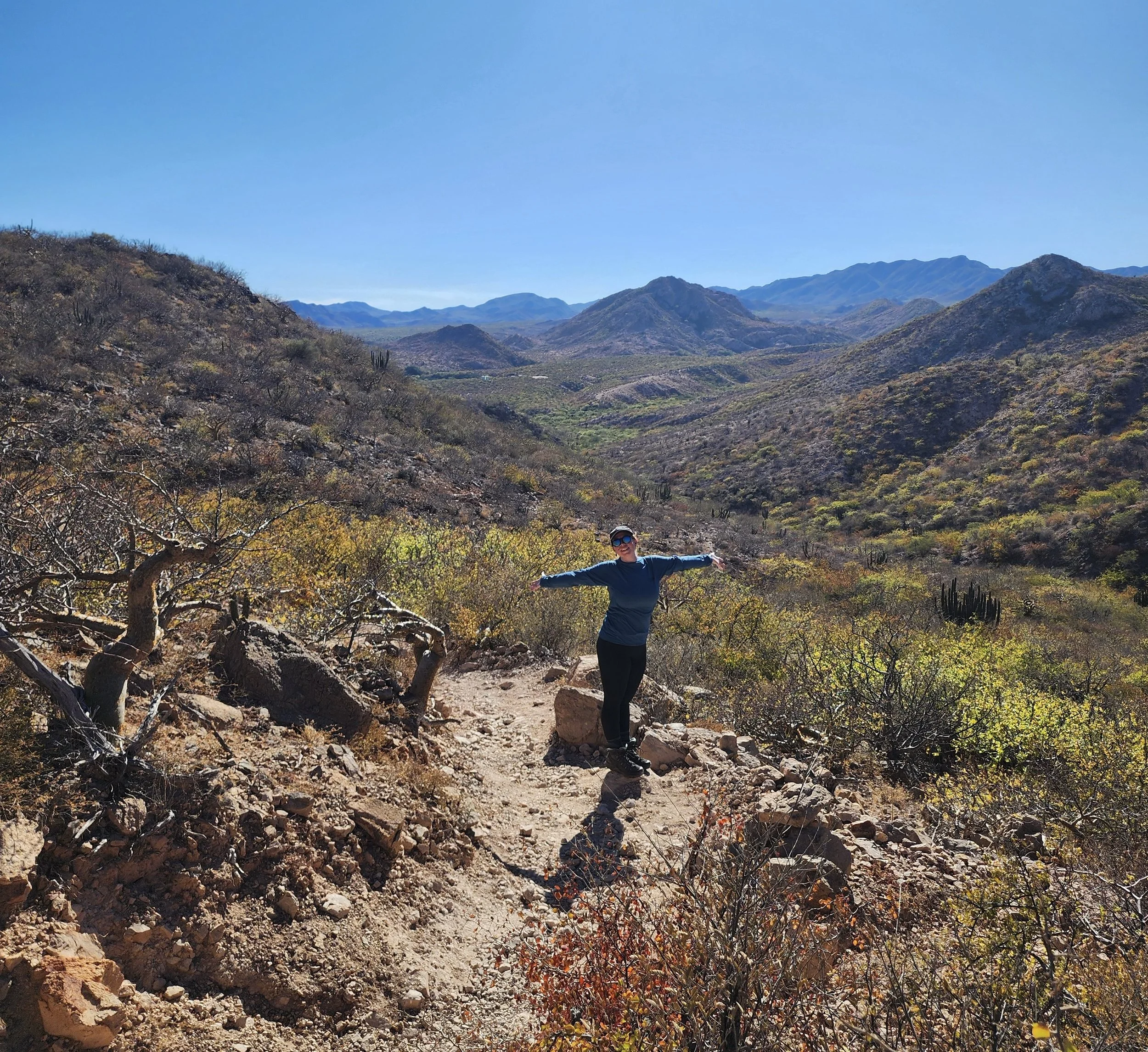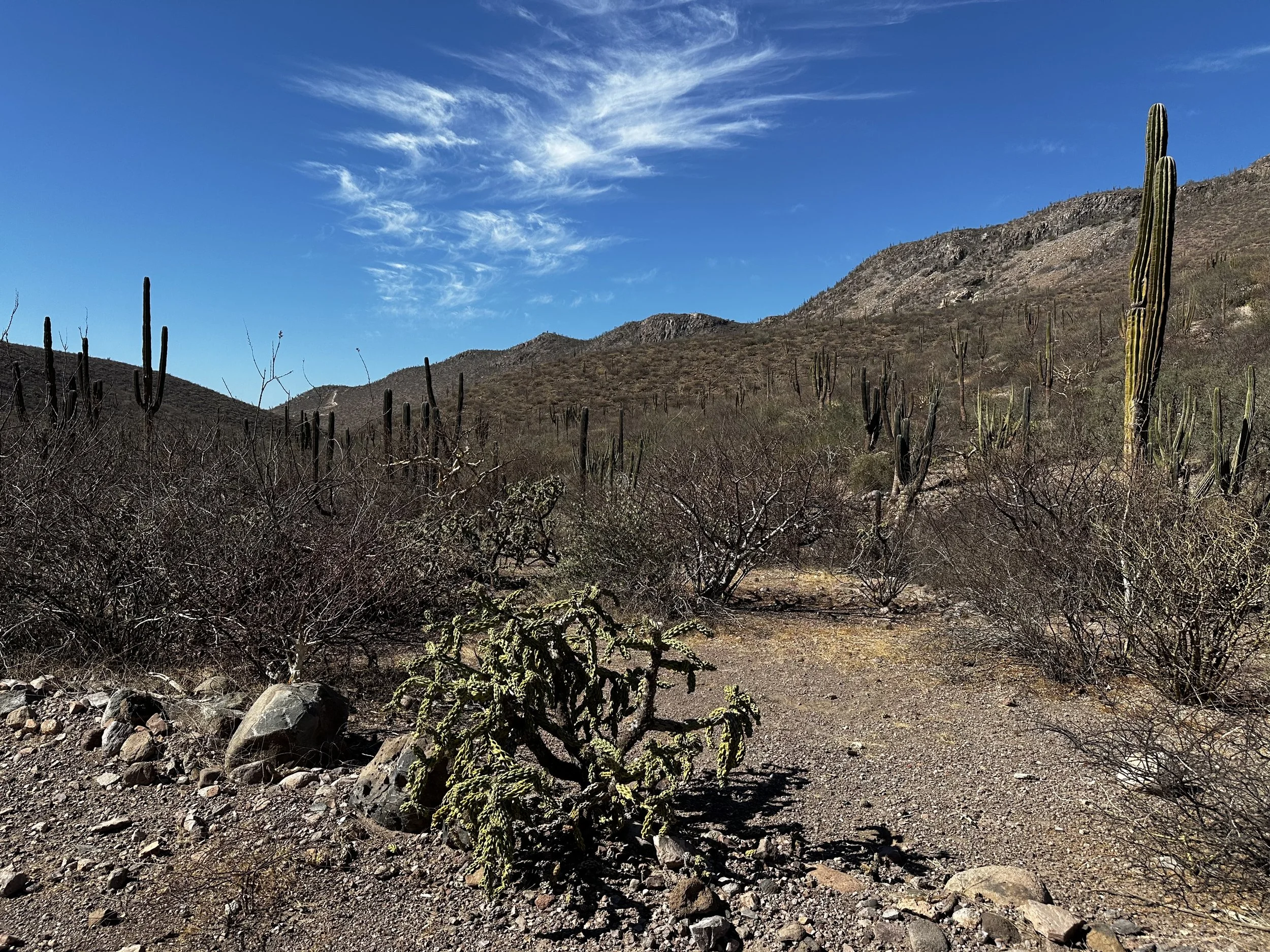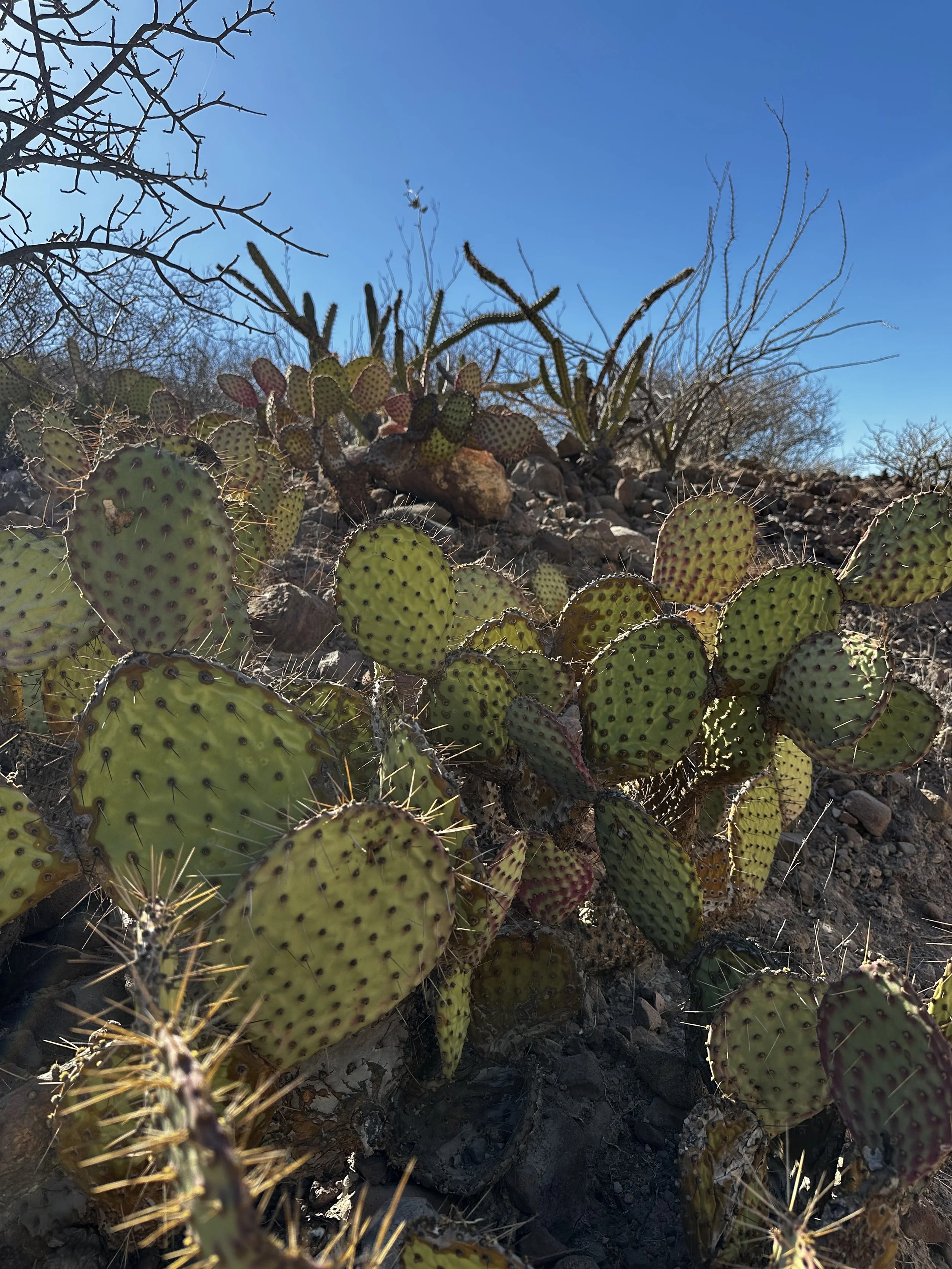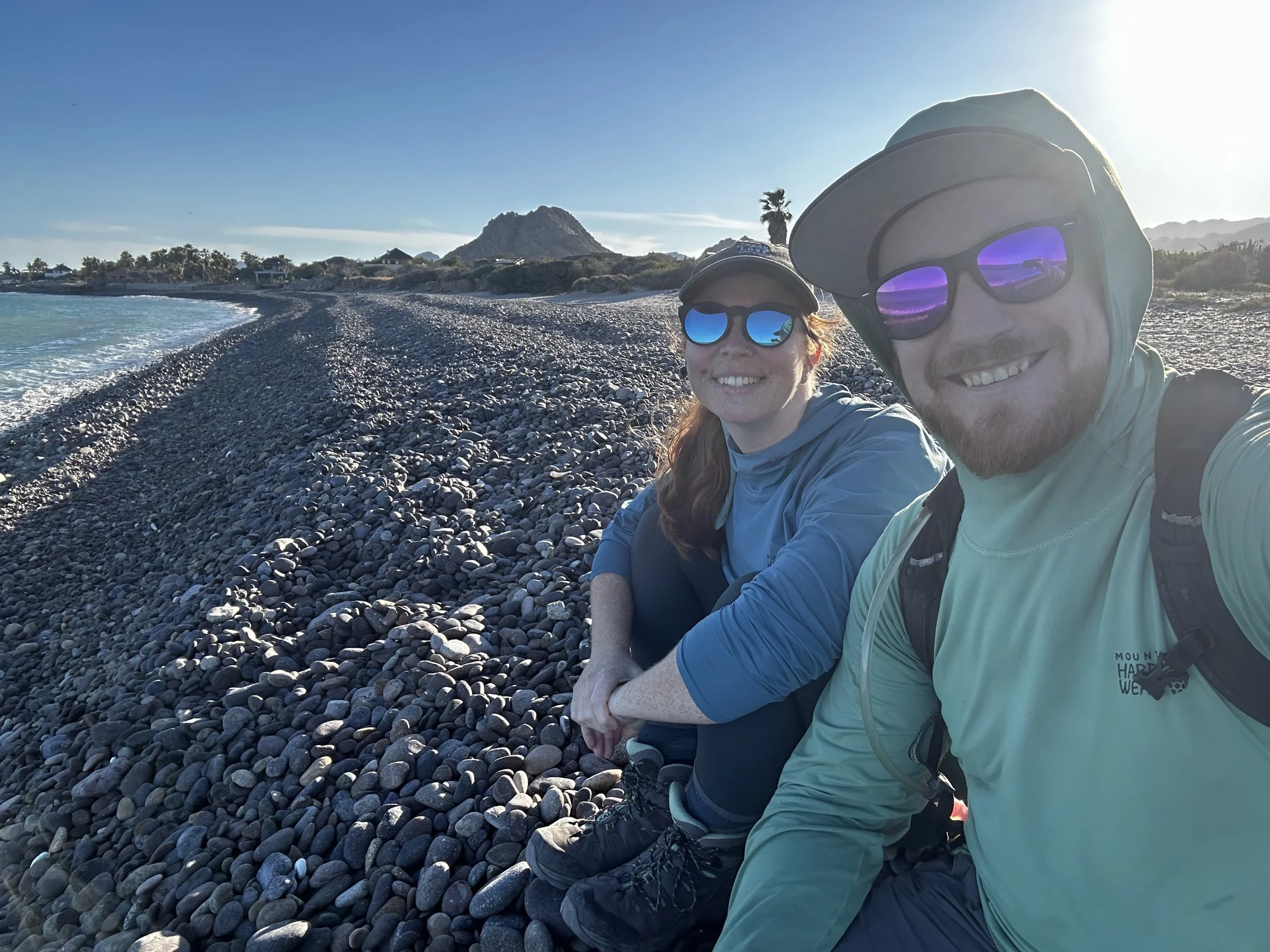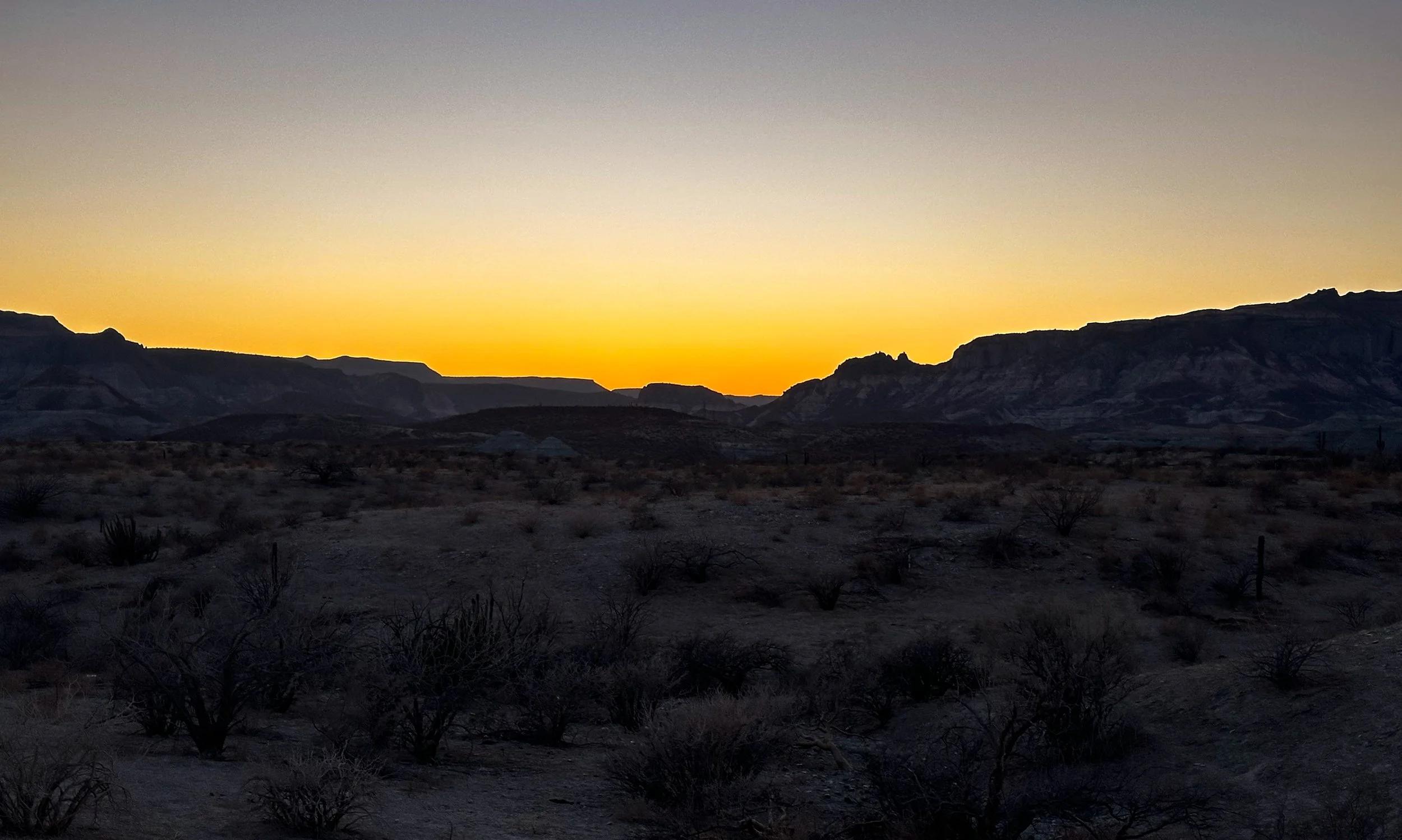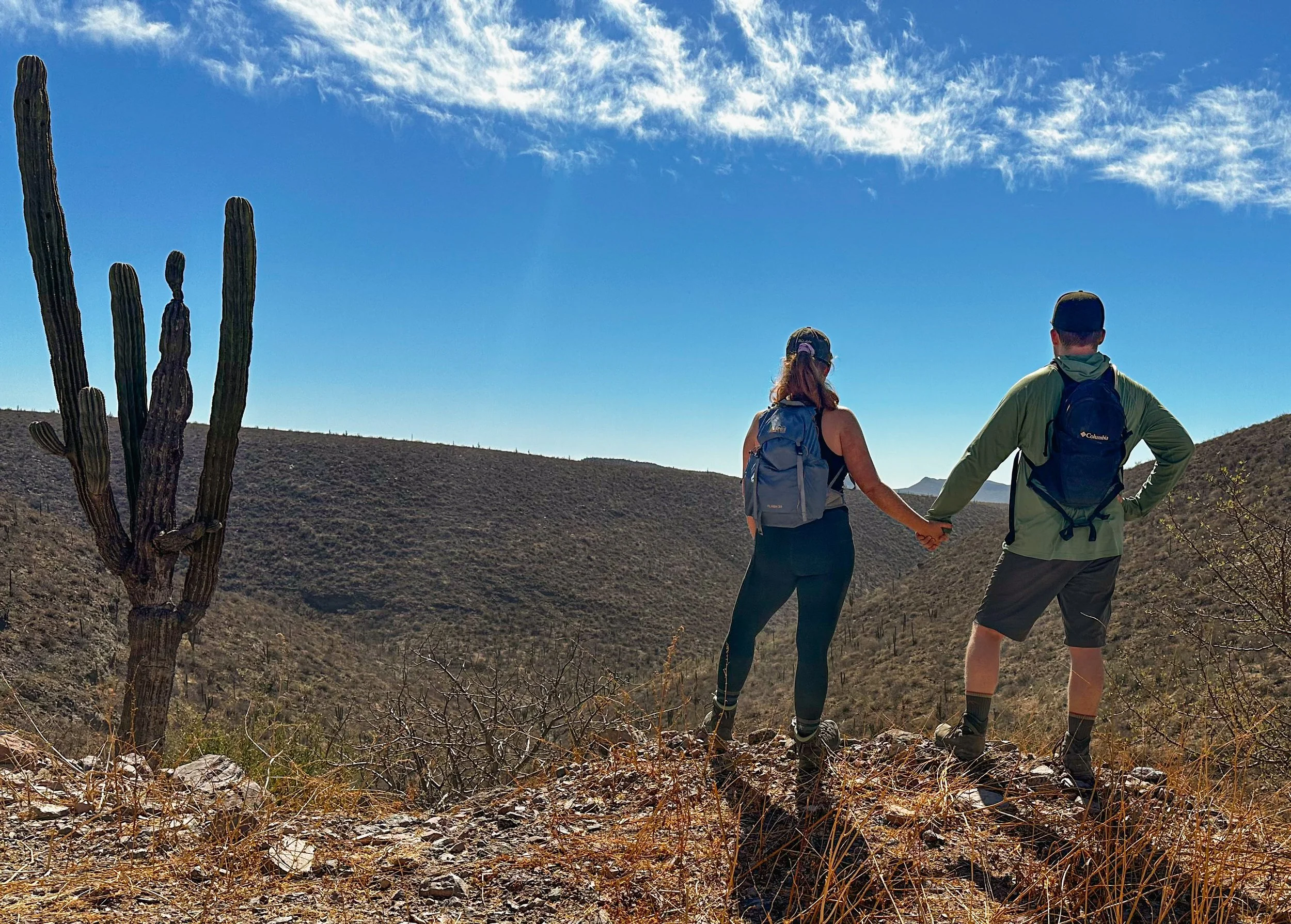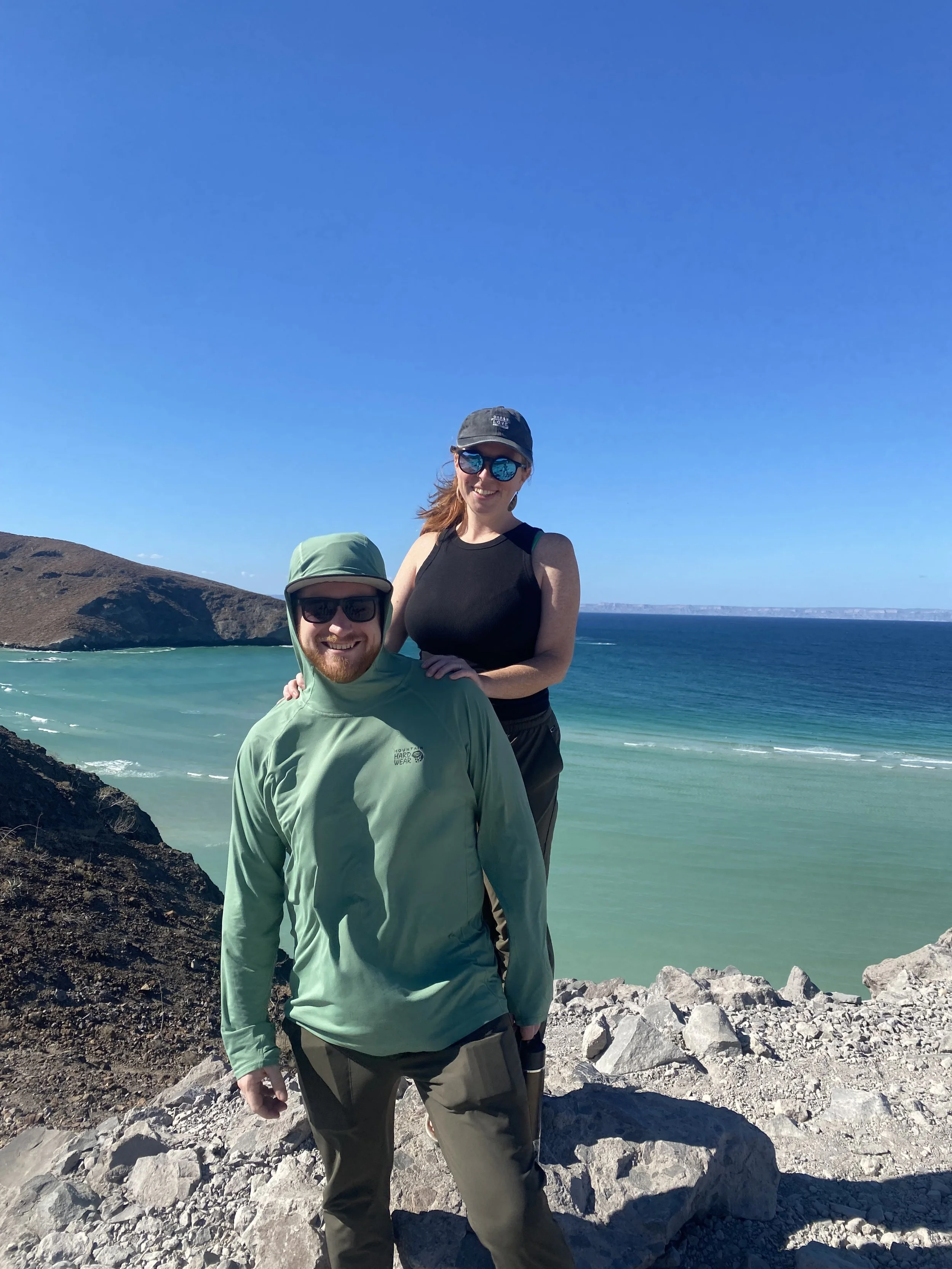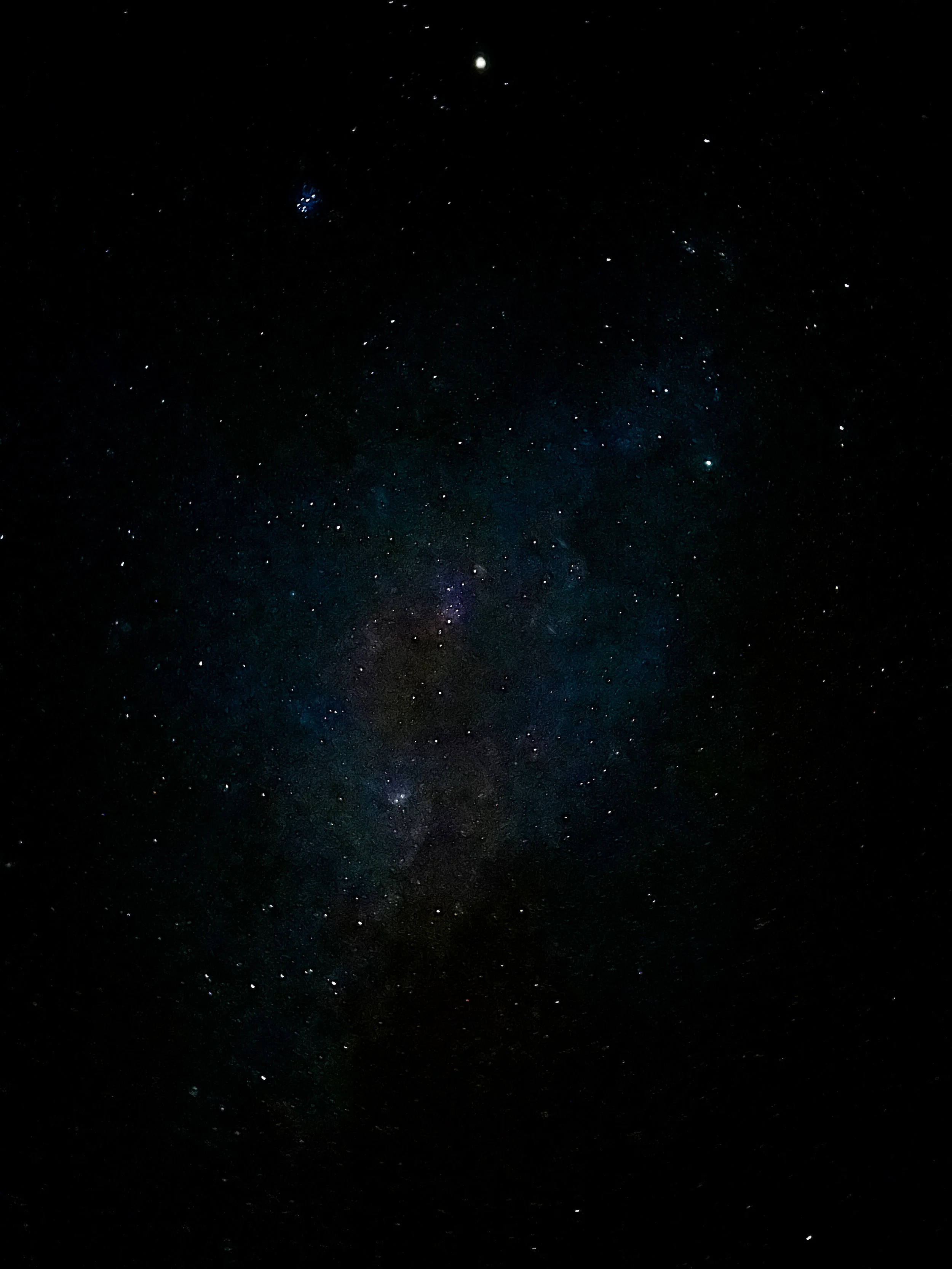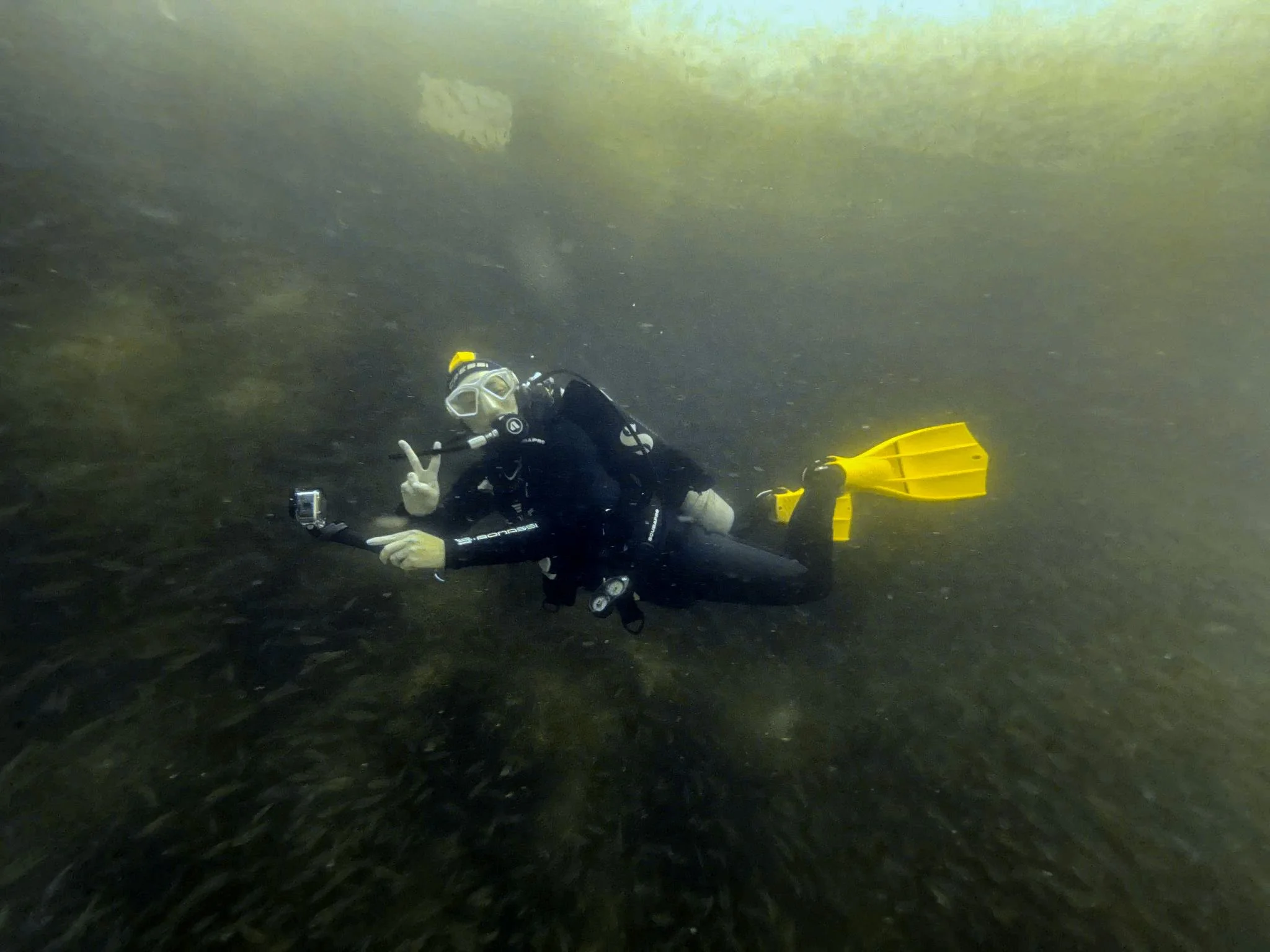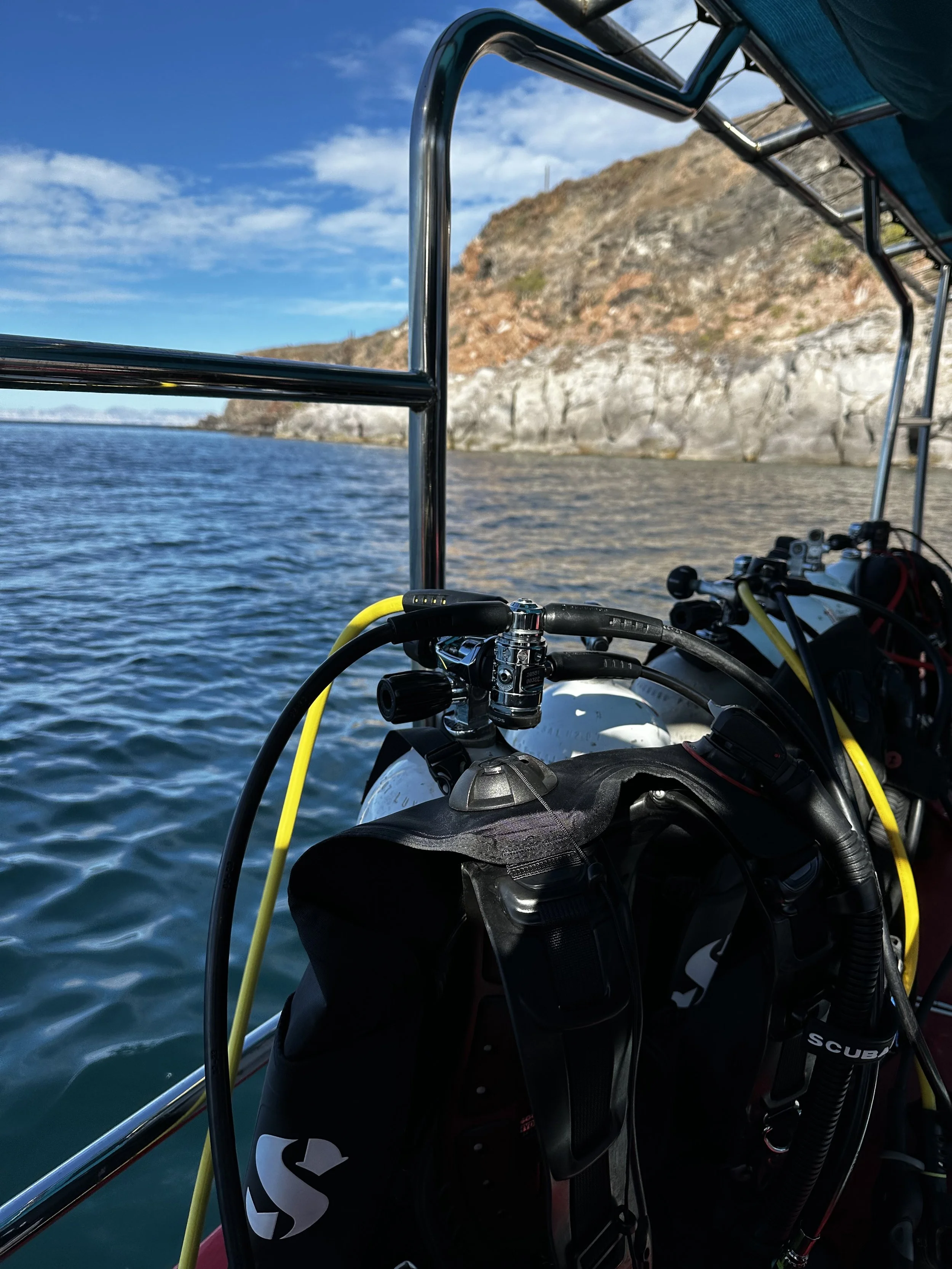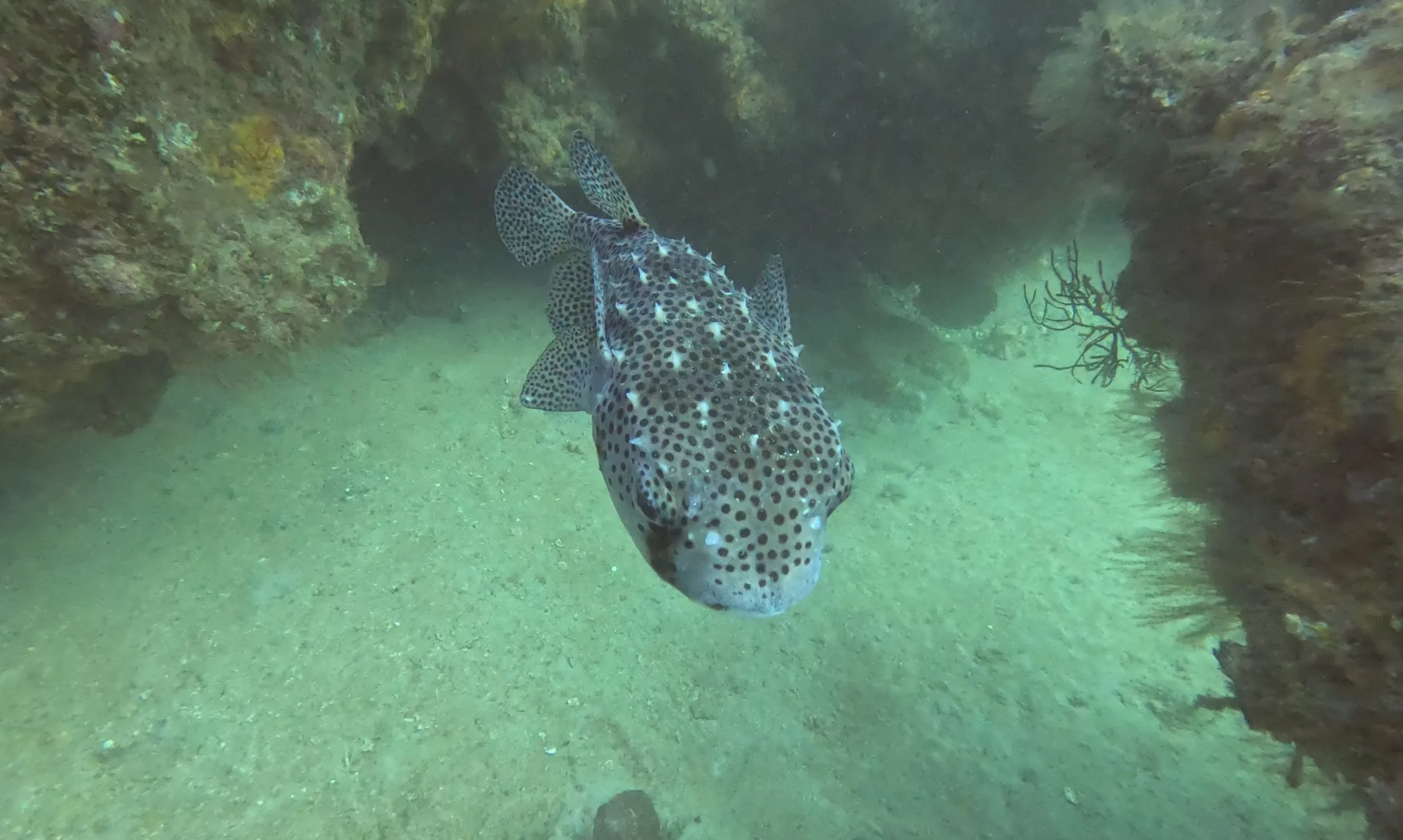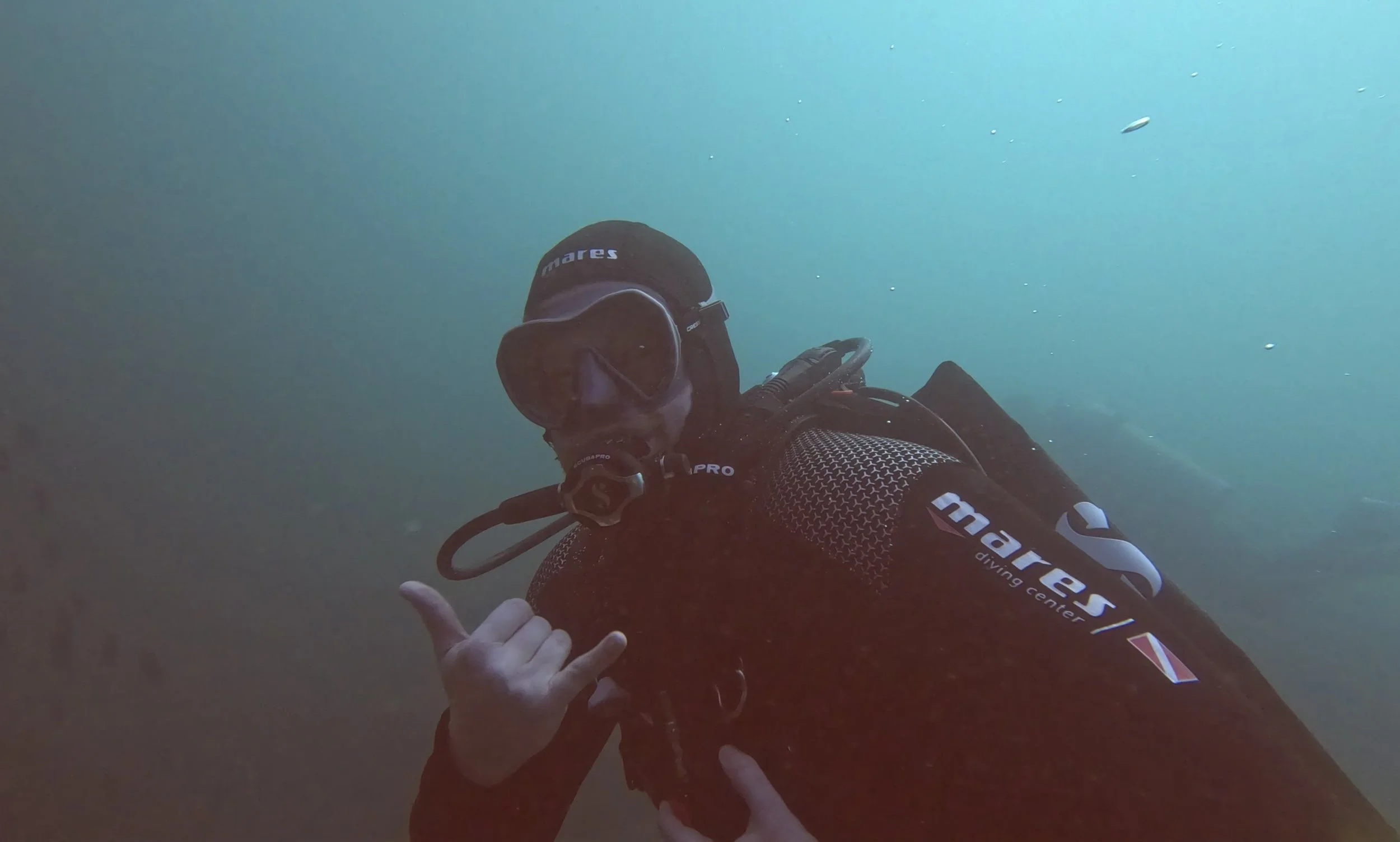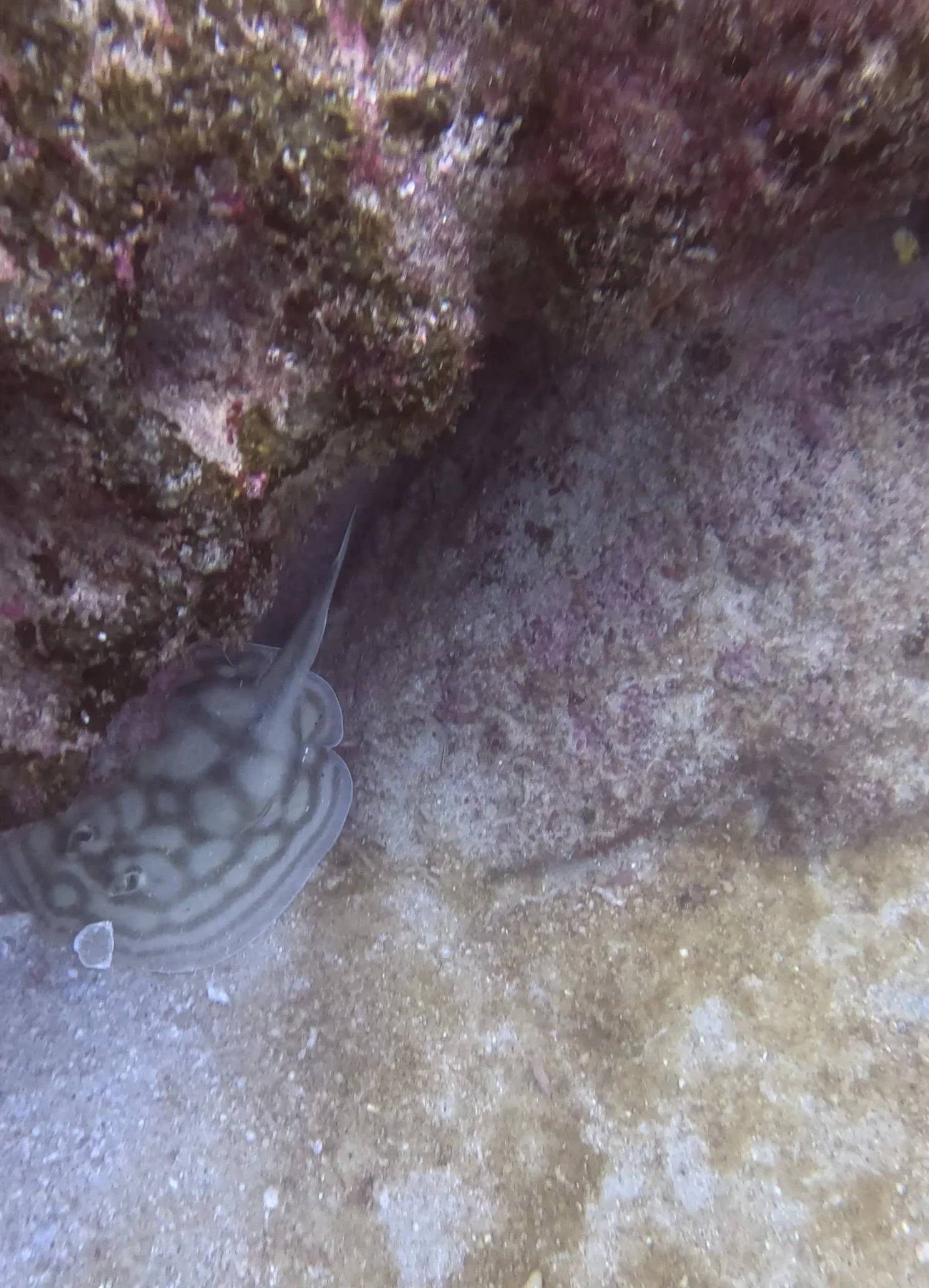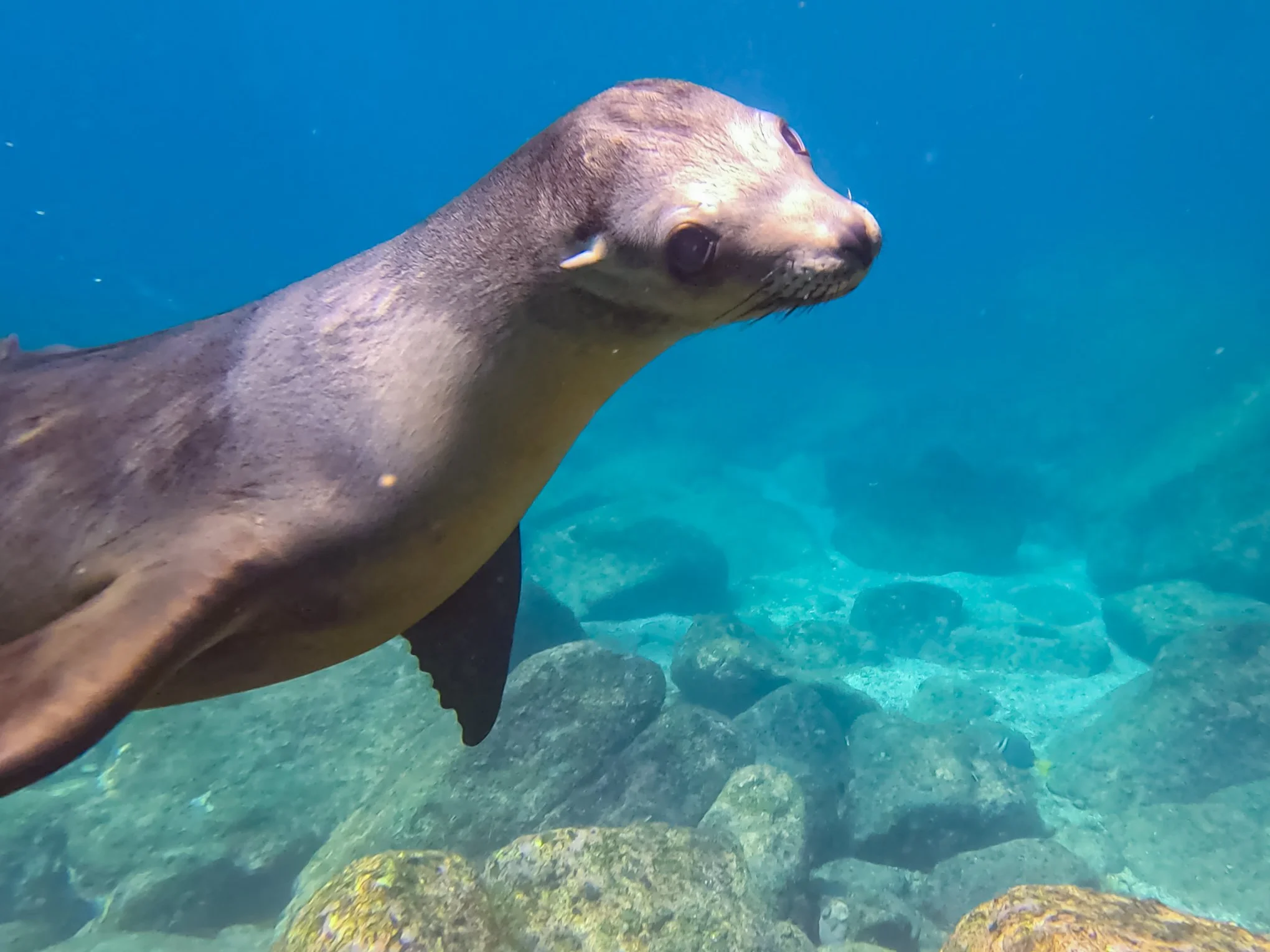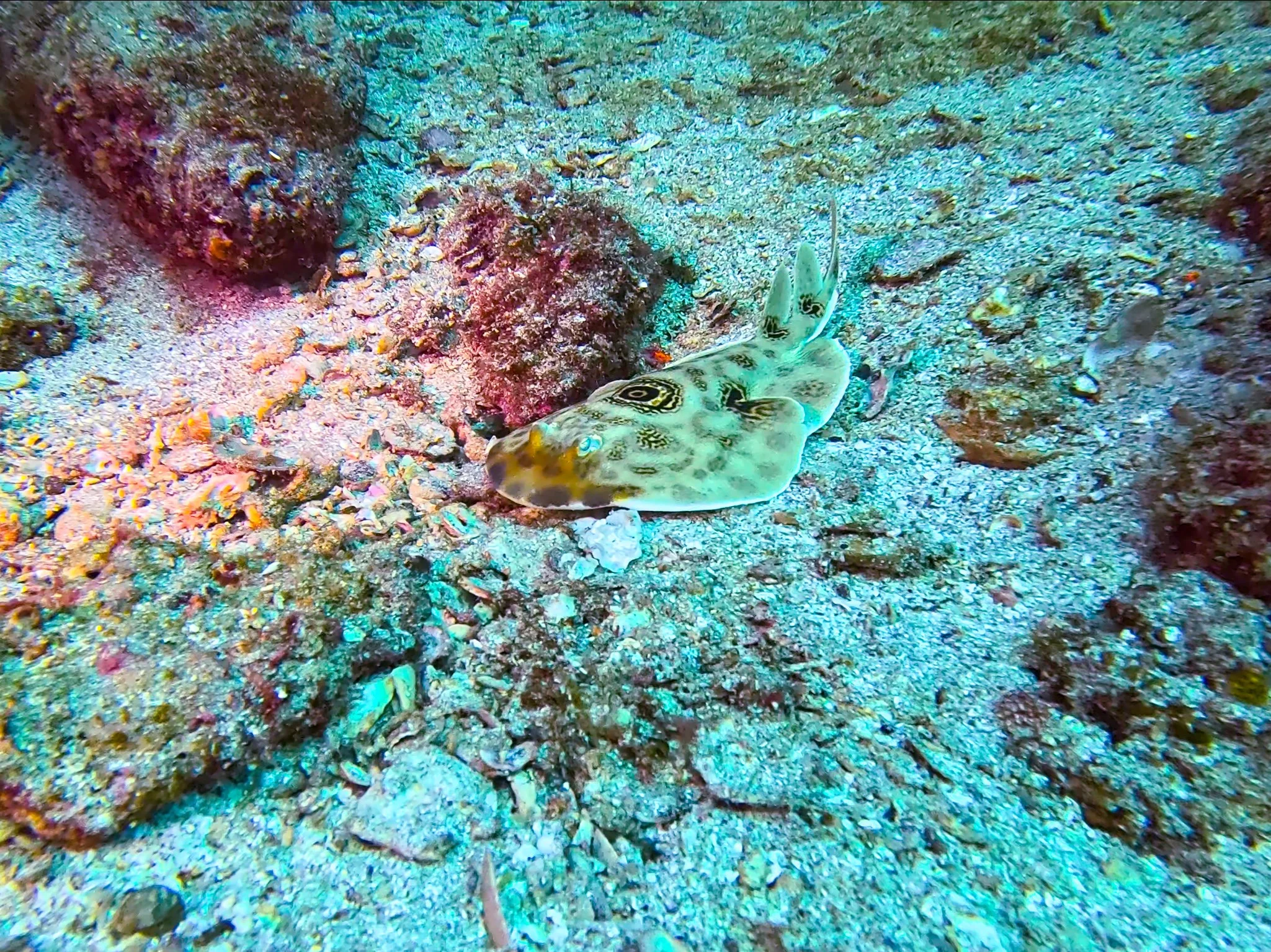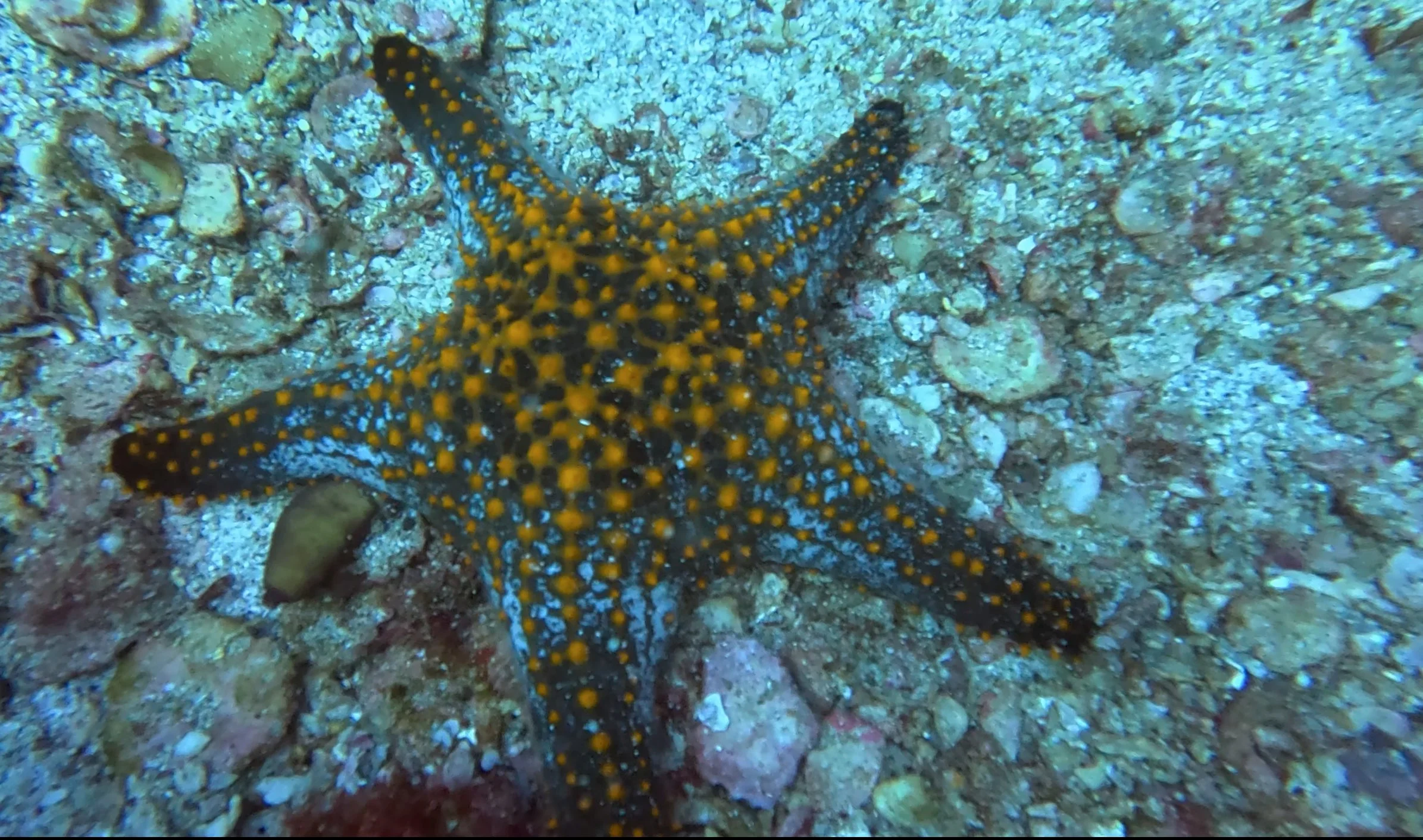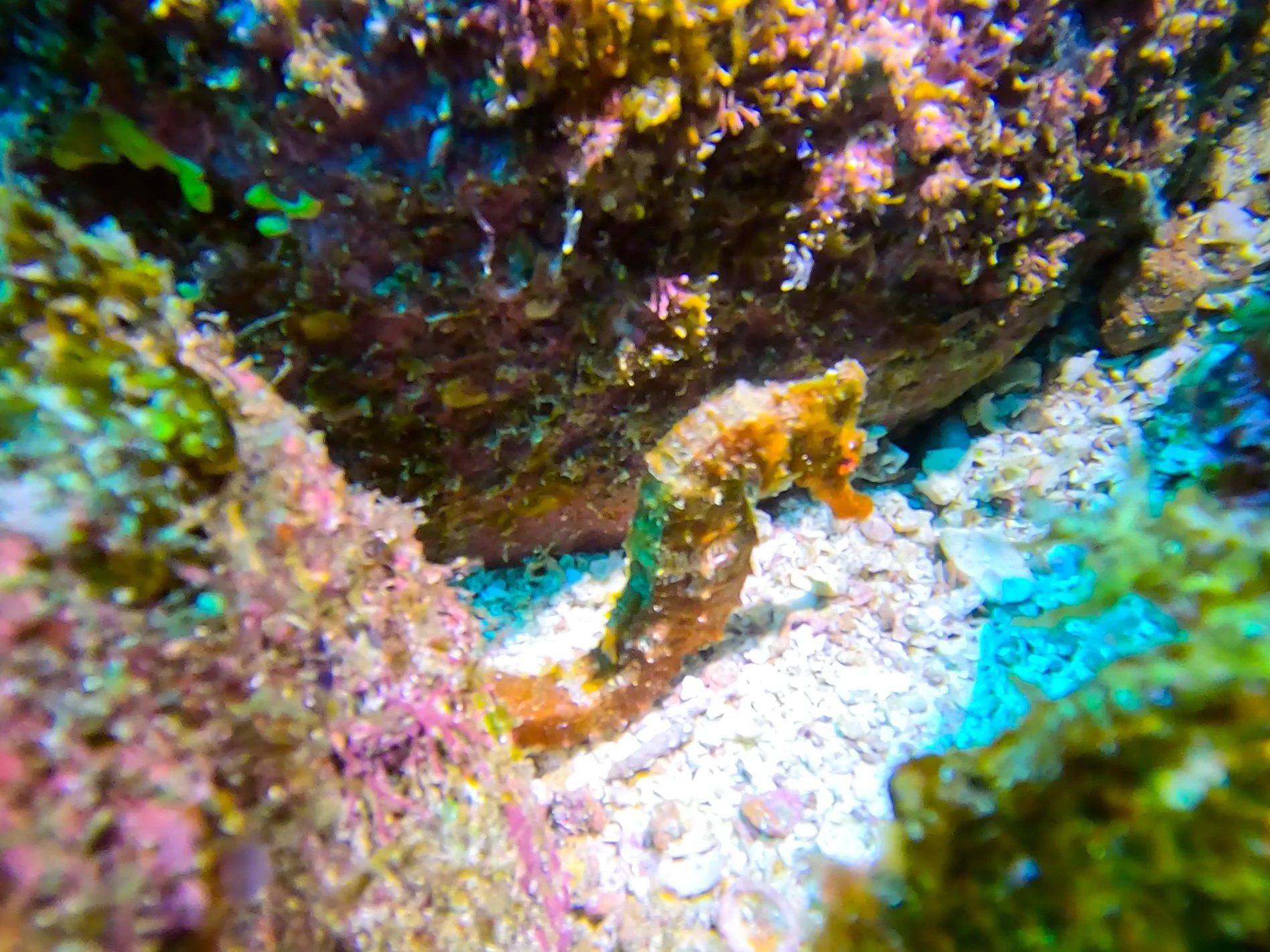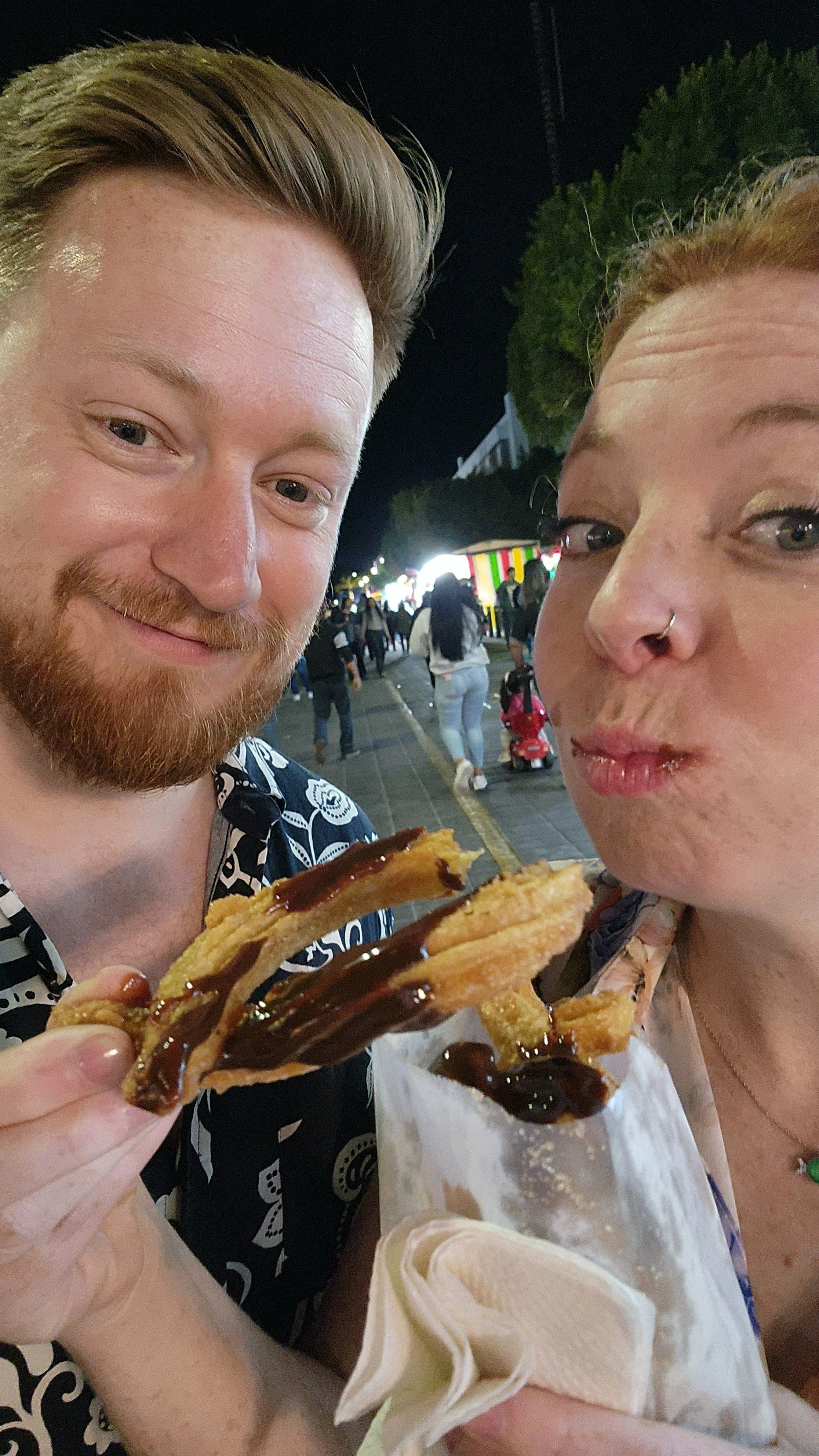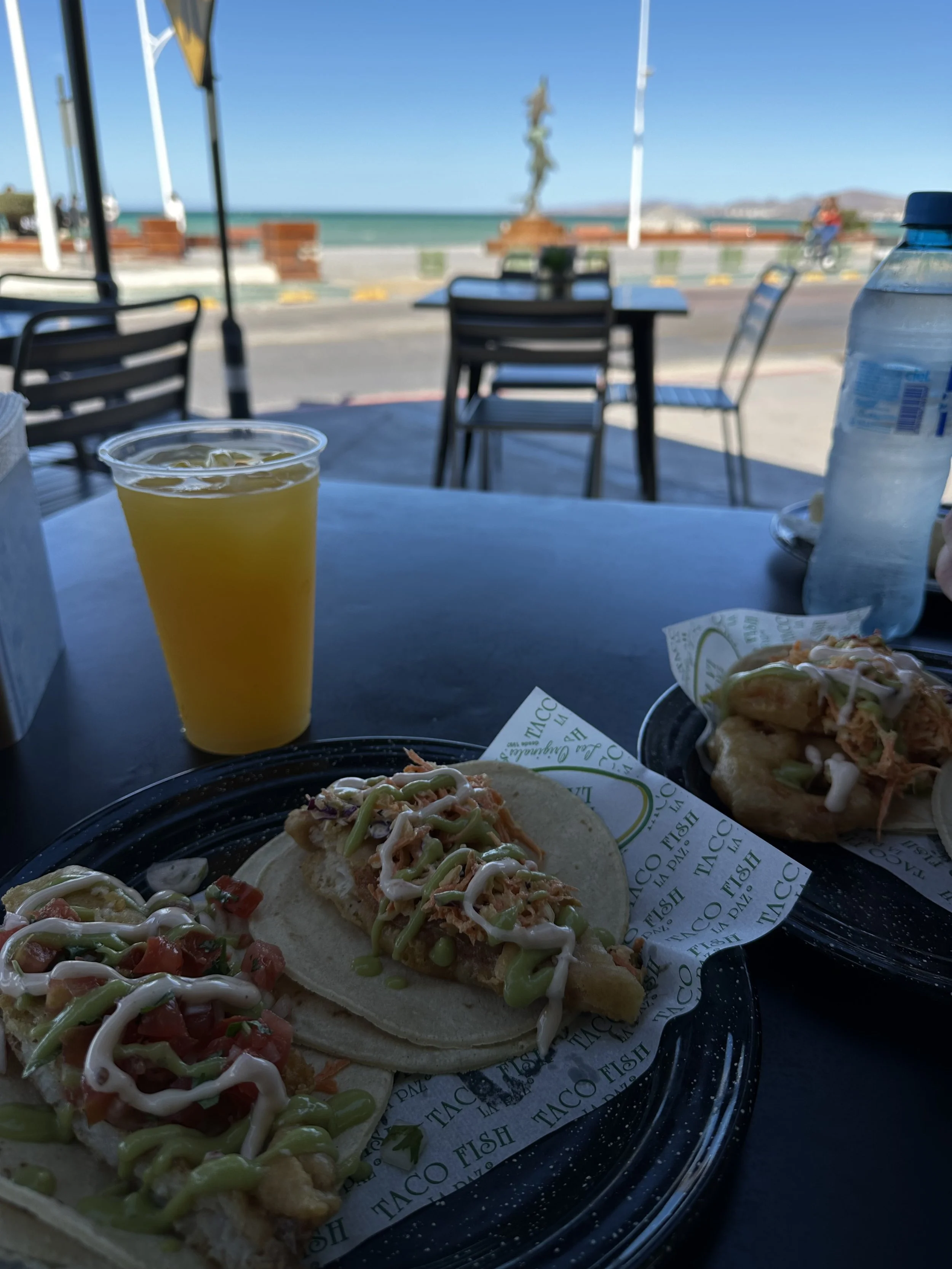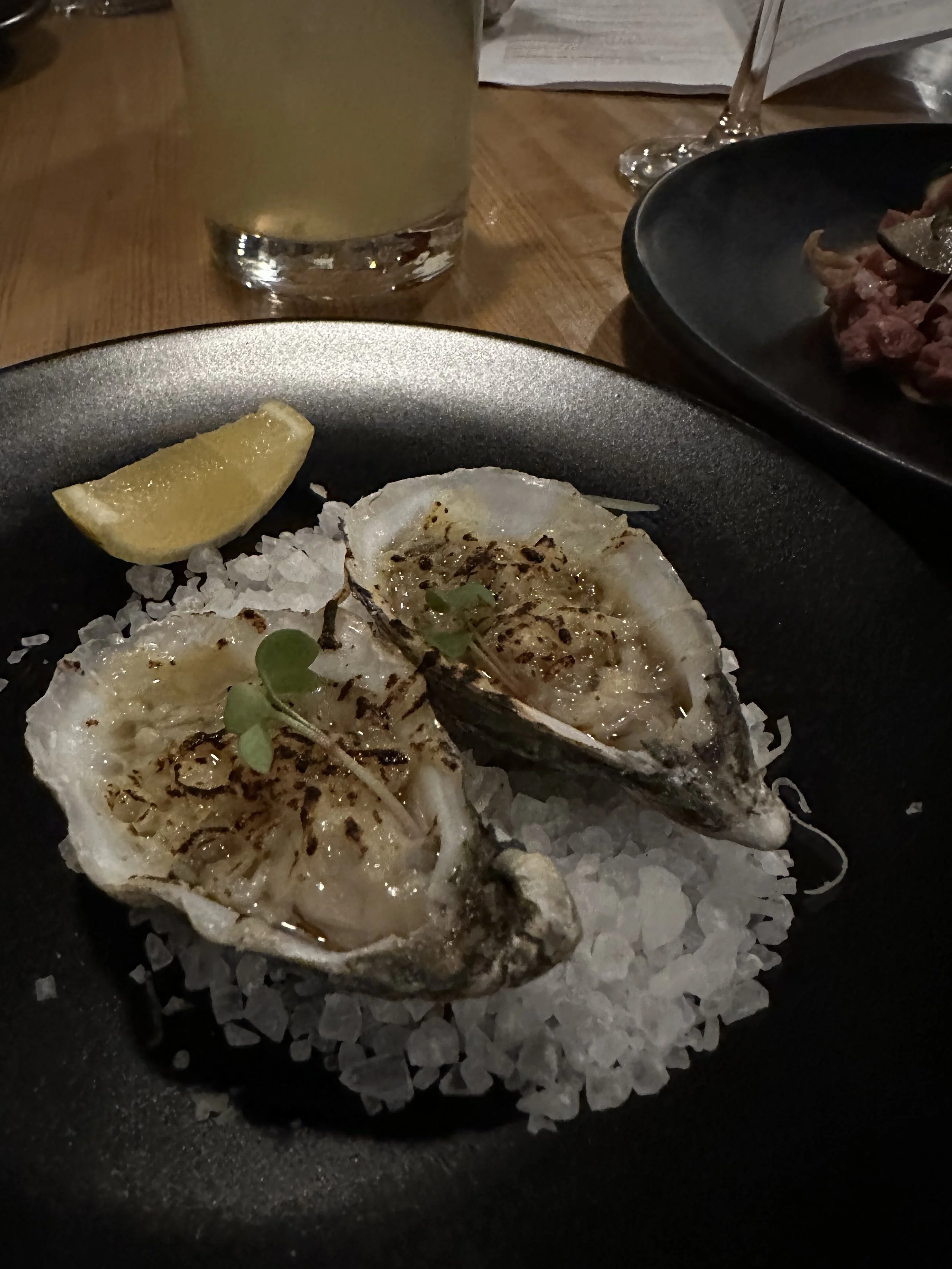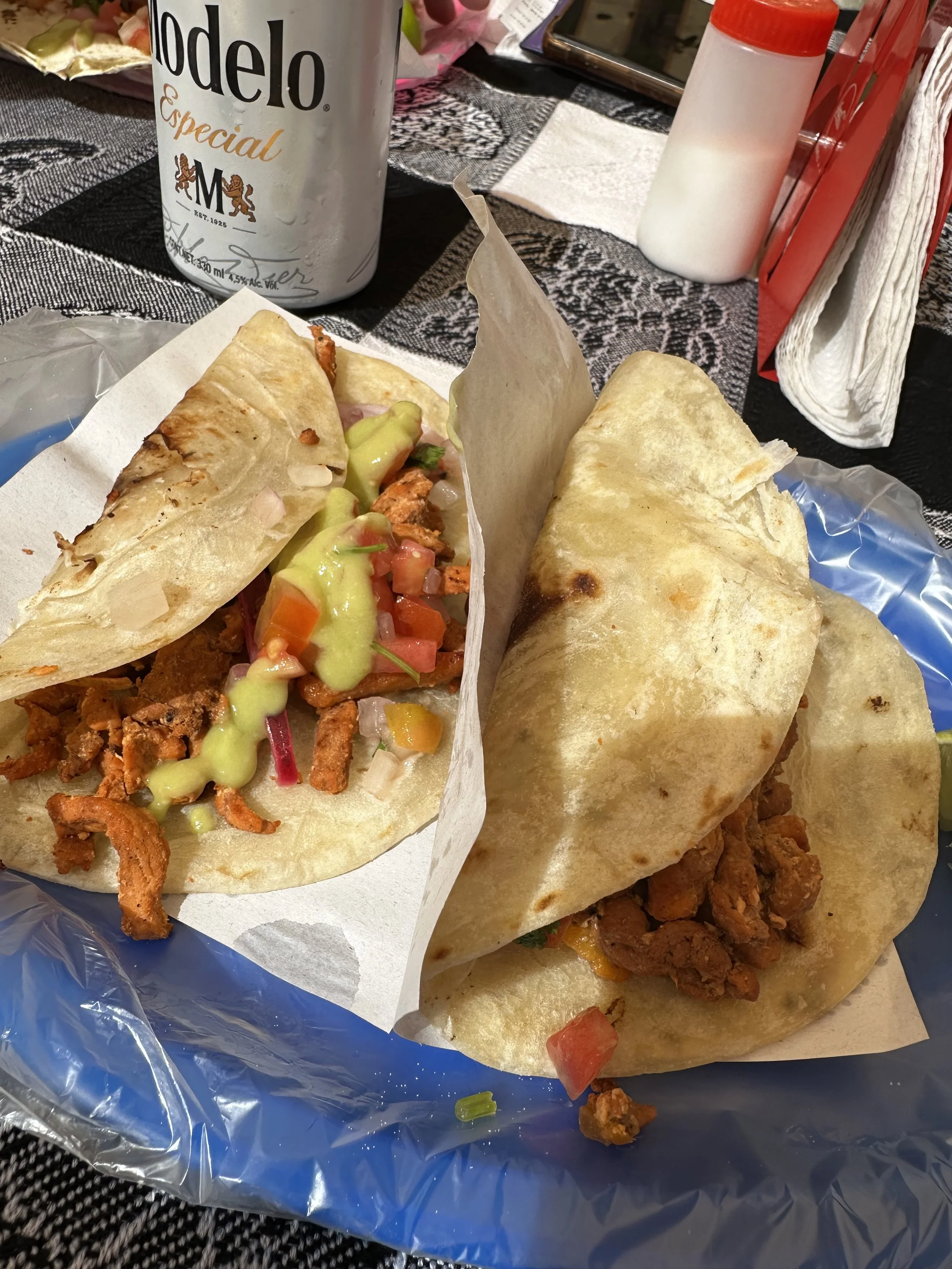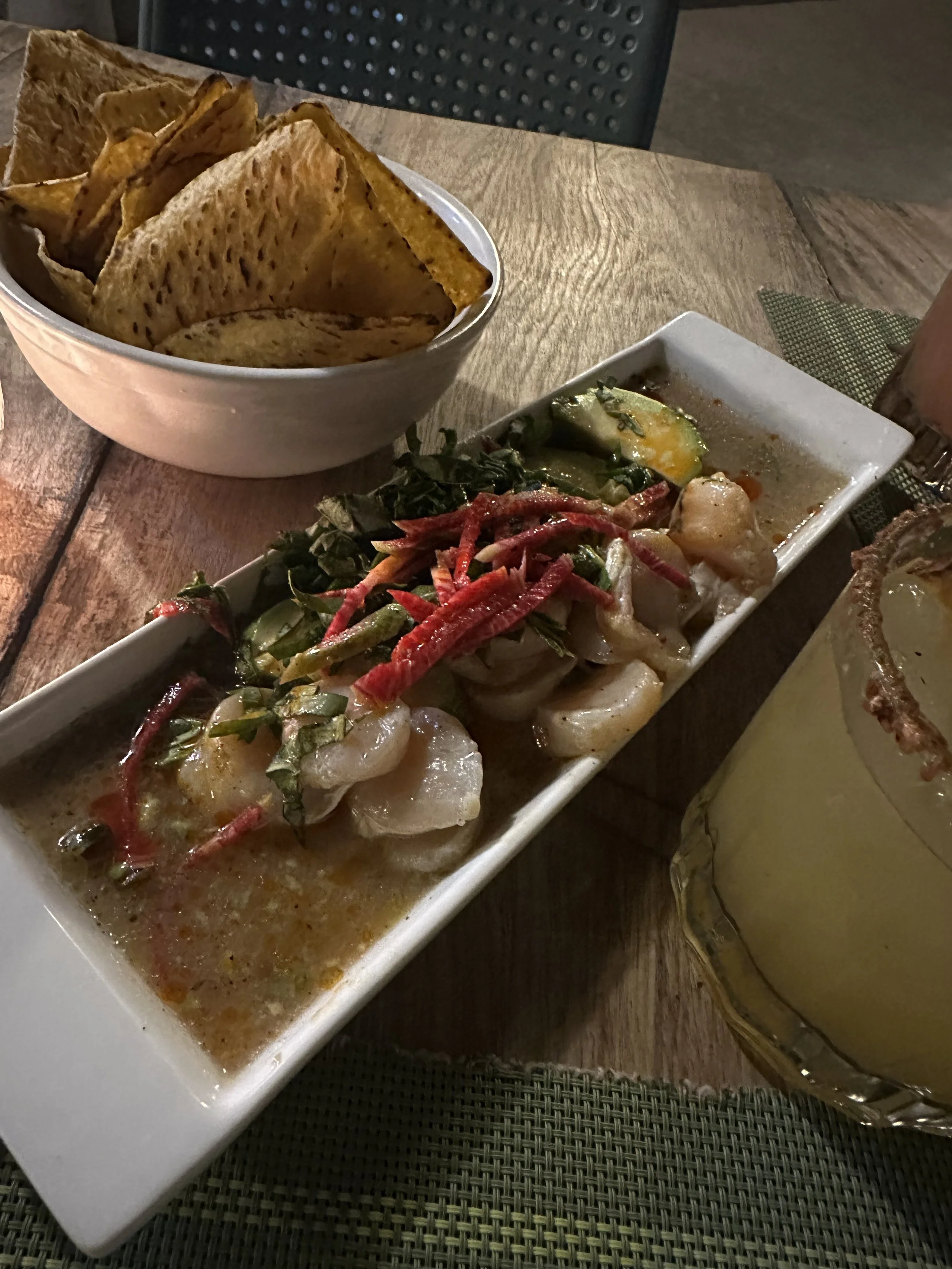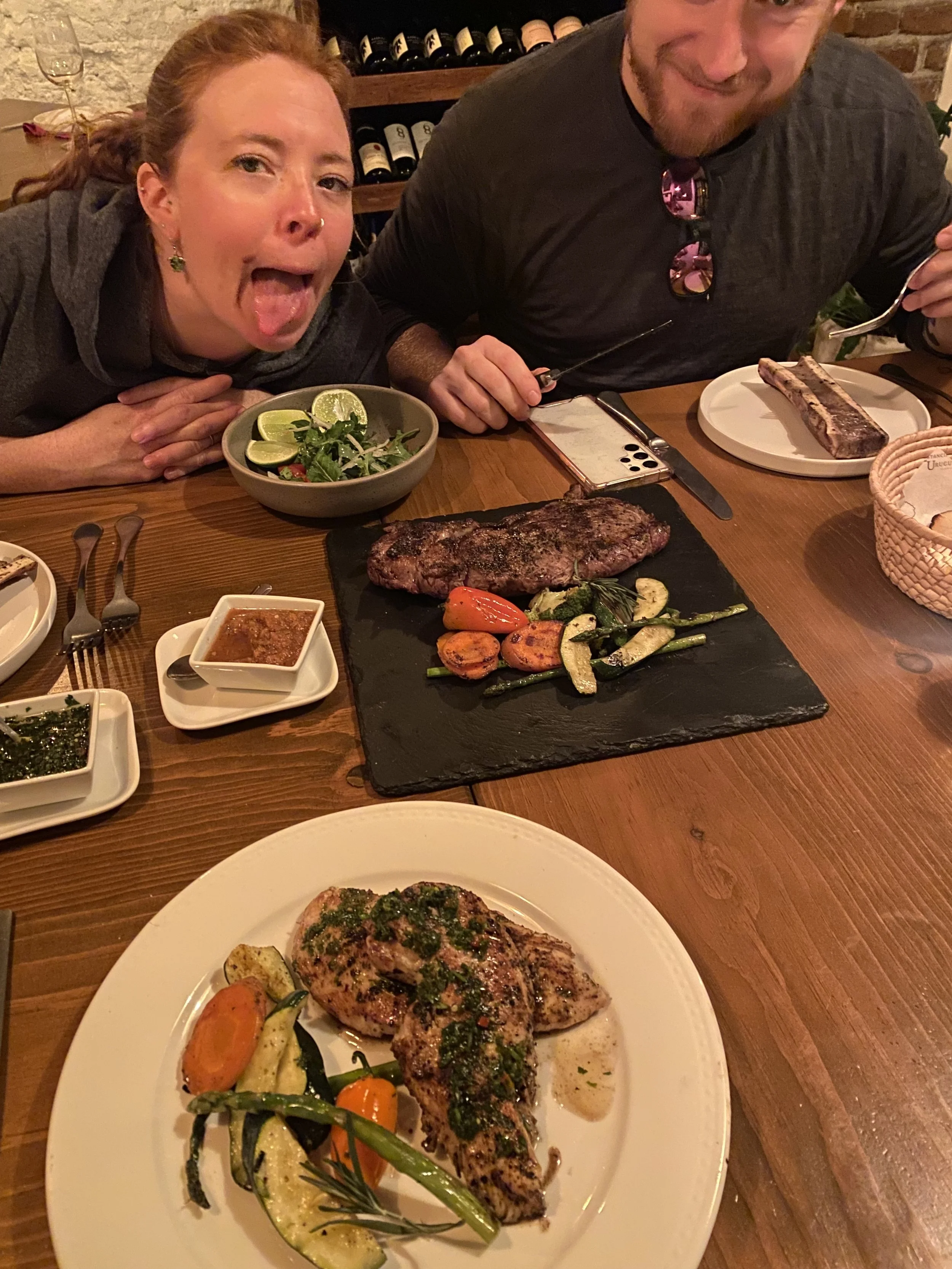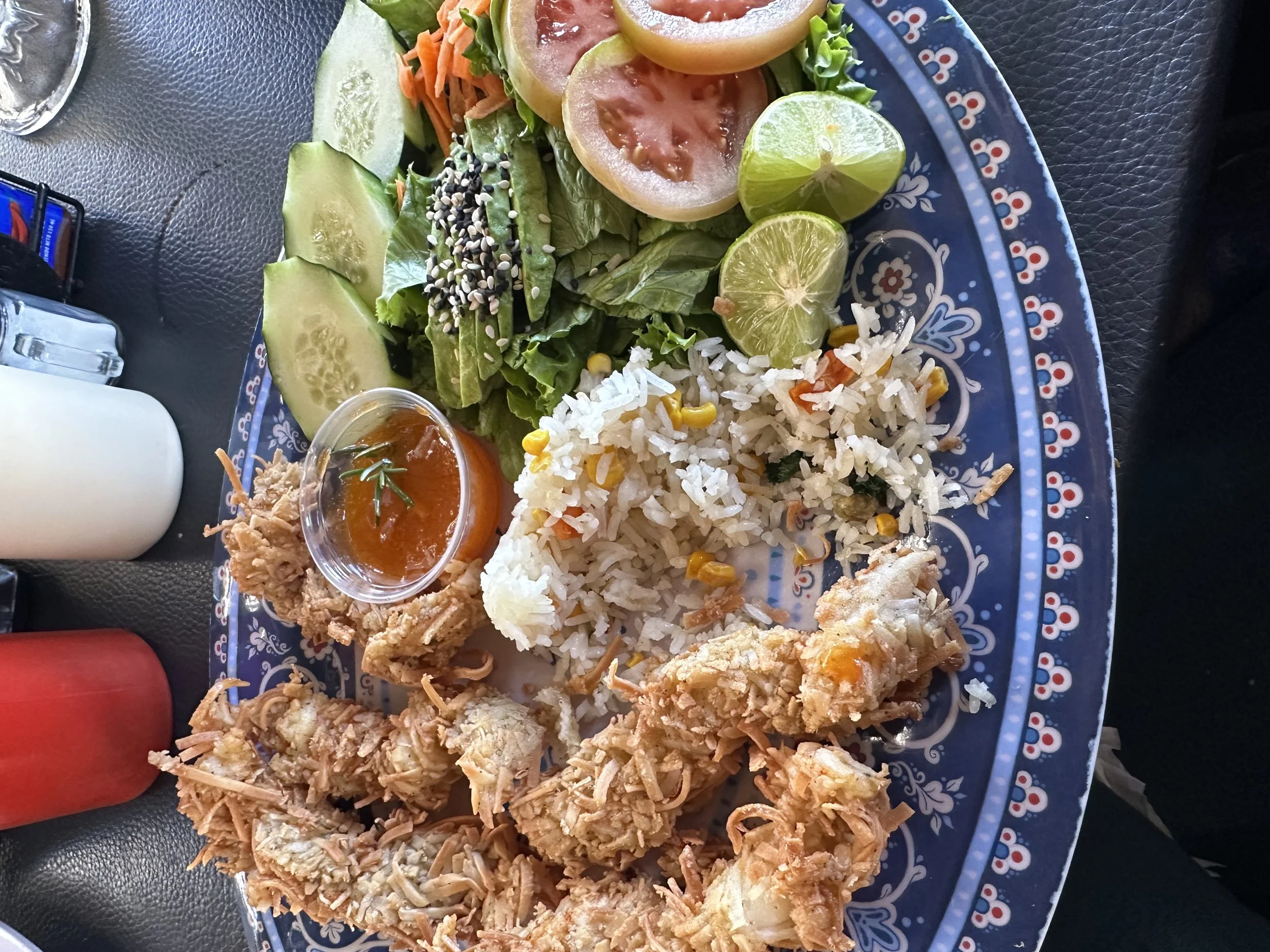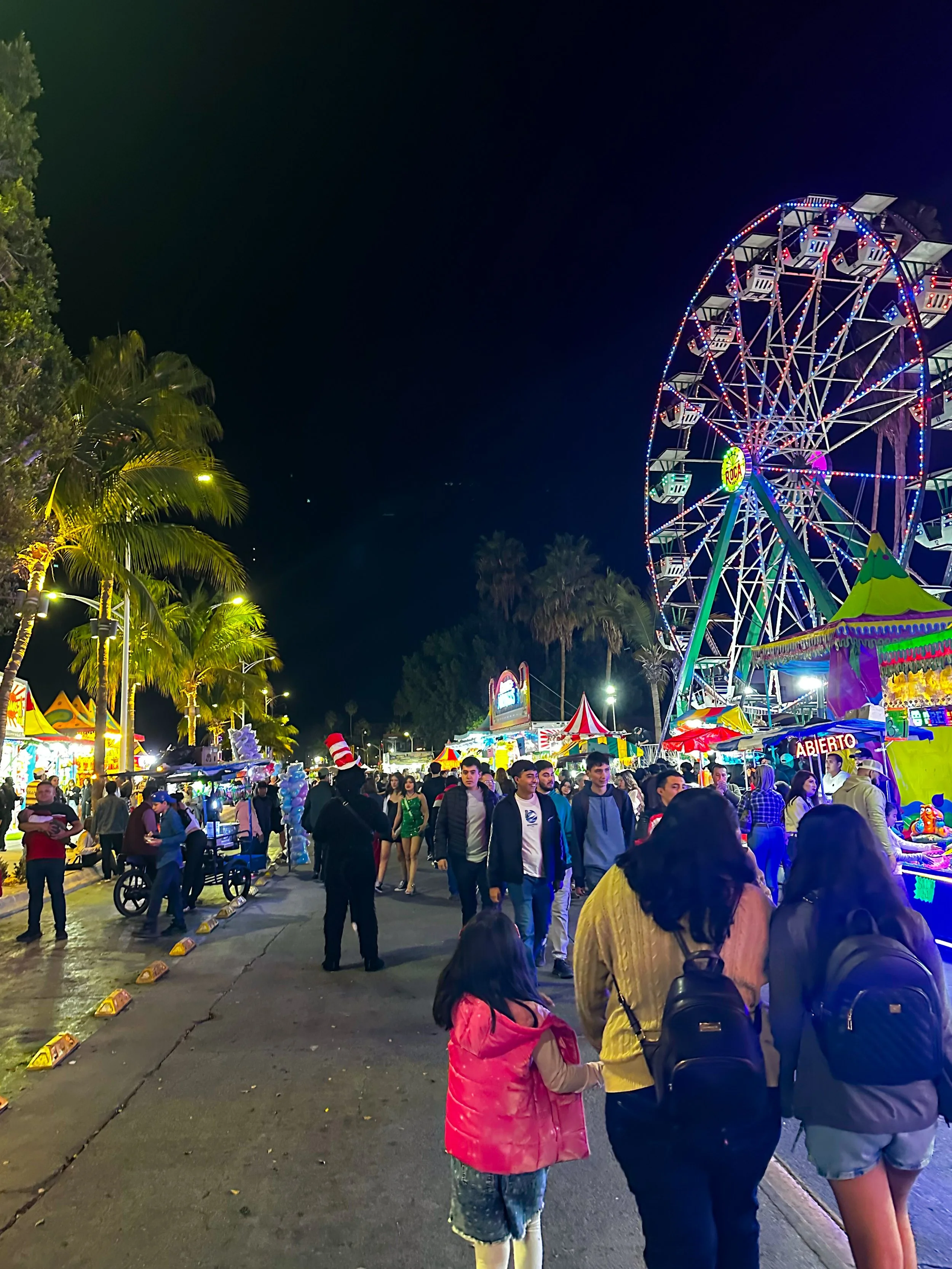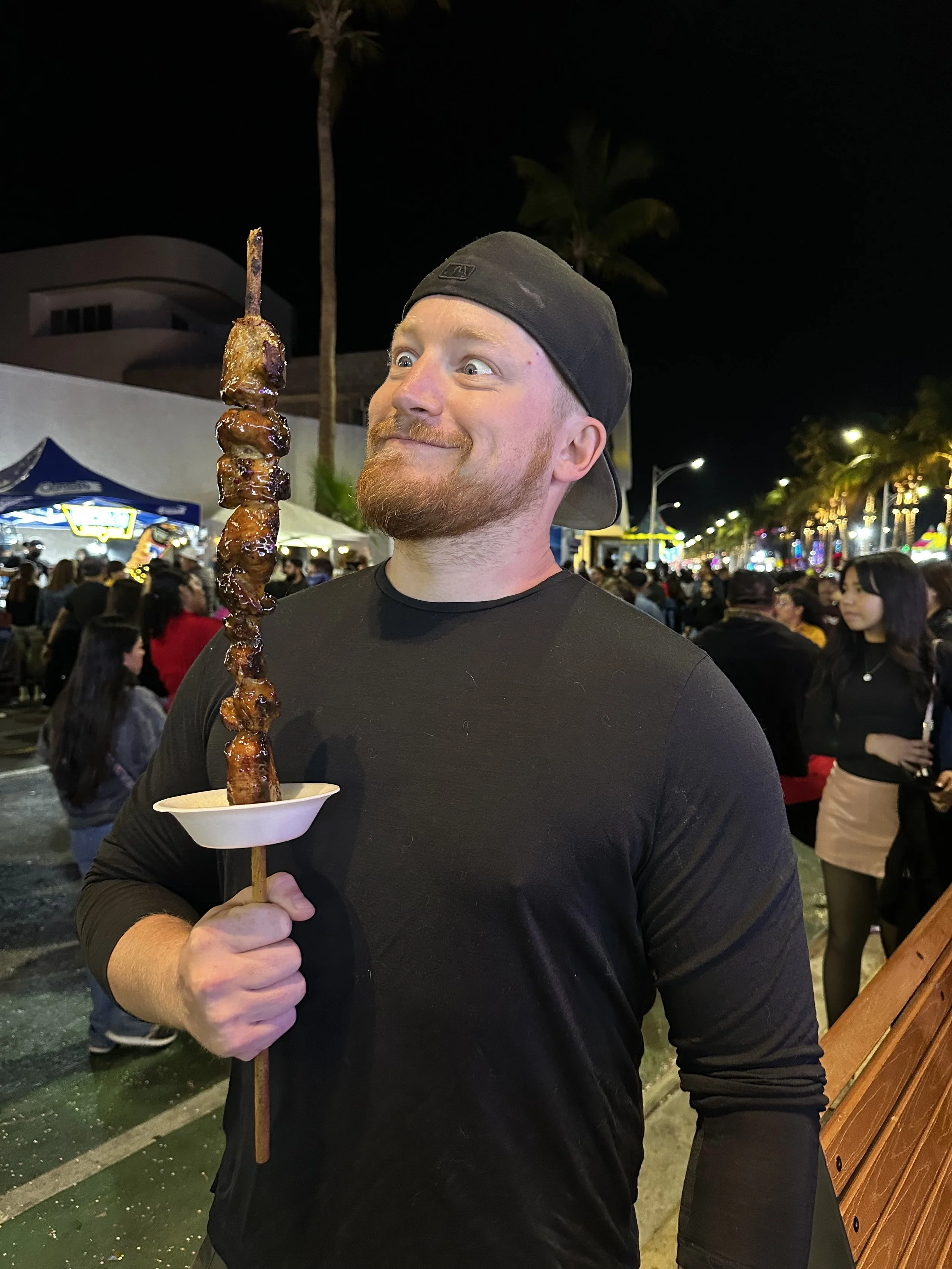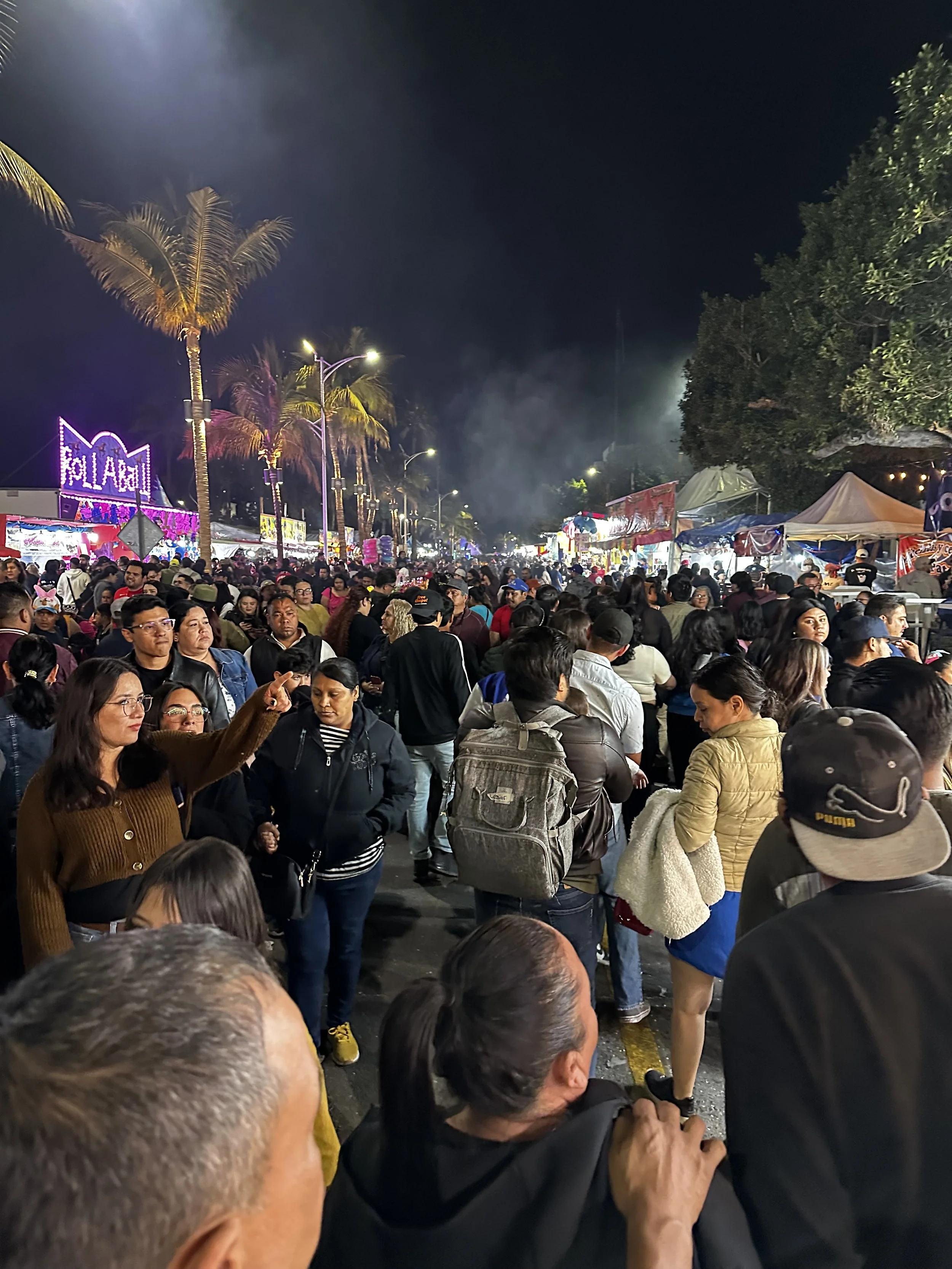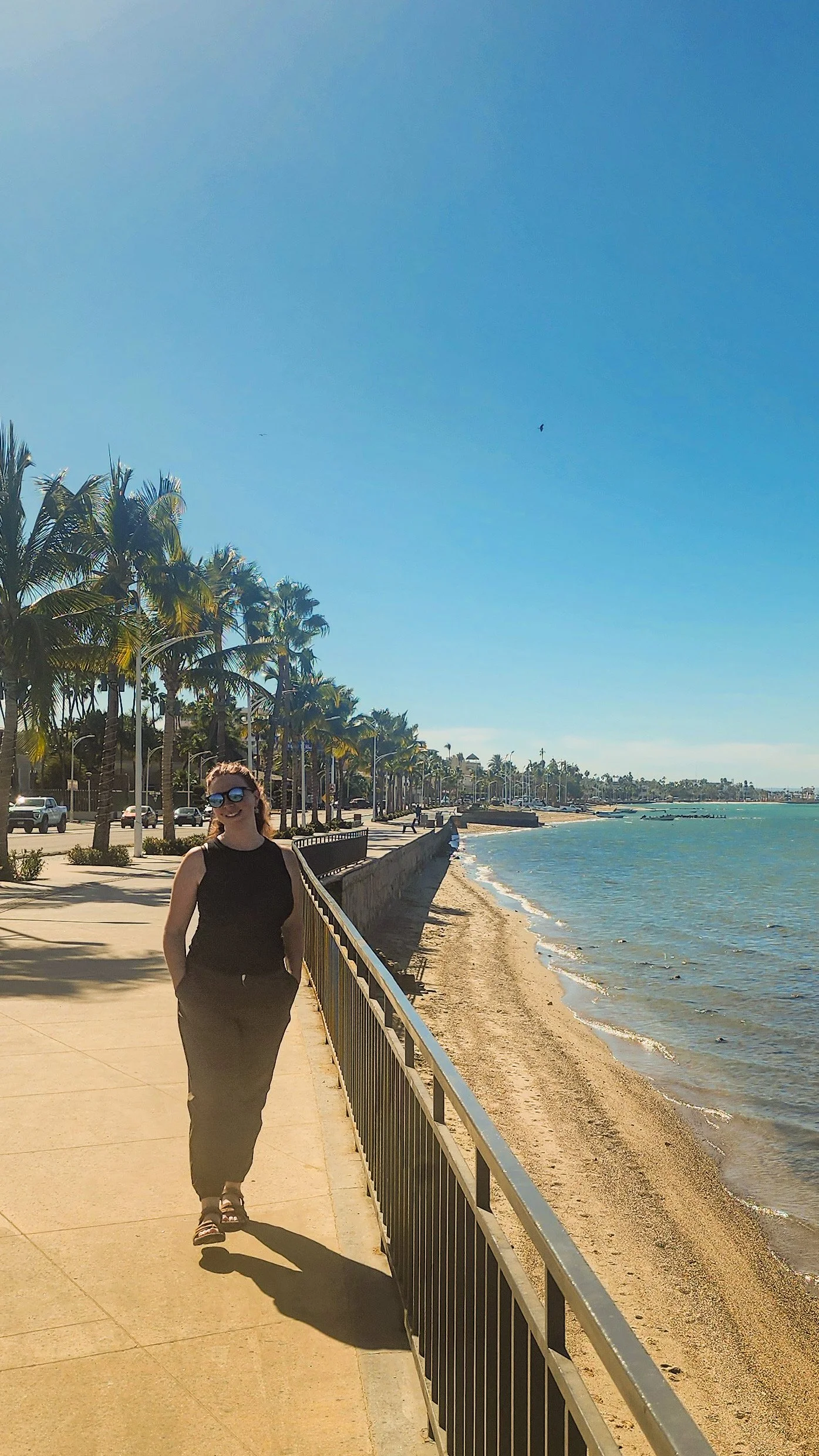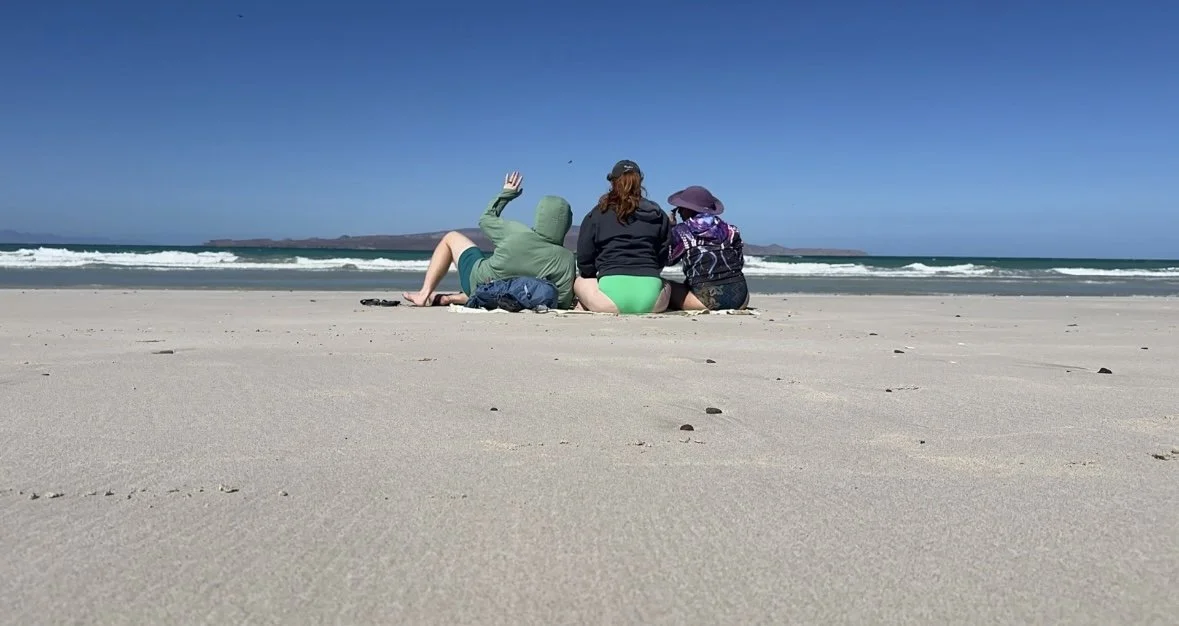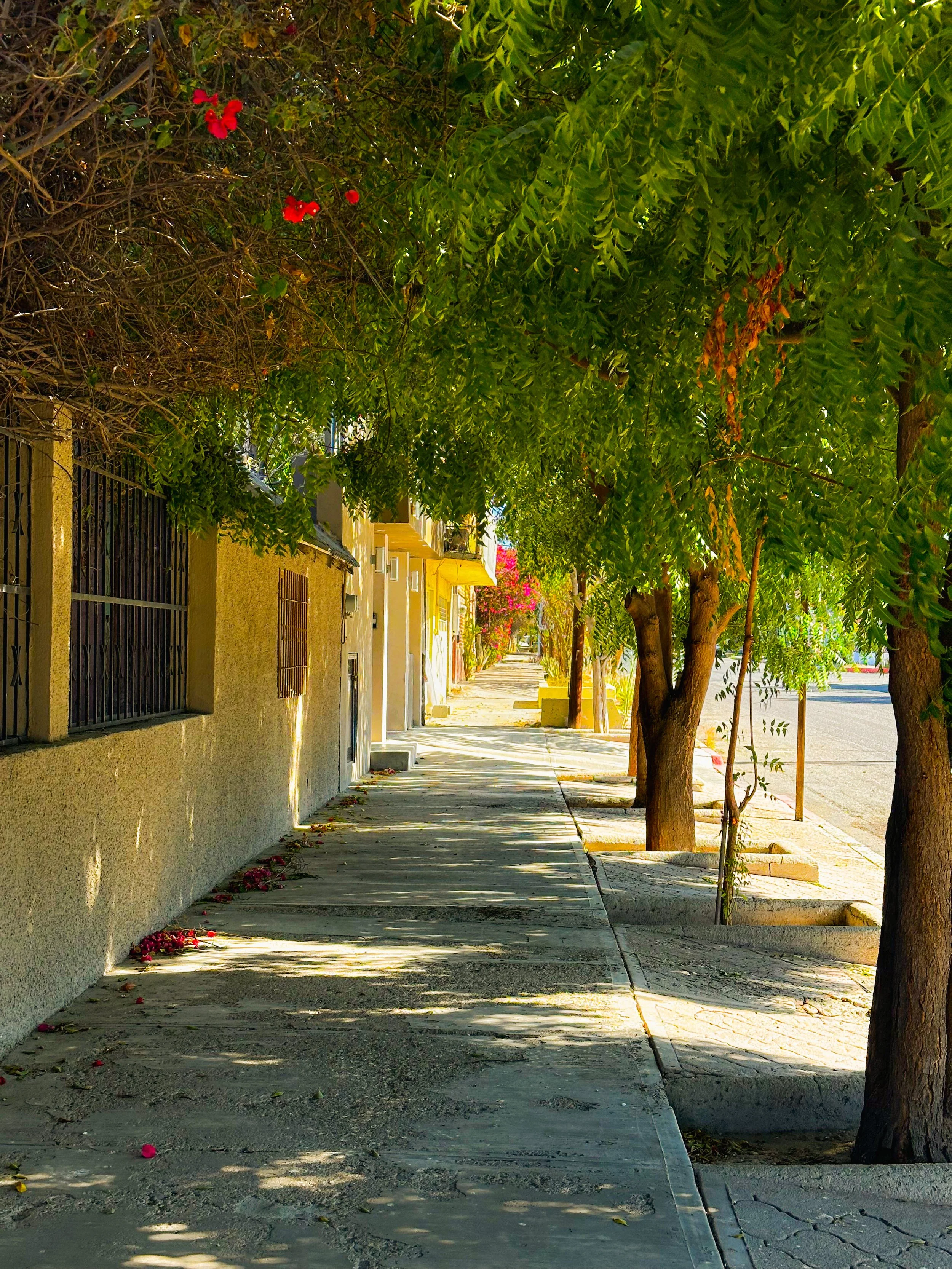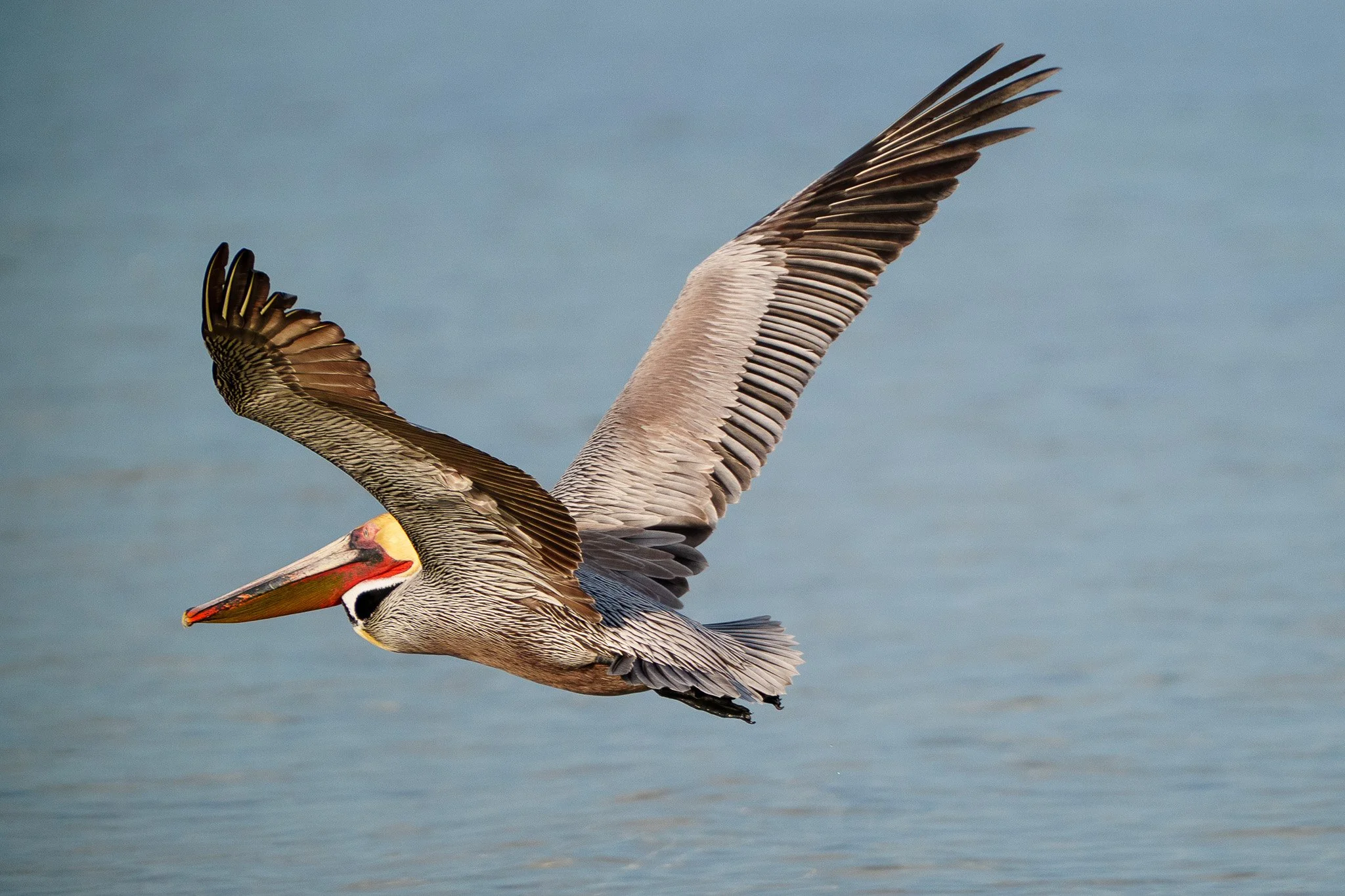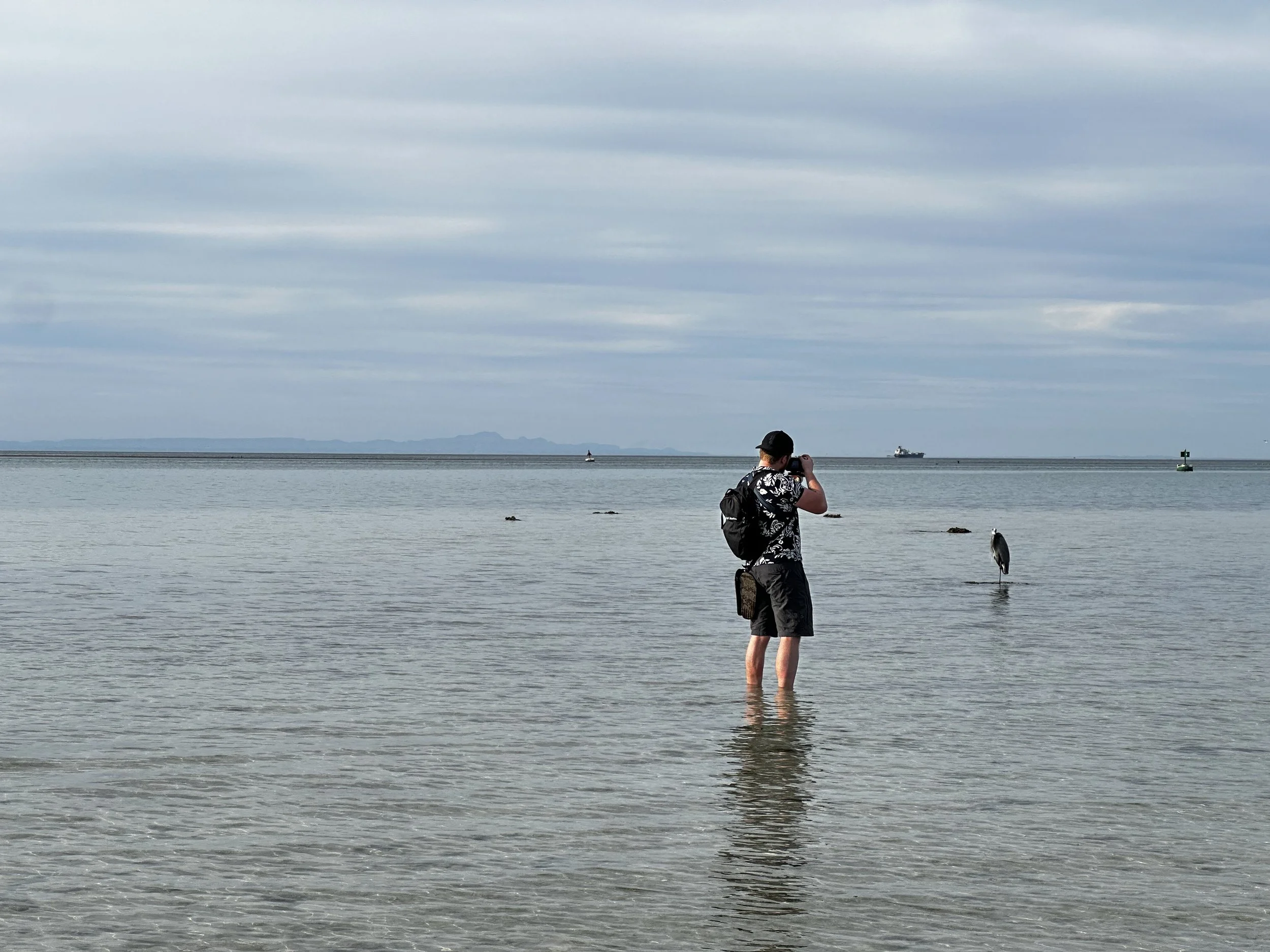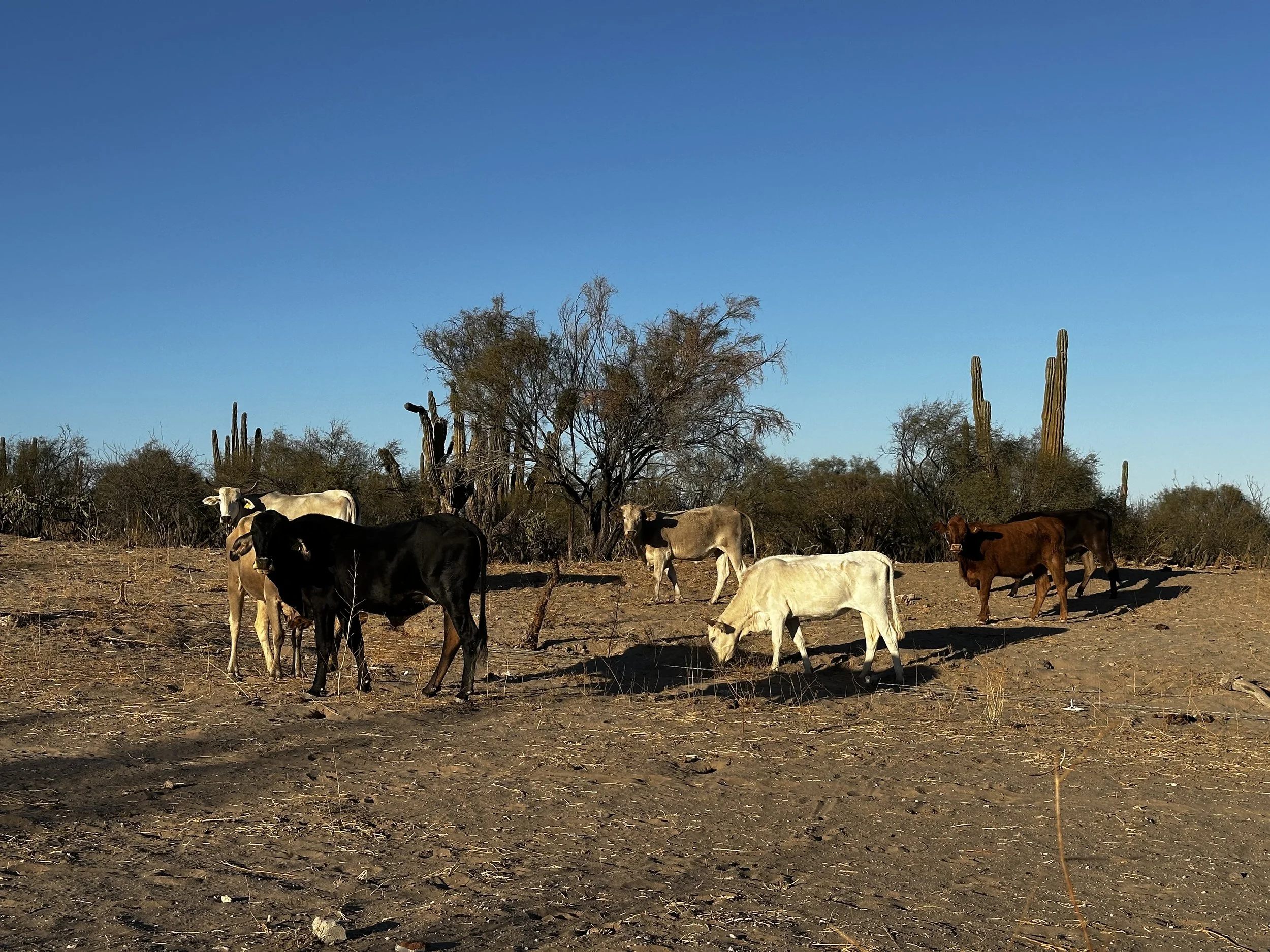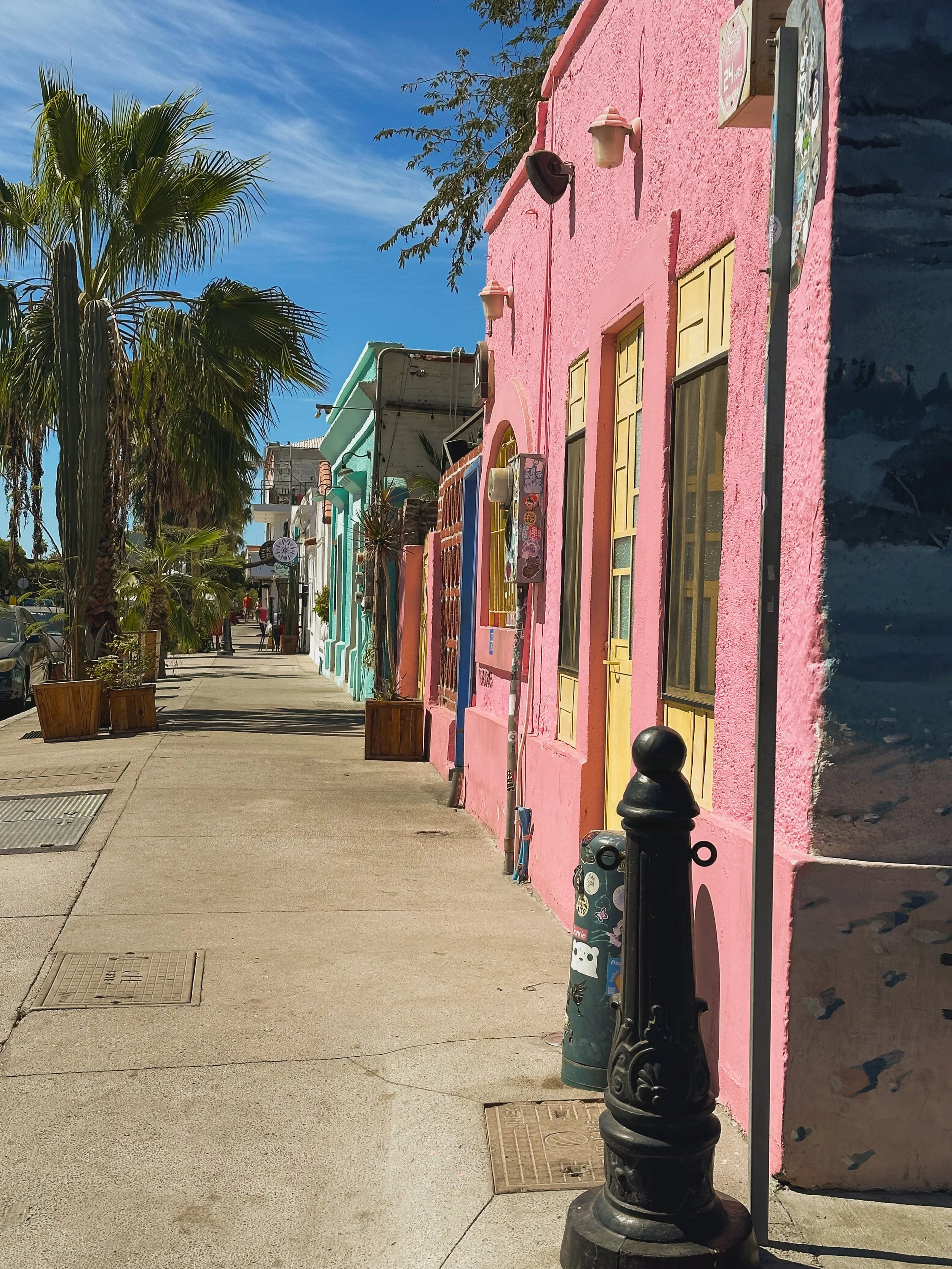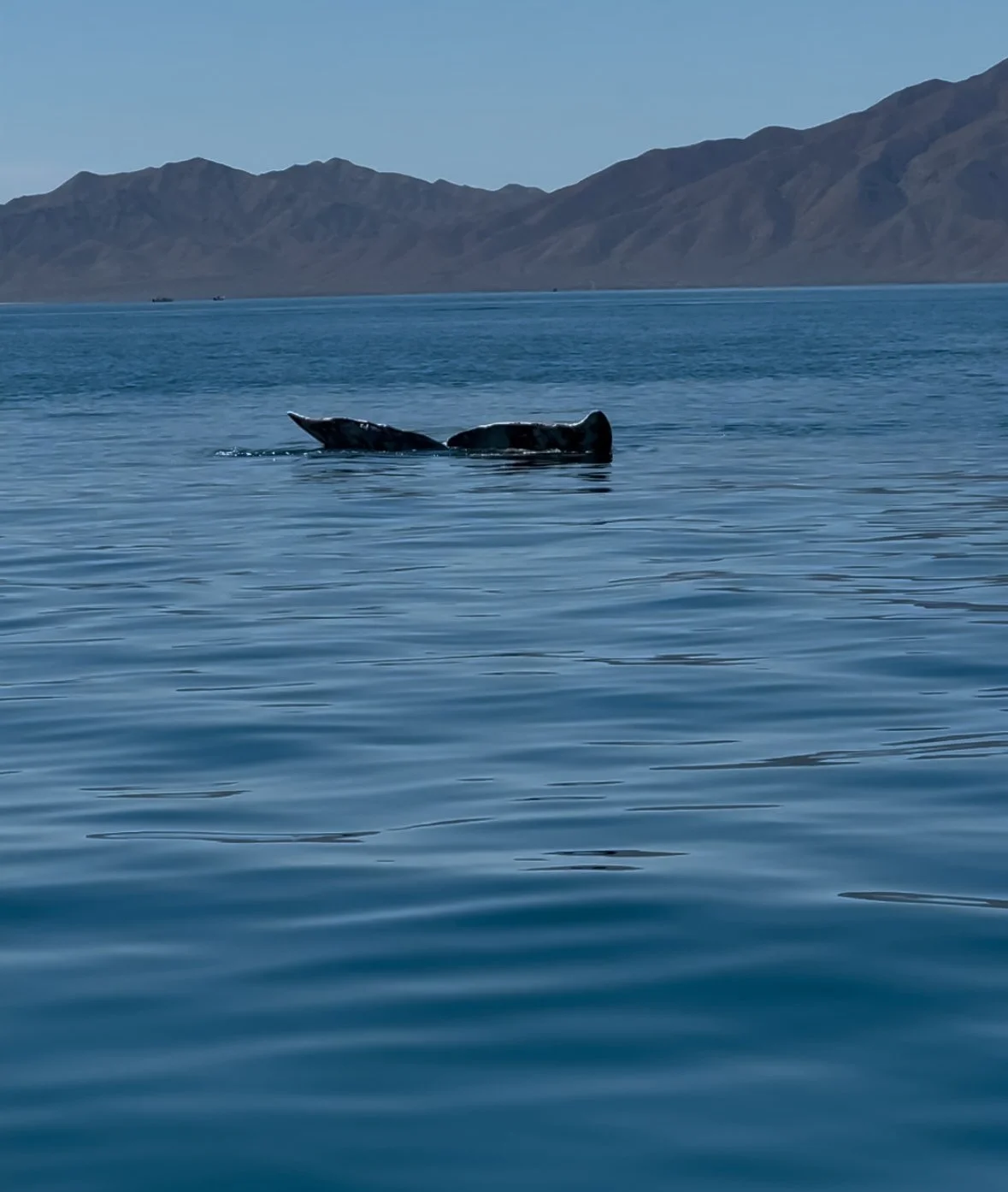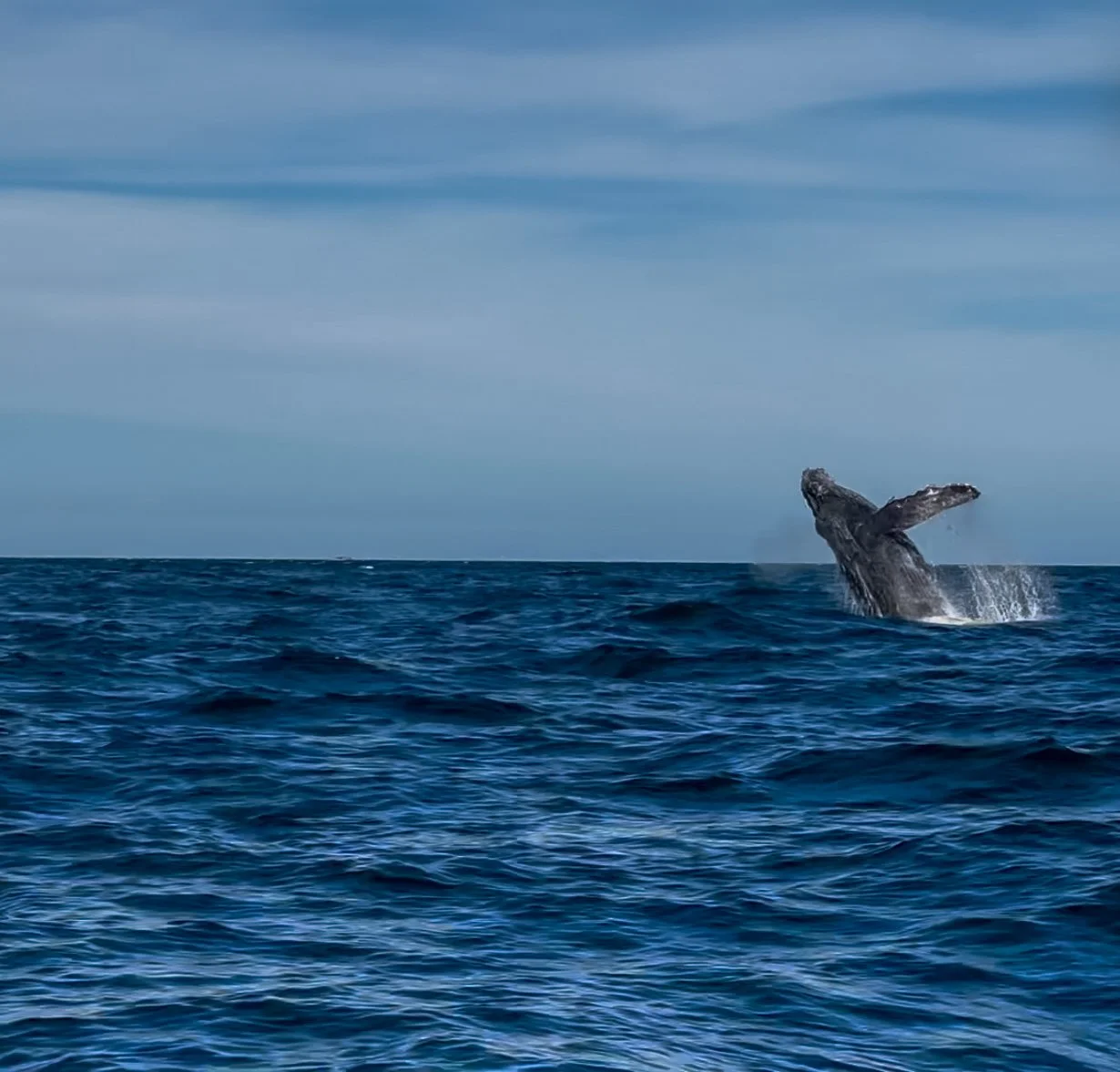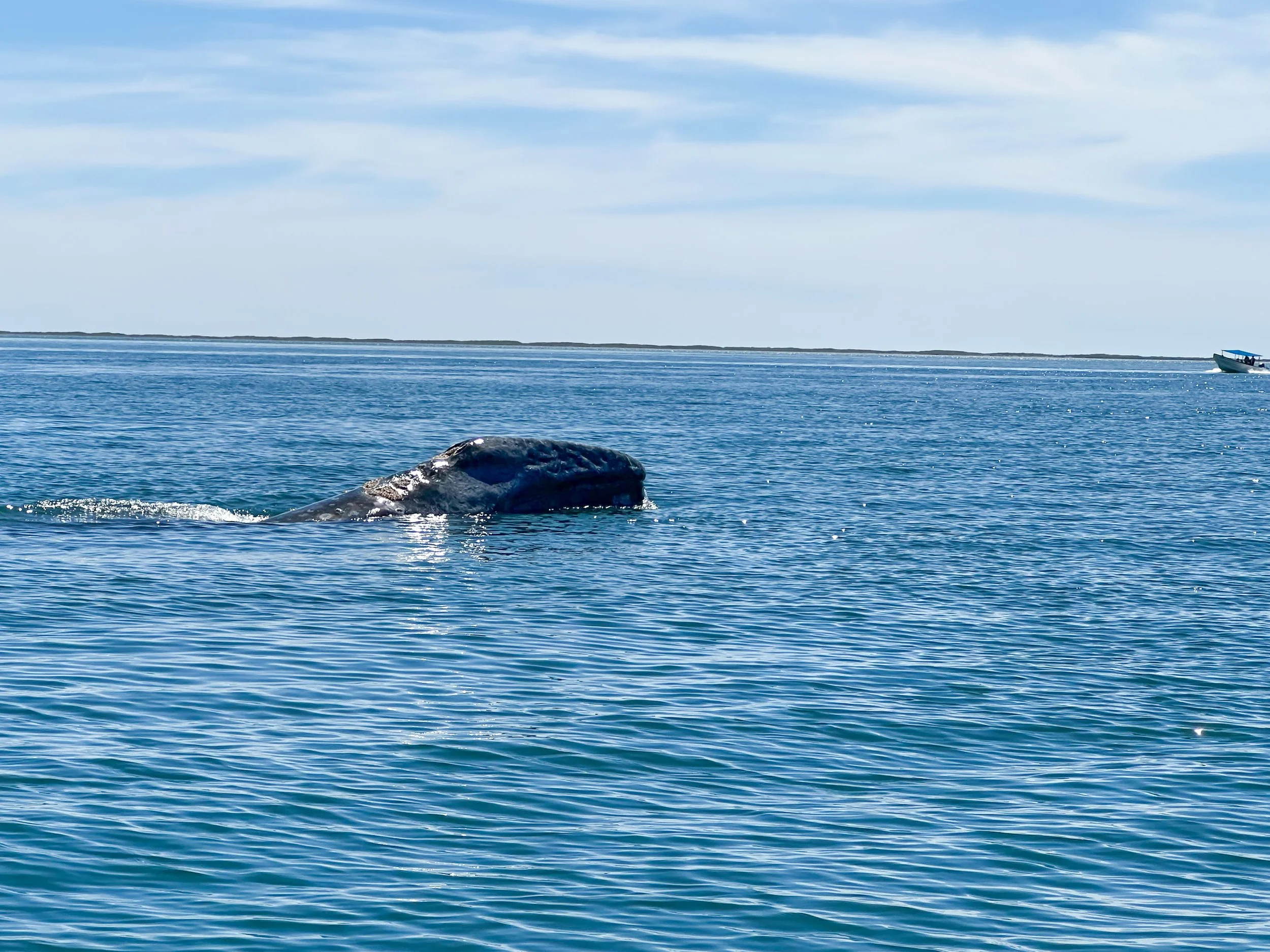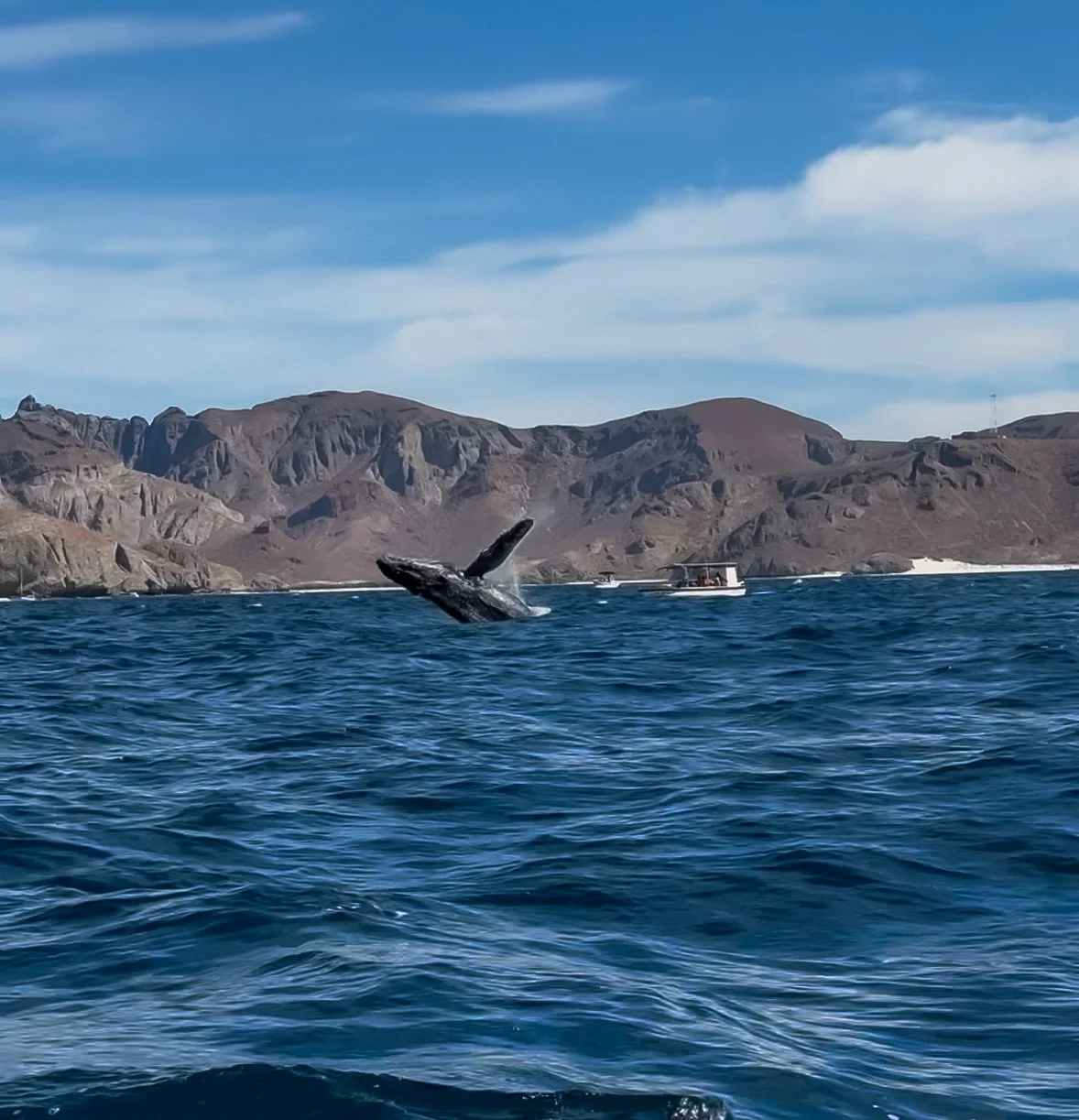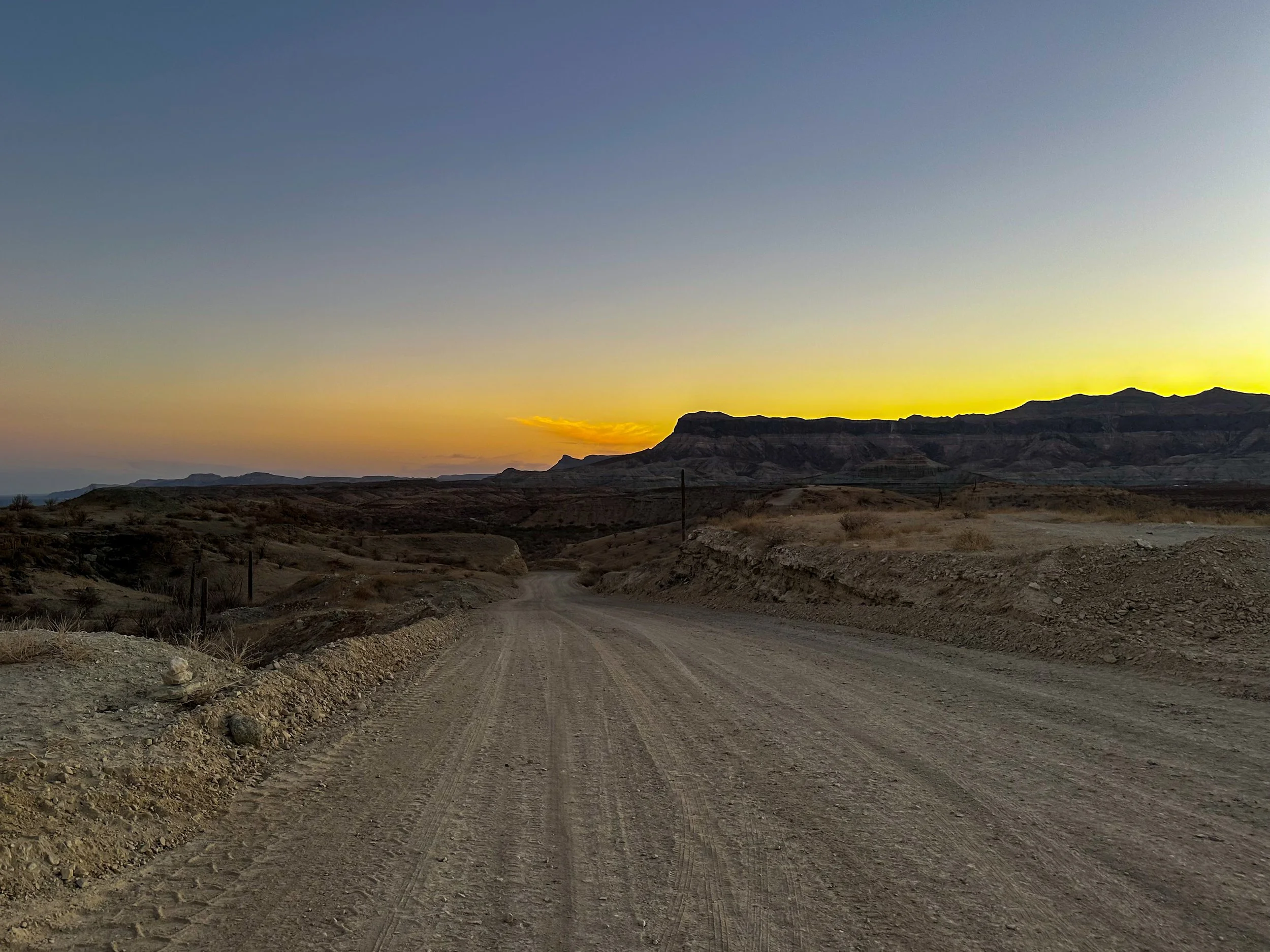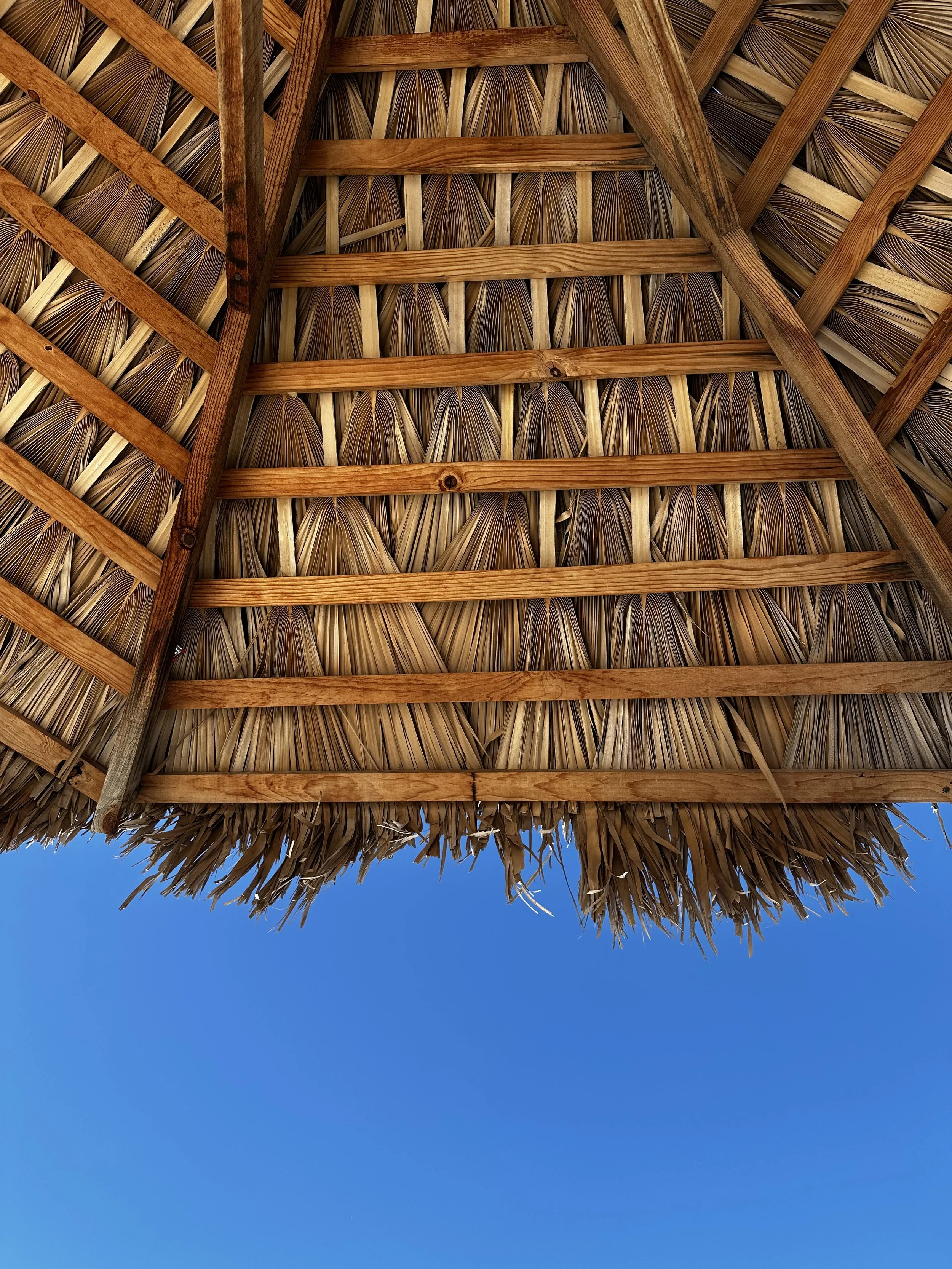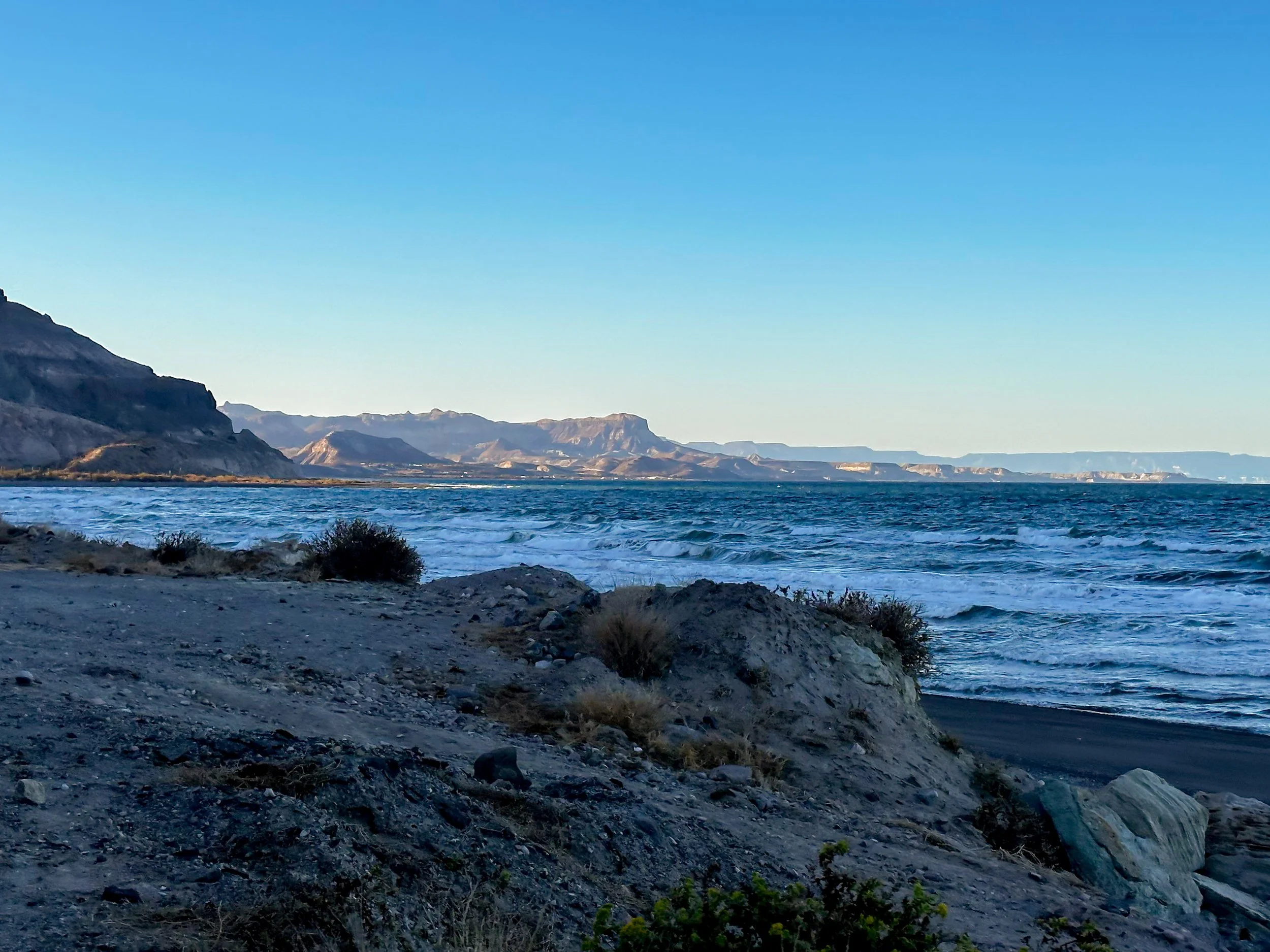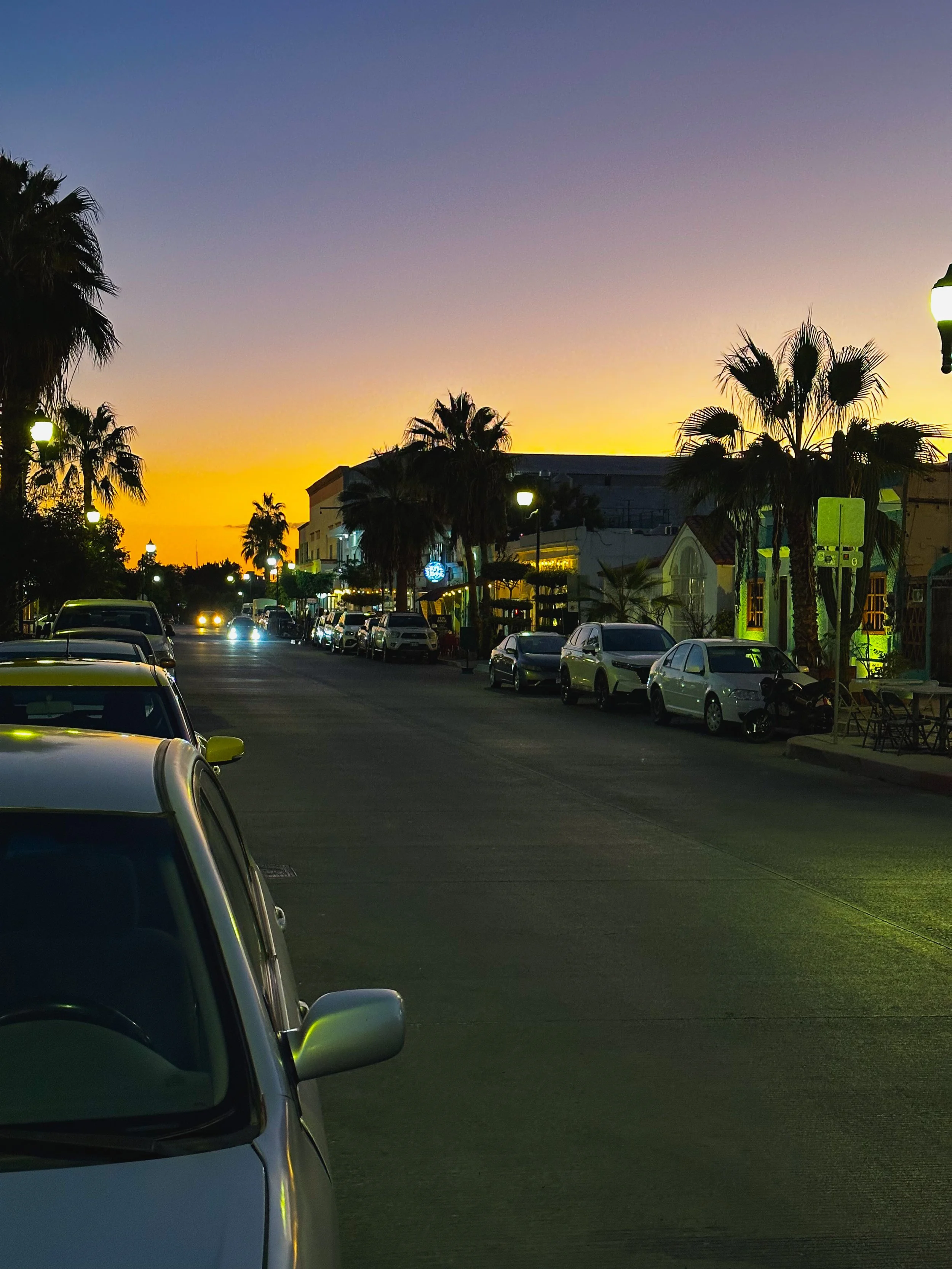Having a Baja Blast
A couple years ago YouTubers Kara and Nate released a vlog following their van life roadtrip through the Baja peninsula in Mexico. Rugged desert landscapes, fields of stars in the pristine night skies, and whales in one of the world’s top locations for spotting them. Add in the chance to spend more time in Mexico (a country we adore) and it was an easy choice to spend the winter following our USA Family Christmas Visits in La Paz, Baja California Sur.
We settled into a long term vacation rental in the neighborhood between Zona Central and Esterito, about a ten minute walk to the oceanfront boardwalk called the Malécon. Within a couple block radius from the apartment are multiple grocery stores, corner stores (OXXO), pharmacies (farmacias), laundromats (lavandarias), pet stores, and plenty of delicious cafes and restaurants. Finding accommodations in international cities I’ve never been to before has become a challenging aspect of my job over the last two years and I’d like to think I’ve learned how to find that sweet spot of comfortable, affordable, and well located.
Amy’s Advice Corner
Here’s how I decide where to stay in new locations:
Budget: Erik & I are budget conscious travelers and we’ve learned to set our budget for accommodation and cost of living (groceries, bills, and fun) first and foremost. Setting our budget first helps us set our expectations since sometimes that number automatically prices us out of entire countries (looking at you, Ireland) or allows us to live quite comfortably in a desirable location (lovingly gazing at you, Montenegro).
Research: Chances are you are traveling somewhere for a reason so head to google maps to locate & pin all the reasons you’re visiting; attractions, parks, restaurants, cafes, whatever. Now check out the neighborhoods that are close to the things you want to do and compare that with your budget. If you’re finding accommodations that are in line with your budget and have great reviews, you’re done! If you’re in one of the numerous cities around the world where a desirable location does not meet your budget, it’s time to start researching neighborhoods that are about 15-20 minutes outside of touristic centers. This is where that fabled sweet spot is in most European cities. These neighborhoods tend to be more affordable, more authentic, close to “real life necessities” like grocery stores, and still extremely well connected via public transportation. Always read reviews and ask other travelers about the neighborhoods you’re researching before booking!
Adapt: Psych yourself up to adapt to a new way of living. If you’re in a new country, chances are they do things a little differently than you’re used to in your home country and guess what? That’s okay! You’ll be fine! Do some pre-trip reading about what to prepare yourself for as far as local customs, laws, and ways of living. Chances are you may even find the new way of doing things is something you learn from and take with you (hello European towel warmers and Turkish bidets). When in doubt, stay flexible and do as the locals do.
A Snippet of Historical Context
Doing as the locals do is exactly what the Spanish Conquistadores and Missionaries did not do when they stumbled upon the Baja Peninsula and its original inhabitants; the Pericues, Guaycuras, and Cochimies. Some archaeological evidence like burial grounds have been discovered but unfortunately, most records are from the Spanish. The first European to land on the shores of the peninsula was an asshole named Ximénez who led a mutiny on the way to Baja California where he brutally killed the captain and those loyal to him, including some Franciscan friars. His brash behavior continued on shore where he and his men violated native women and forced natives to exploit their shorelines in search of pearl oysters to send back to the Spanish crown. The robes of Spanish royals and Italian popes were stiff with pearls stolen from Mexican oceans and were high in demand at this point. It didn’t take long for the local tribes to rebel against their exploitation and kill Ximénez & crew. Those who survived fled to modern day Jalisco where they were taken prisoner by another Spanish Conquistador named Nuño de Guzmán.
Meanwhile, Hernán Cortés (as in Sea of Cortéz), who had been conquering the Aztec Empire for quite a while at this point, caught wind that his rival, Guzmán, captured the ships of Cortés‘ subordinate, Ximénez, and wanted to go finish the beef Guzmán started. The Spanish crown didn’t want the drama so they told Hernán Cortés to head over to La Paz and see what’s up. Cortés arrived to La Paz and confirmed the death of Ximénez & crew at the hands of some rightfully pissed off natives. He quickly grasped power in La Paz and established numerous lasting Spanish colonies all over the Baja peninsula.
Today La Paz is both the capital and most populous city in the state of Baja California Sur. Foreign tourists and Mexicanos alike flock to its natural beauty and relaxing beaches. The culture in La Paz is one of art, community, and environmental activism. Recently, residents successfully halted the development of a cruise port that would have fed the local economy on one hand while simultaneously destroying precious habitat and further straining an already fragile infrastructure, specifically the fresh water supplies. Fresh water is facing a shortage thanks to pressures applied by mass tourism, saline intrusion into the local aquifers, and the extremely arid desert climate.
Cactus Calling…
La Paz sits in the Sonoran desert and is home to about 120 different species of cactus. Who knew there were so many?! My favorite cactus is the Cardón Cactus, AKA the Mexican Giant Cactus, the Elephant Cactus, or simply Pachycereus pringlei. The Cardón cactus is endemic to Baja California and is the tallest cactus species in the world with the record holder measuring a whopping 63ft tall and weighing over 50,000lbs! Like its North American relative, the Saguaro cactus, the Cardón is a long lived species with some individuals surviving for over 300 years! I loved walking among these old giants on our desert hikes. Imagine the stories they could tell…
There are frequent and affordable bus and collectivo services throughout La Paz and Baja California Sur (B.C.S.) but we mostly used rental cars for day use or weekend use with National Car Rental for our hikes and star gazing excursions. We used the AllTrails app to find/navigate our hikes, and the Stellarium app to identify celestial bodies.
Hikes that I highly recommend are:
Playa Tecolote - Playa Balandra (3.80mi, 492ft elevation) near La Paz
Malecon La Paz (2.90mi, 108ft elevation) in La Paz
Bahia Magdalena Trail (9.30mi, 1,210ft elevation) in La Paz
Circuito Bench (5.50mi, 725ft elevation) in Cabo Pulmo
Story time!
Erik used some dark sky maps to find a bortle 1 site, basically it’s hella dark and has very little light pollution for optimal star gazing. On the new moon we rented the cheapest little Nissan March, packed some snacks and warm clothes, then set out on the road. We drove for a little over an hour north of La Paz. We were stopped about half way at an agricultural check point (very common on Mexican roads) and told that we couldn’t go any further. The officer gave us some vague directions to an alternative route that was… an adventure. The pavement dissolved into some pretty gnarly washboard dirt roads and sometimes became random sand pits. I thought for sure our little car was going to fall apart and we’d be waiting forever for another car to finally drive by and help. But! The scenery was incredible, the little March somehow stayed in one piece, and Erik’s driving got us to our spot and back to La Paz safely. It’s another reminder that some of the best experiences are on the other side of fear and to just relax and go with it.
Diving In!
If the quiet stillness of the desert is one face of La Paz, its riotous oceans are the other side of the coin. Famed oceanographer Jacques Cousteau called the ocean environments surrounding B.C.S. “the aquarium of the world” for good reason. Eco-tourism surrounding the migrations of whale sharks & various whale species as well as scuba diving in one of the 244 UNESCO World Heritage Bio-Reserves, and getting the chance to play with bold sea lions at protected rookeries are the main drivers of tourism income.
Erik and I dove with Dive in La Paz Dive Shop and had the best experience diving around the protected island of Espiritu Santo. Dive times are limited to 45 minutes in order to protect the sensitive habitat. Jacques Cousteau didn’t let us down, the dives were packed with marine life! In a two minute span during our very first dive we chased a fever of mobula rays while sea lions bombed our bubbles only to turn around to see a green sea turtle sneaking away behind us. We spotted electric rays, sea stars, garden eels, seahorses, puffers, groupers, and tons of other fish. The dense biodiversity sang to my little marine biologist heart. <3
We also spent a weekend diving in the famed Cabo Pulmo National Park with Cabo Pulmo Diving. While the conditions weren’t as favorable as Espiritu Santo (10ft viz had me feeling like I was diving back in San Diego), we were surrounded by whales singing to each other in all directions. Cabo Pulmo’s waters have been protected for over 30 years, making it a favorable place for whales to visit every winter to breed and raise their calves. Oh, and by protecting their ocean habitats they also saw a fish density increase of 460%.
Check out my dive in Cabo Pulmo and more on my YouTube channel here! For the best chance to hear the whales serenading us I recommend listening with headphones. More dives will be uploaded at irregular intervals because I don’t respect The Mighty Algorithm but feel free to subscribe for surprise videos!
Food Break
What better way to reward ourselves after a full day of diving or hiking than with incredible Mexican food! La Paz is bursting with fresh, delicious, and authentic restaurants. Mariscos (seafood), Mexican, sushi, Uruguayan, and more… there’s something for everyone. As per usual, I advocate for everyone to follow their nose during an aimless wander to find yummy food but here are a couple suggestions to get you started:
Estancia Uruguay’s
Nim
Rocco Cafe
Mariscos El Molinito
Claro Fish Jr
J&R Ribs Costilleria
El Azteca
La Mentita
Celebrating Carnival
Back in 2022, Erik & I were living in our very first international country, Portugal, during the month of February. As Americans, we never gave much thought to Carnival so when decorations started appearing all over Lisbon and celebrations began we were pretty confused and missed out on most of the festivities purely because we had no real idea what was happening until they were over. After some googling and accidental festival joining, we figured out that being in a country that celebrates carnival is stupid fun and we wouldn’t miss out on another if we could help it!
Carnival is a series of street fairs, parties, and parades with extravagant performances and flamboyant costumes, not to mention an abundance of alcohol and junk food. It’s a celebration where folks revel in excess before Christian’s give up whatever they’ve decided to sacrifice during Lent. Carnival releases the soul to its indulgences without the hindrance of consequences so that it can be a more sensible member of society through the rest of the year.
Carnival celebrations look a little different in every city worldwide. La Paz held a street fair with parades, rides, booths with games I grew up seeing at the state fair, enough junk food (and tequila) to last a lifetime, and multiple stages where musicians and dancers performed.
Mexican Quirks
Living in Mexico comes with its own quirks to keep in mind. The most obvious is drinking water. It’s inadvisable to drink water straight from the tap so most people grab water jugs from the grocery, OXXO, or a delivery service. It’s totally fine to brush your teeth, shower, and wash your produce in the tap. Another quirk are the sidewalks... They’re uneven at the best of times, scattered with holes and other fun booby traps at the worst of times.
Quirks specific to La Paz that we noticed in our two months there:
There are So. Many. Dogs. Seriously. Dogs in every yard, packs of dogs roaming the streets, people walking their dogs on and off leash on the beaches and hiking trails and the Malecón. Everywhere. Hilariously, this also resulted in the best group howl I’ve ever had the delight of hearing. A siren would sound and seconds later the whole city was filled with hundreds of puppies howling. So cute.
Stop signs are optional and there are very sneaky topes (speed bumps) when you least expect them. Stay alert when driving!
Spanish is (obviously) the dominant language. In some Mexican cities like Cancun, Playa del Carmen, CDMX, English is super commonly spoken but in La Paz you’ll be met with español. Having some Spanish in your vocabulary will serve you well here. That being said, having a few phrases in the native language of whatever country you’re visiting is a must!
La Paz is very dusty. You’re in the desert!
And a whale of a time was had by all…
So, we came to La Paz and we hiked, we star gazed, we dove in the world’s aquarium, we tested our tastebuds with flavorful Mexican spice, we danced at Carnival, but… did we accomplish my singular goal of seeing whales?
You bet.
Baja California Sur is one of the best regions in the world to see a multitude of whale species including gray, humpback, blue, sperm, fin, minke, and even the occasional orca. During the winter season, whales make their way to the nutrient rich waters surrounding the Baja peninsula to feed, mate, and rear their young. The unique marine topography provides calm, shallow, lagoons that shield calves from would be predators and deep trenches full of food.
The best places for whale watching excursions is in the San Ignacio Lagoon where gray whales are likely to rub themselves along boats and the Sea of Cortez near Loreto where you’re likely to encounter an assortment of whale species. We were also told about a massive pod of sperm whales making their way around La Ventana by a couple of other divers. Erik and I were lucky enough to spot gray and humpback whales on a couple of our dive days around La Paz and Cabo Pulmo but we also booked a whale watching excursion with Choya Tours who took us to Puerto Chale, a calm lagoon that was inundated with sleepy gray whales. Our guide was a dive master and a marine biologist who provided a wealth of fun facts and regional context. If we were to do it all over again (and I definitely hope we do) I would carve out more time to visit more sites for even greater opportunities to see whales up close.
The two months we spent in Baja California Sur whipped past us in the blink of eye and we left feeling like we had barely spent any time at all there. I know in my heart that we’ll return some day, but for now we’ll take our sun soaked memories to our next adventure and say hasta la próxima, La Paz!
